- Types of Sailboats
- Parts of a Sailboat
- Cruising Boats
- Small Sailboats
- Design Basics
- Sailboats under 30'
- Sailboats 30'-35
- Sailboats 35'-40'
- Sailboats 40'-45'
- Sailboats 45'-50'
- Sailboats 50'-55'
- Sailboats over 55'
- Masts & Spars
- Knots, Bends & Hitches
- The 12v Energy Equation
- Electronics & Instrumentation
- Build Your Own Boat
- Buying a Used Boat
- Choosing Accessories
- Living on a Boat
- Cruising Offshore
- Sailing in the Caribbean
- Anchoring Skills
- Sailing Authors & Their Writings
- Mary's Journal
- Nautical Terms
- Cruising Sailboats for Sale
- List your Boat for Sale Here!
- Used Sailing Equipment for Sale
- Sell Your Unwanted Gear
- Sailing eBooks: Download them here!
- Your Sailboats
- Your Sailing Stories
- Your Fishing Stories
- Advertising
- What's New?
- Chartering a Sailboat
- Cruising Yachts 40' to 45'

Popular Cruising Yachts 40 to 45 feet Long Overall Their Physical Properties & Key Performance Indicators
Welcome to this ever-growing gallery of some of the most popular cruising yachts between 40 and 45 feet (12.2m to 13.7m) long overall. But it's more than just a gallery - every image is a link to a page setting out the boat's physical properties, key performance indicators and other data.
Cruising Yachts featured on this page...
With plenty of room for a cruising couple to live aboard comfortably, production cruising boats within this size range are understandably very popular with long distance sailors.
However, marina charges worldwide seem to take a bit of a hike at 12m, so be warned...
If you'd like to submit a suitable image of a cruising yacht (yours perhaps?), please click here to send your pic. It doesn't have to be within this boat length category; if it isn't we'll move it to the appropriate one.
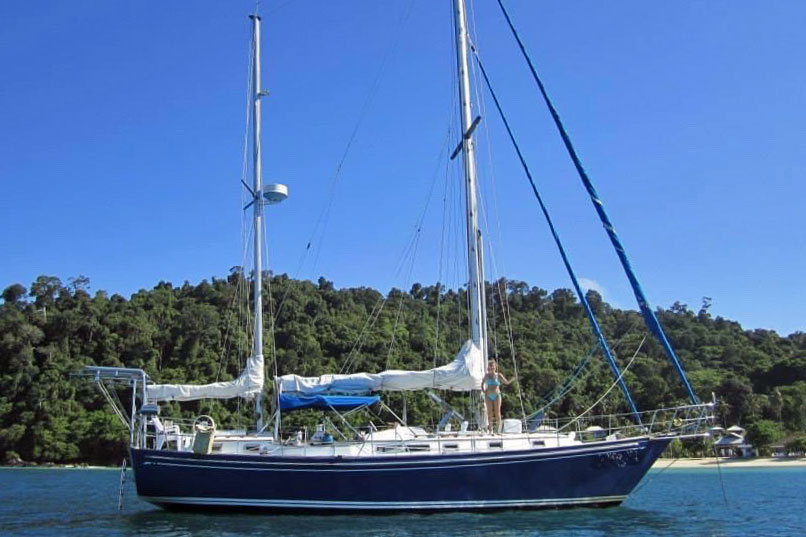
Jeanneau 'Sun Odyssey' 409
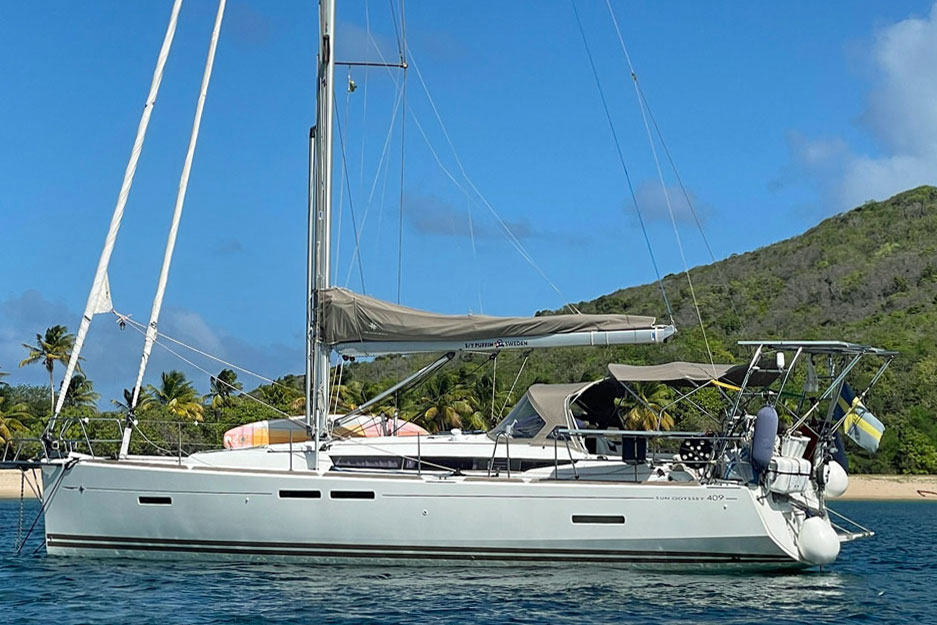
Moody 41 Classic
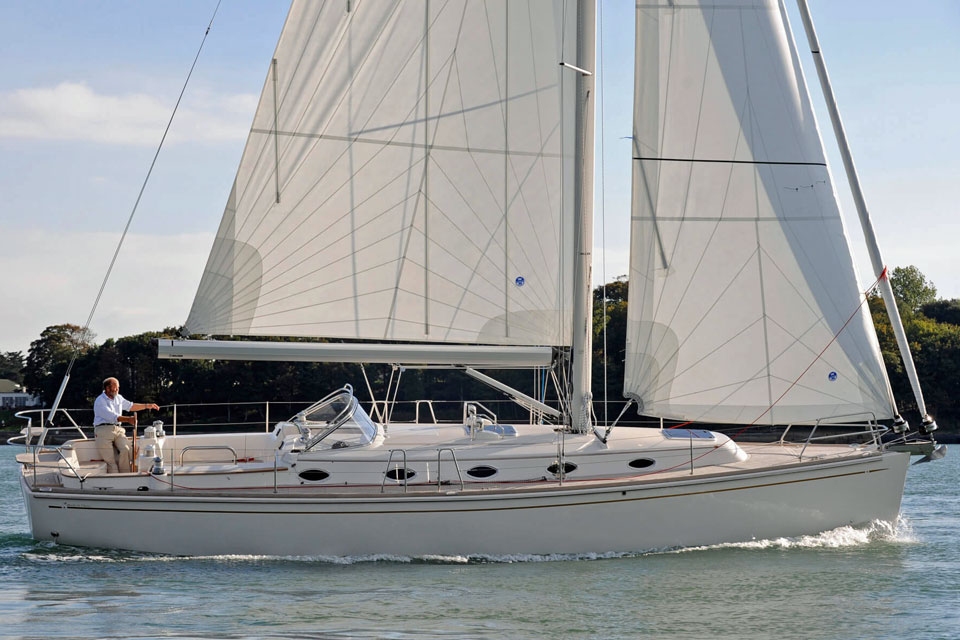
Dehler 43 CWS
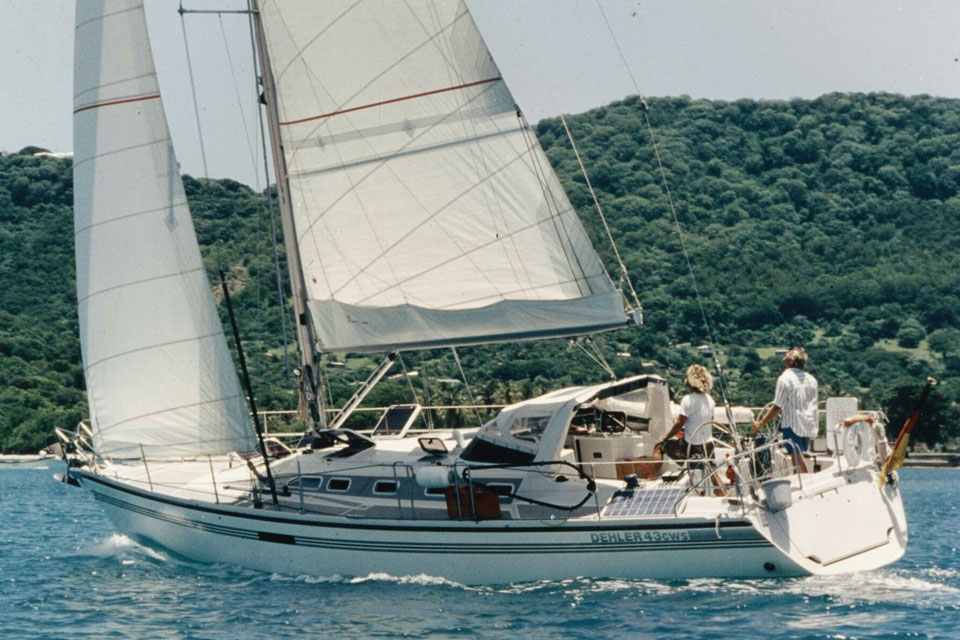
Hunter Passage 42
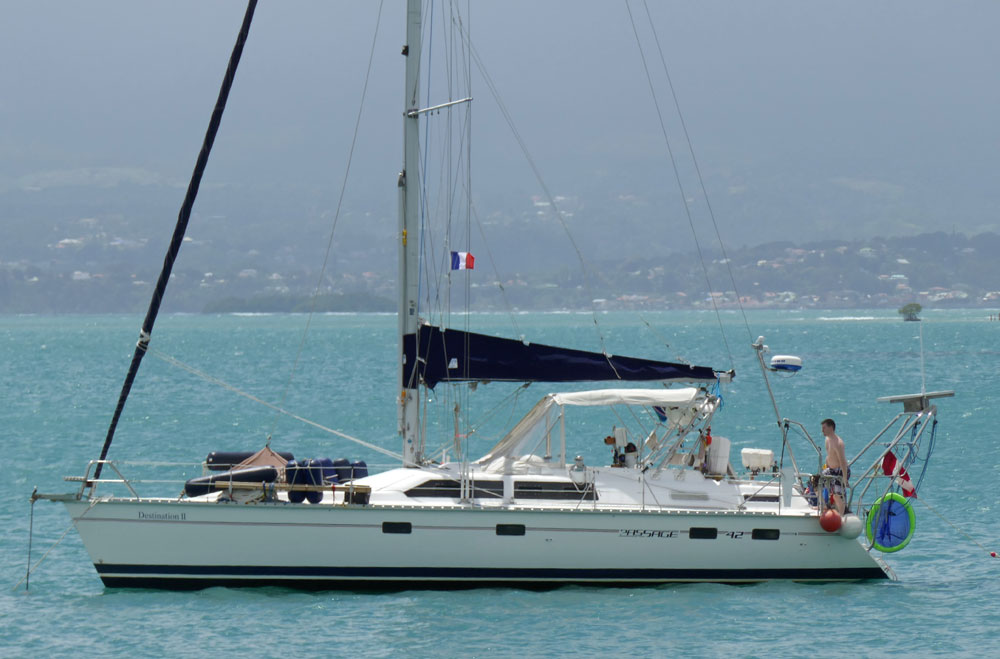
Beneteau First 435
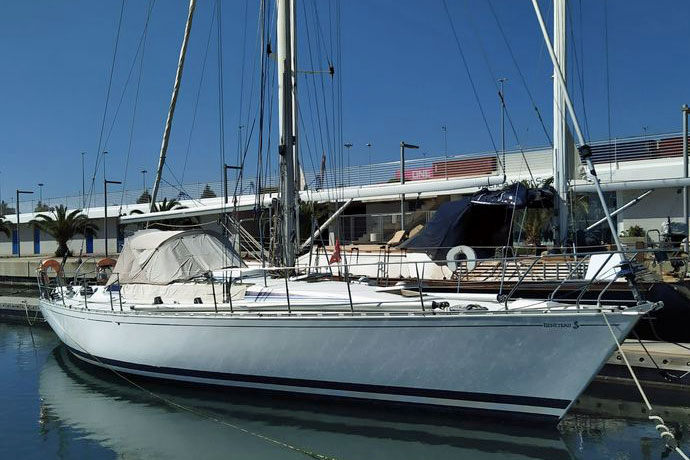
Hallberg-Rassy 41
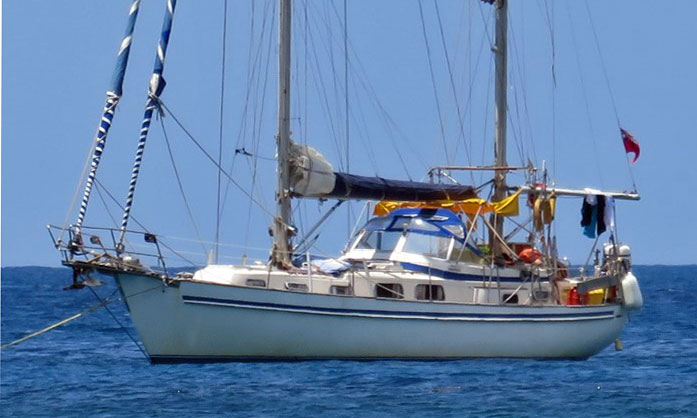
Sweden Yachts 42
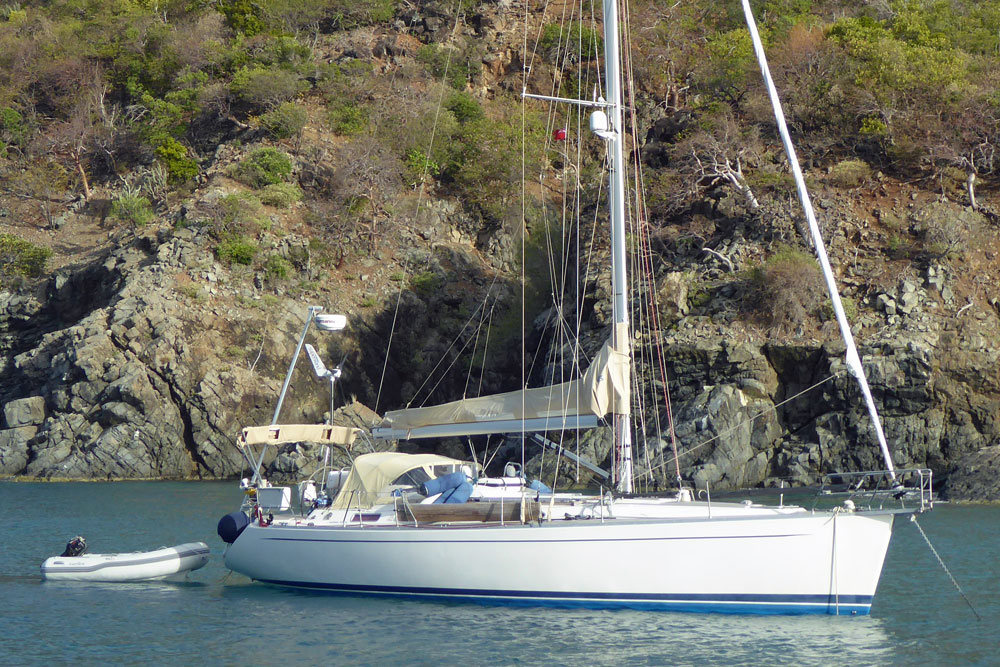
Seastream 43
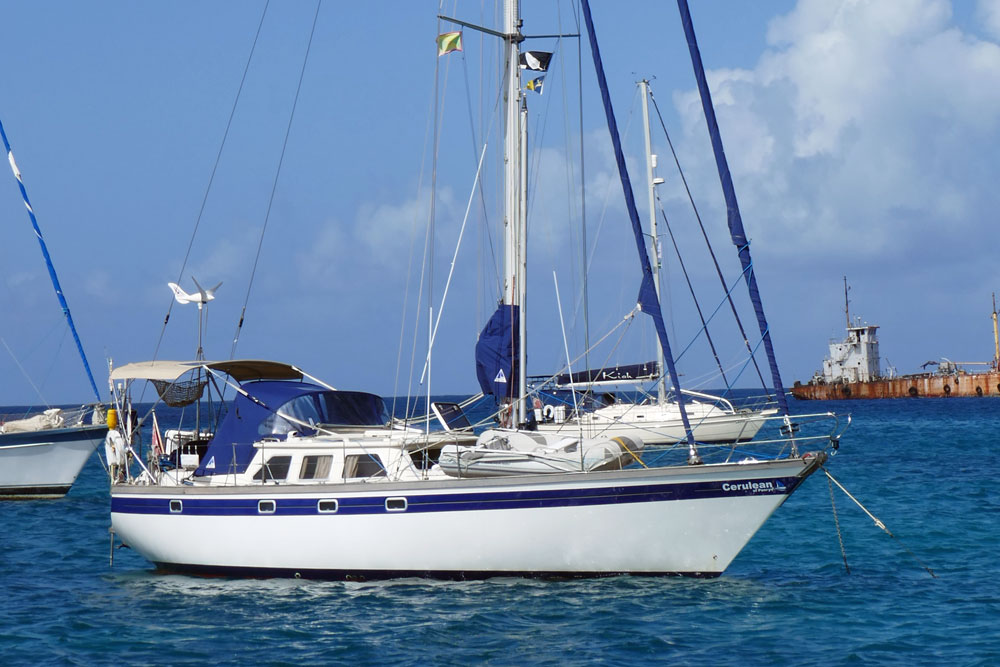
Morgan 41 Out Island Classic
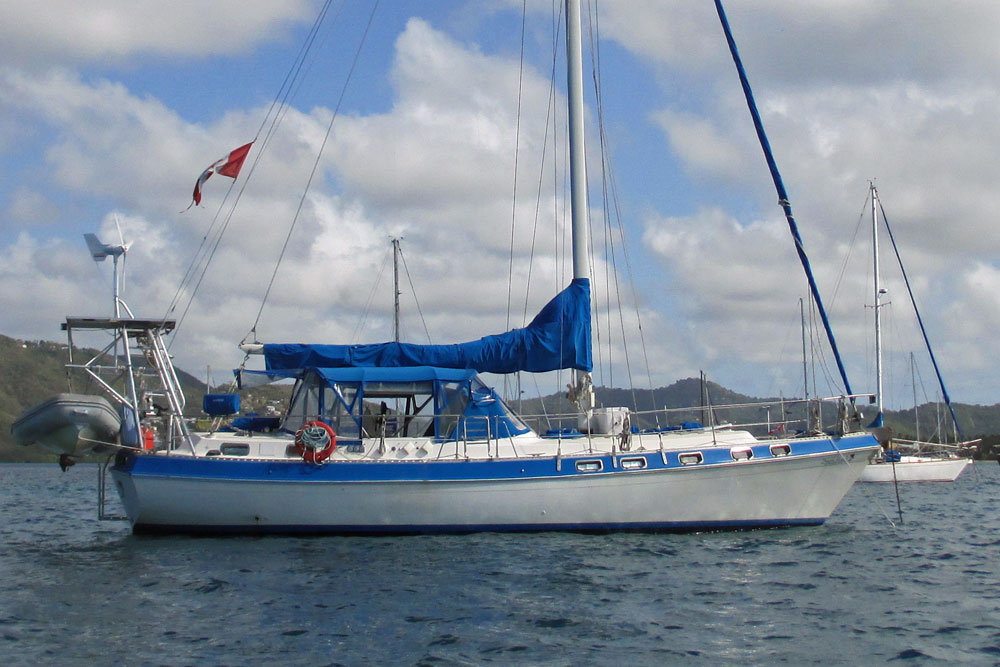
Jeanneau Sun Magic 44 (also known as the Sun Odyssey 44)
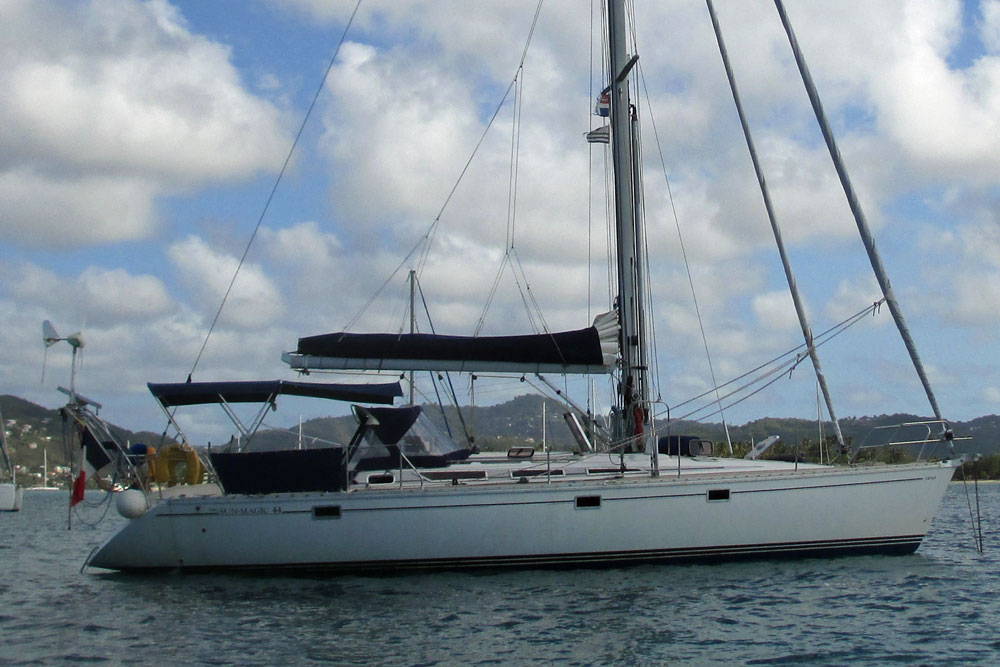
Formosa 42 (also known as the Slocum 43)
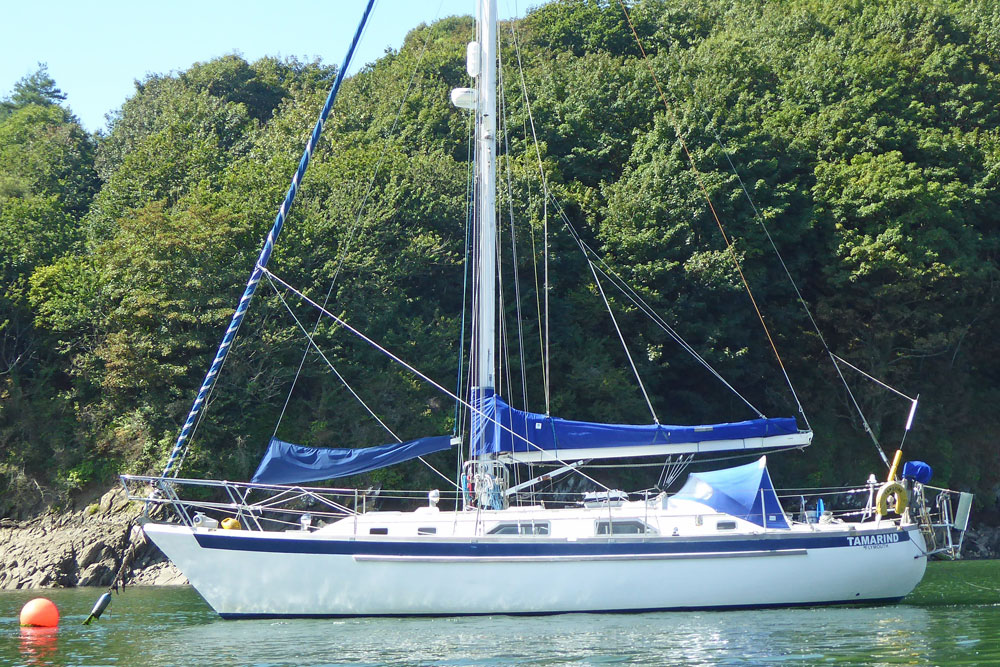
Feeling 446
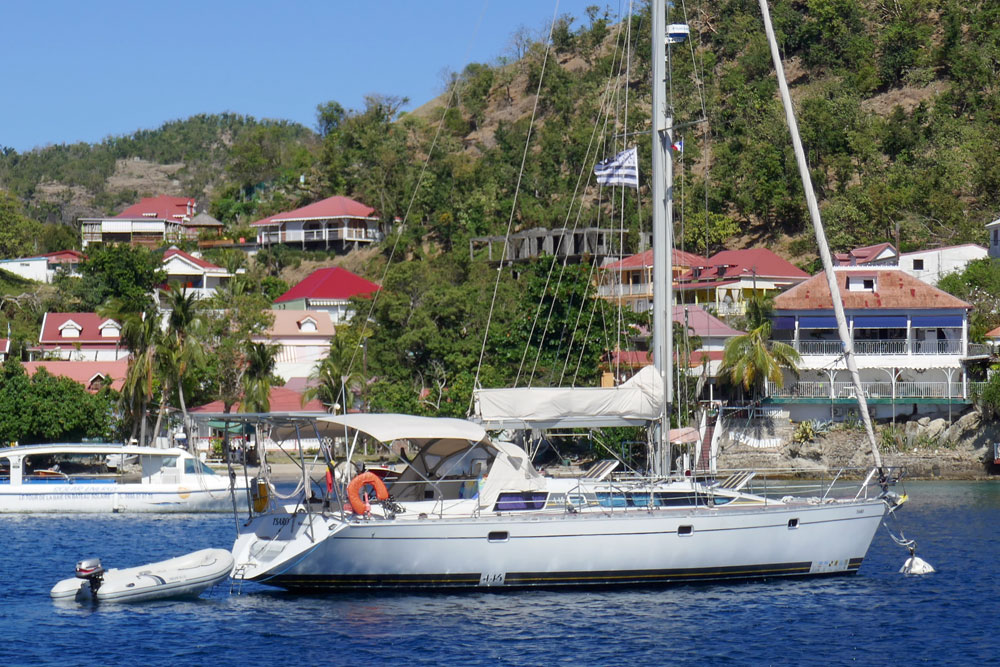
Jeanneau Sun Odyssey 44i
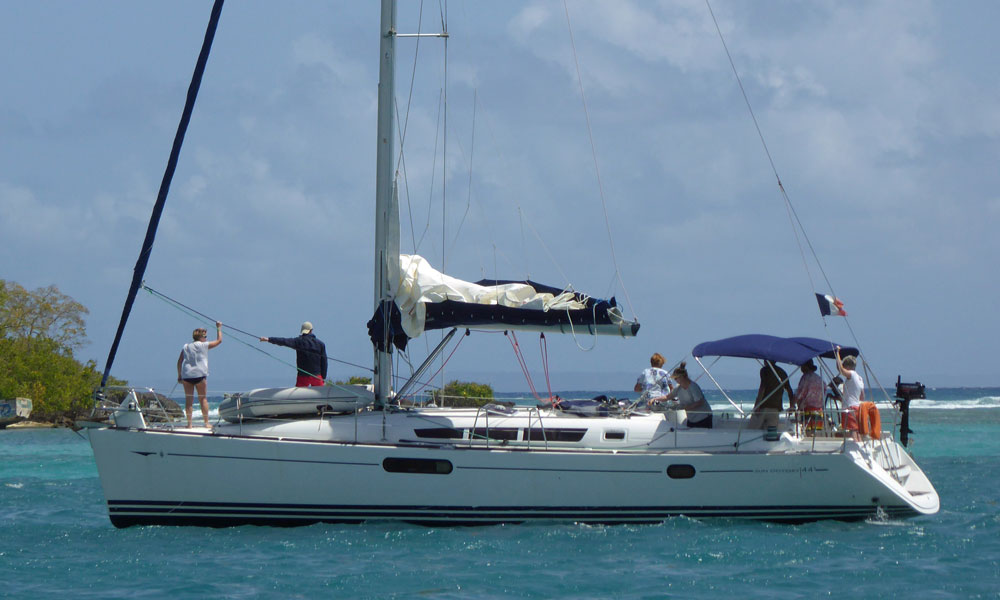
Hallberg-Rassy 43
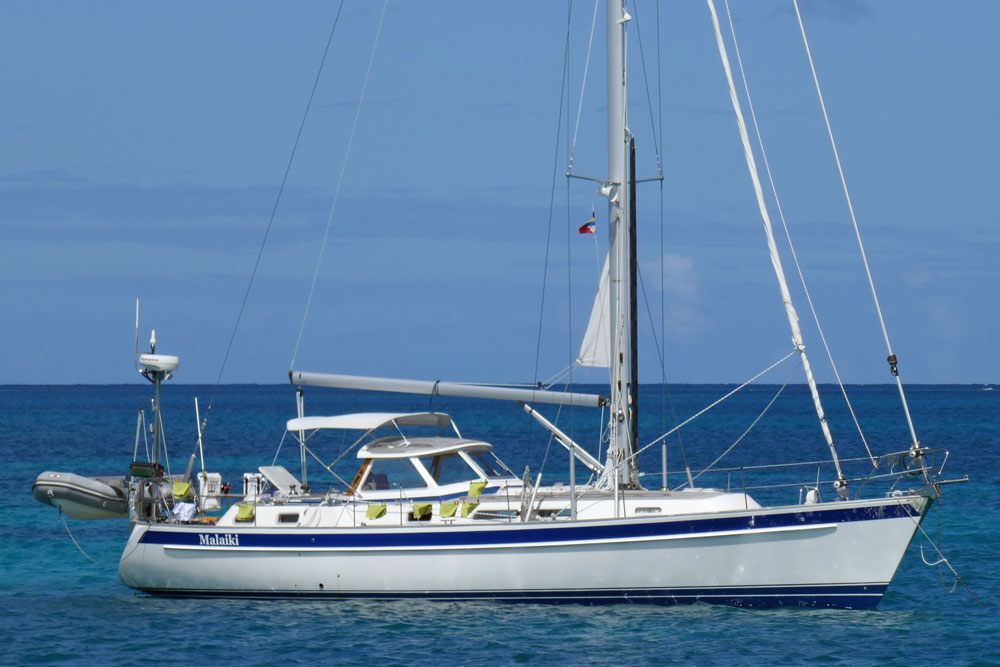
Freedom 44 (Cat Ketch)
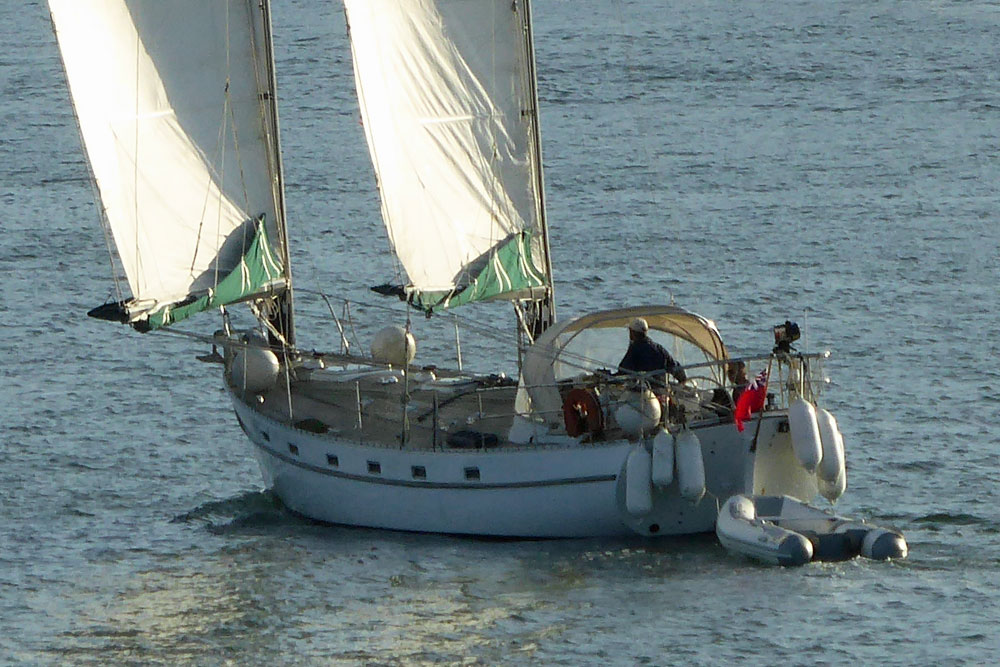
Catalina Morgan 440
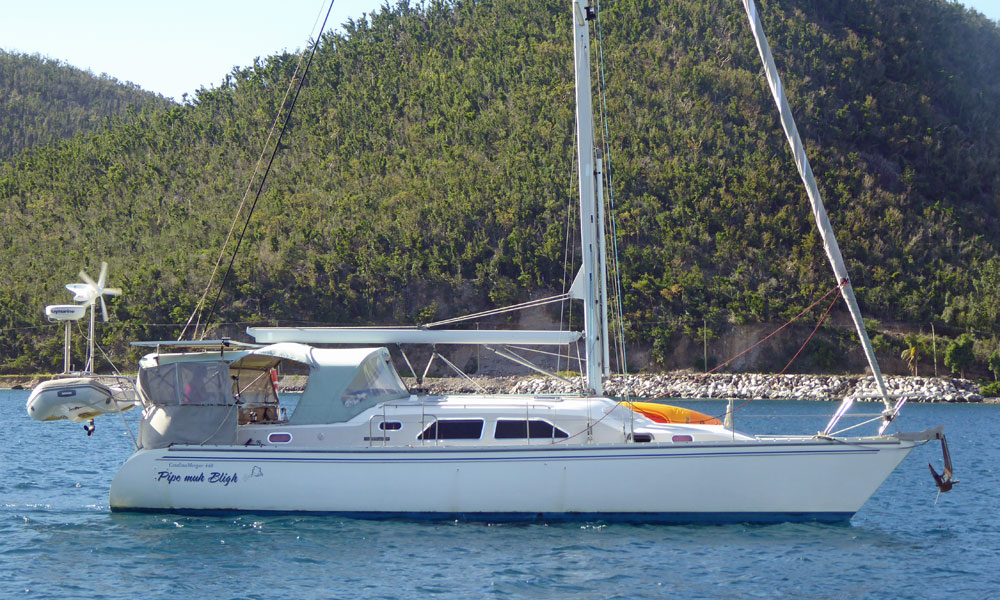
Catalina 445
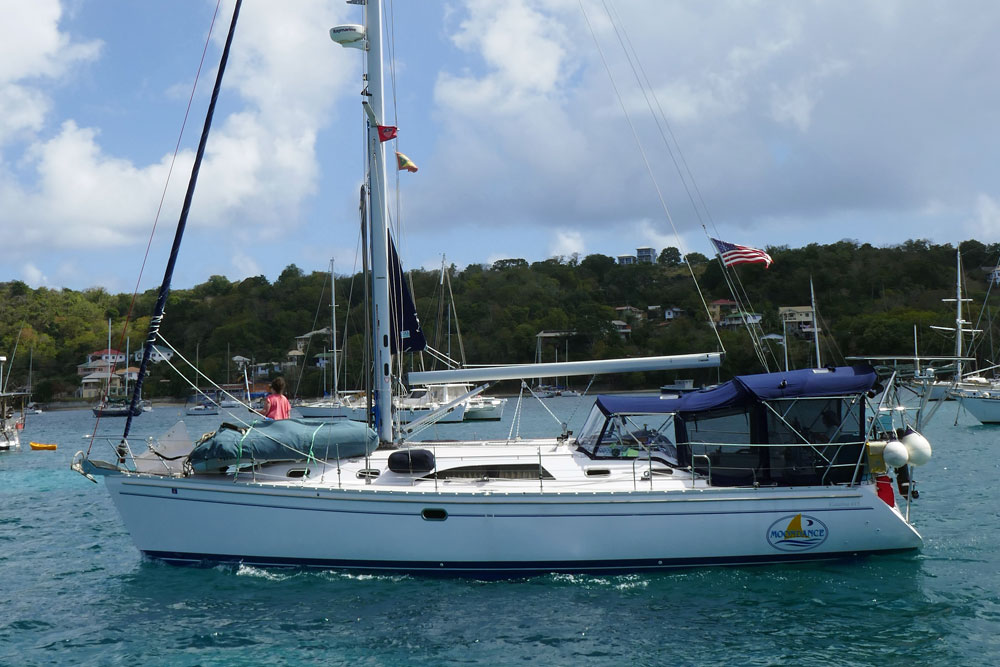
Catalina 42 MkII
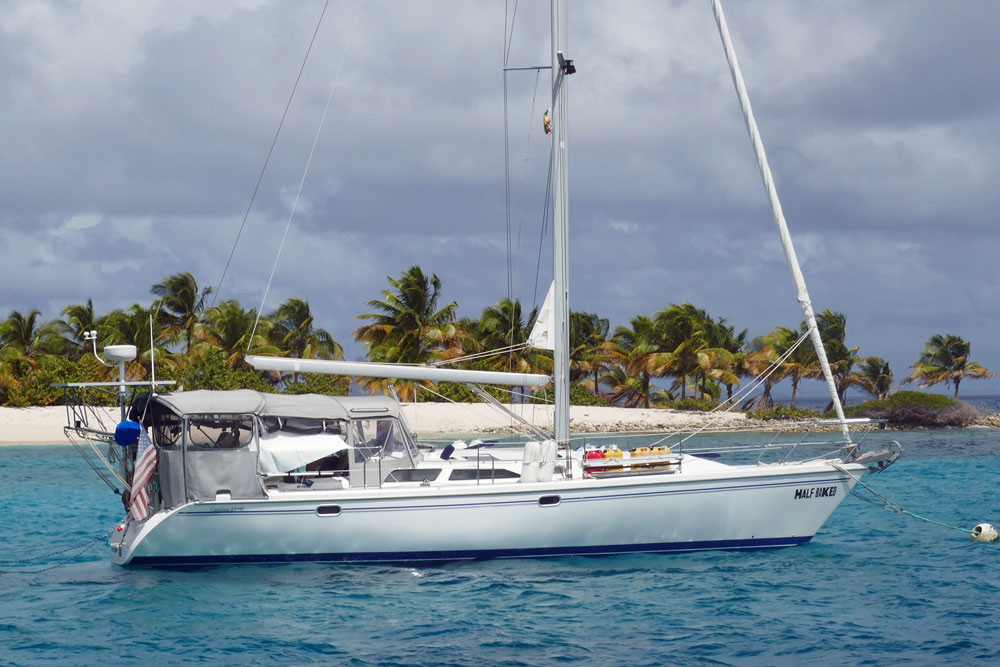
Beneteau 411
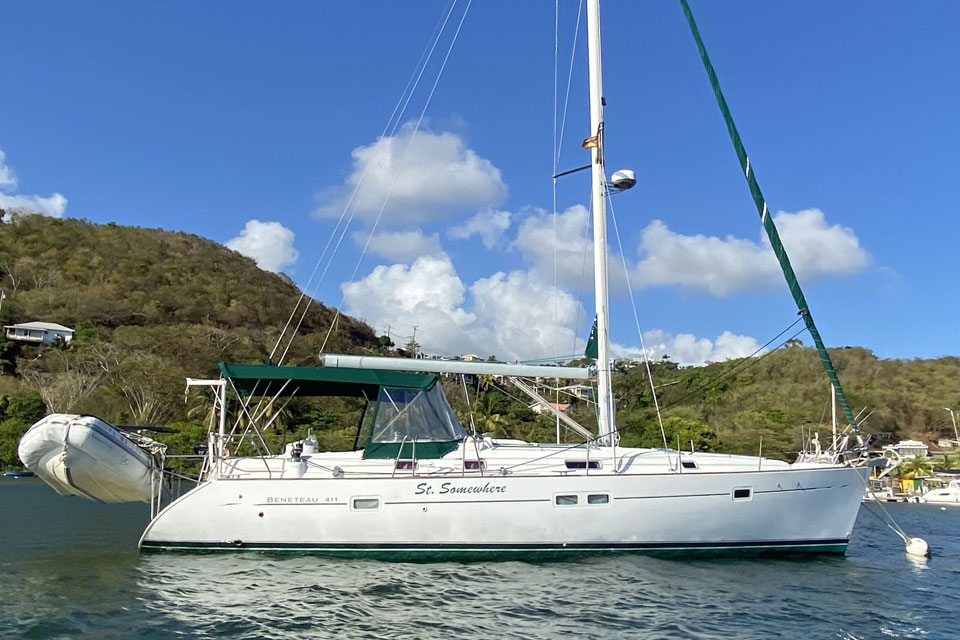
Bavaria Match 42
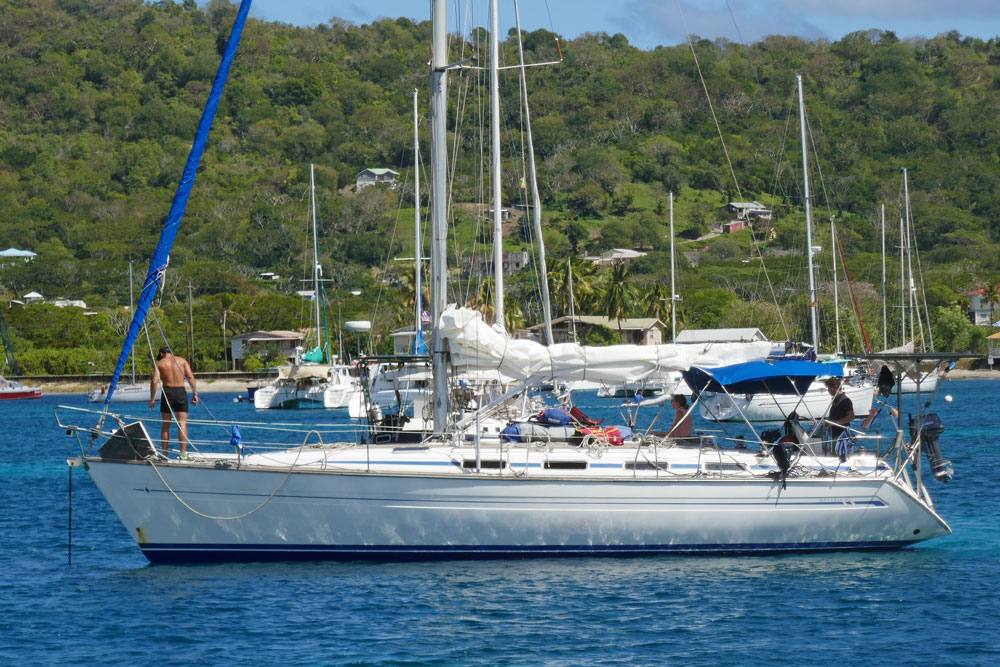
Island Packet 40
Roomy, comfortable and robust, the long-keeled Island Packet 40 could be many sailors ideal cruising yacht. 139 of them were built between 1994 and 2000.
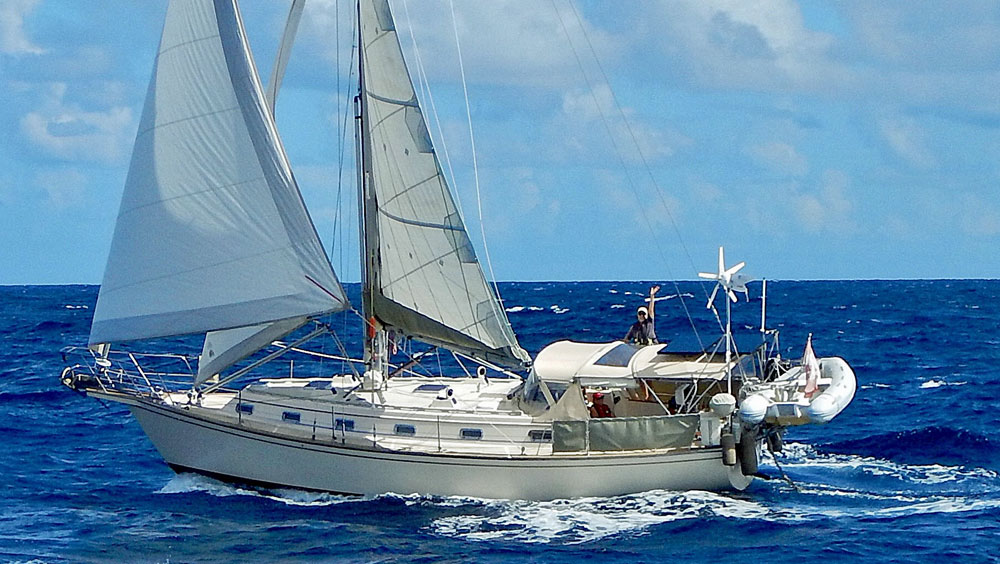
'Zephyr' , an Ovni 395 dried out on a Cornish beach. Many thanks to Colin & Rebecca Campbell for this pic of their versatile cruising yacht.
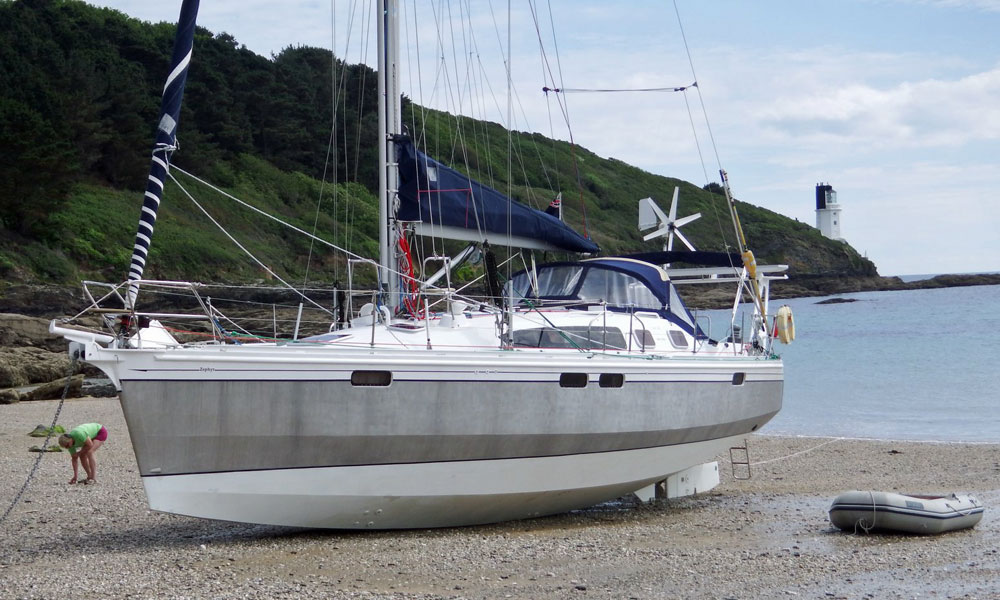
Pearson 424
The Peason 424 cruising yacht is available as a ketch as the version shown below, or as a cutter. There's no denying that the Pearson 424 is an attractive cruising yacht.
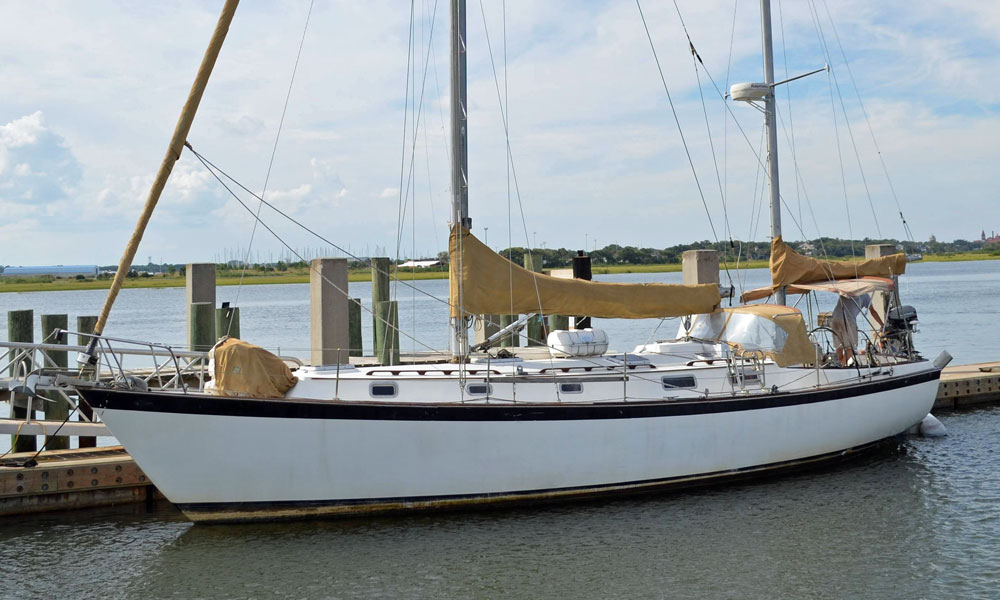
The J/40 is a highly regarded performance cruising yacht. Designed and built to really sail well, passage times will be impressive.
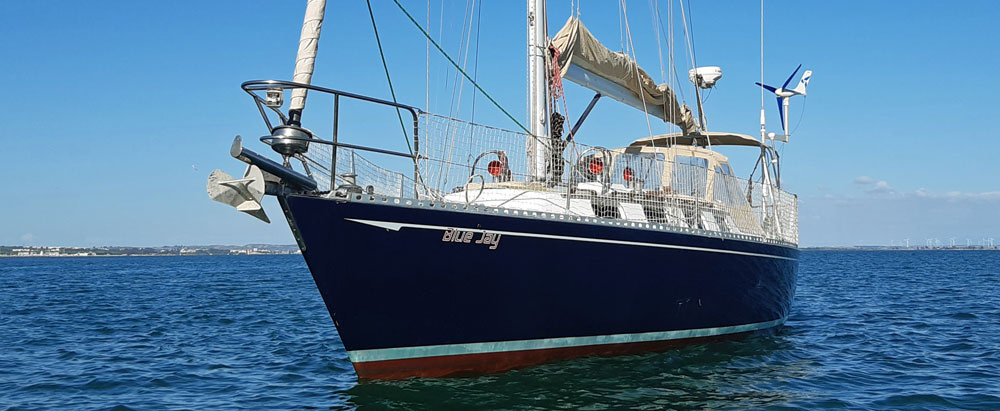
Derived from C&C's Redline 41, the Newport 41 had a long and successful production run. It might lack some of the amenities of 'full-volume' modern cruising yachts below decks, but is a tough, fast and seakindly boat offshore.
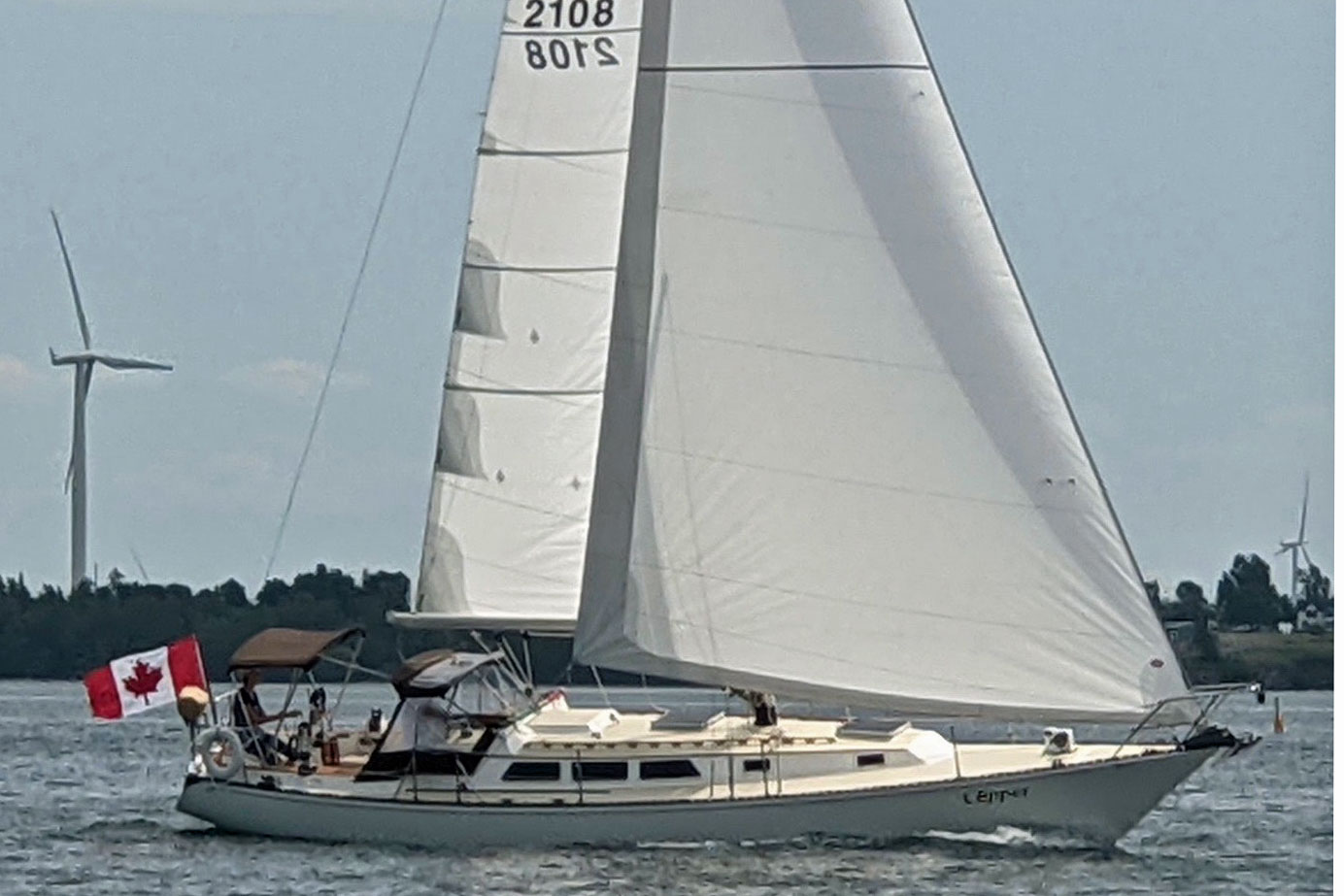
Sirius 40 DS
The Sirius 40 DS motorsailer can be built with a number of keel options: A deep fin keel of 7'6", 6'6" or 5'9"; a swing keel that draws 8'0" and 3'2" up; or twin keels that allow the boat to dry out upright.
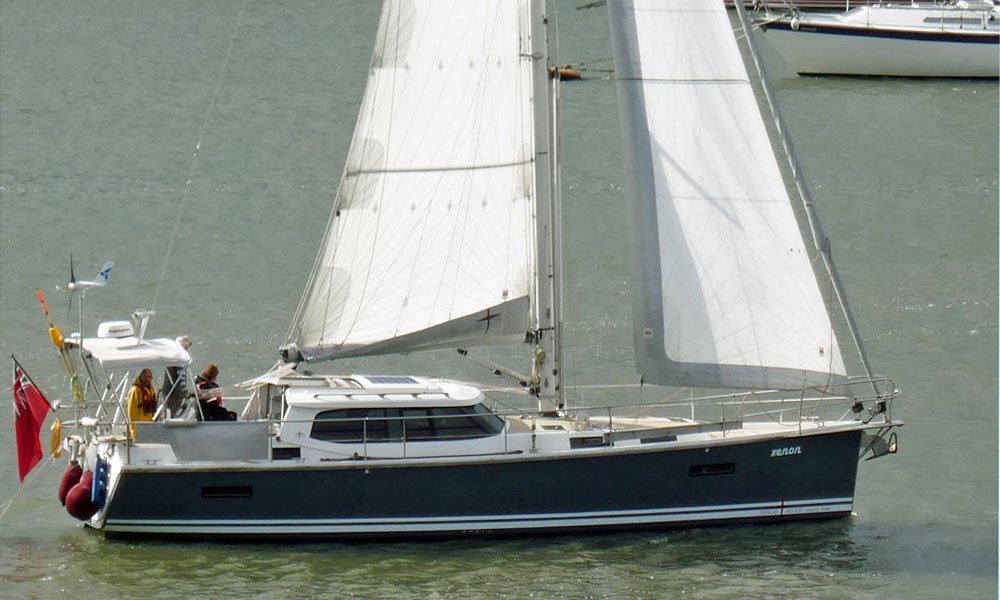
Columbia 43 MkIII
The gentle sheer and flush deck of this Columbia 43 MkIII aft-cockpit cruising yacht make for a very attractive sailboat.
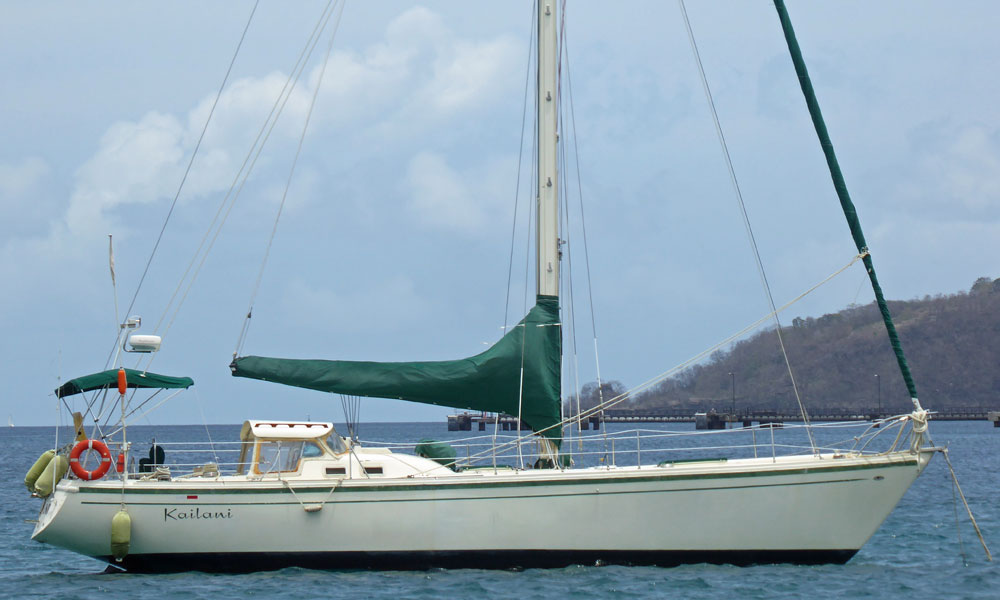
Pacific Seacraft 40
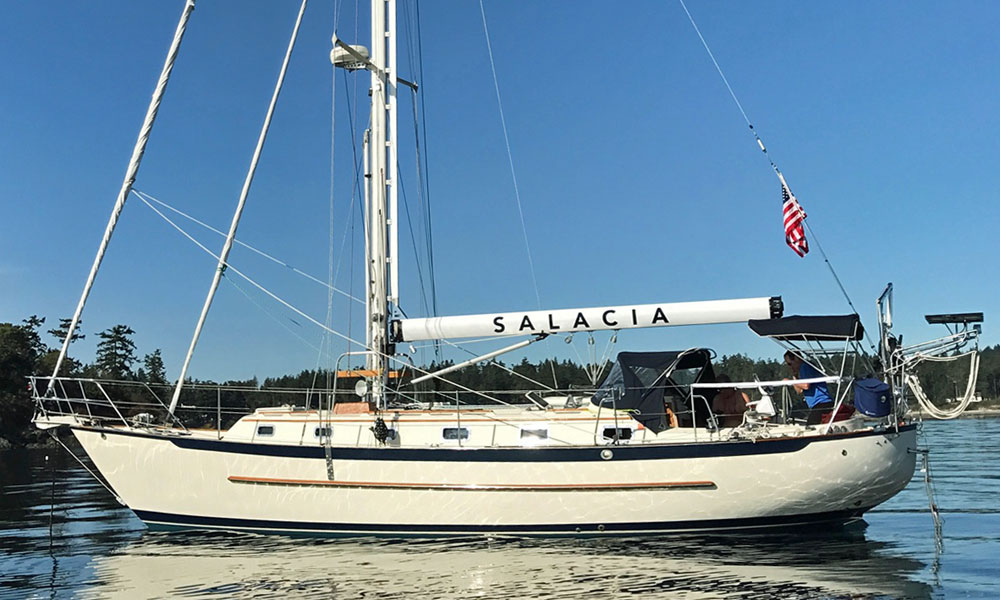
Many thanks to Mike Price for this fine pic of his Contest 44 'Tumbledown Wind' as she crosses the ARC (Atlantic Rally for Cruisers) finishing line.
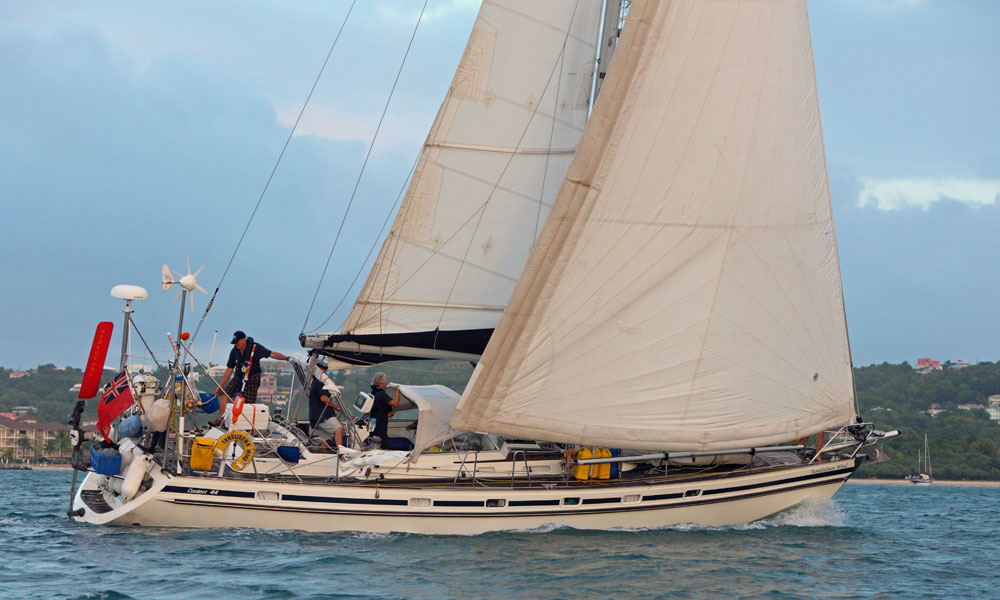
Mason 43 Cruising Yachts
Many thanks to Sally & Al Pribyl for this pic of their Mason 43 staysail ketch 'Artemis' , at anchor in Prickly Bay, Grenada.
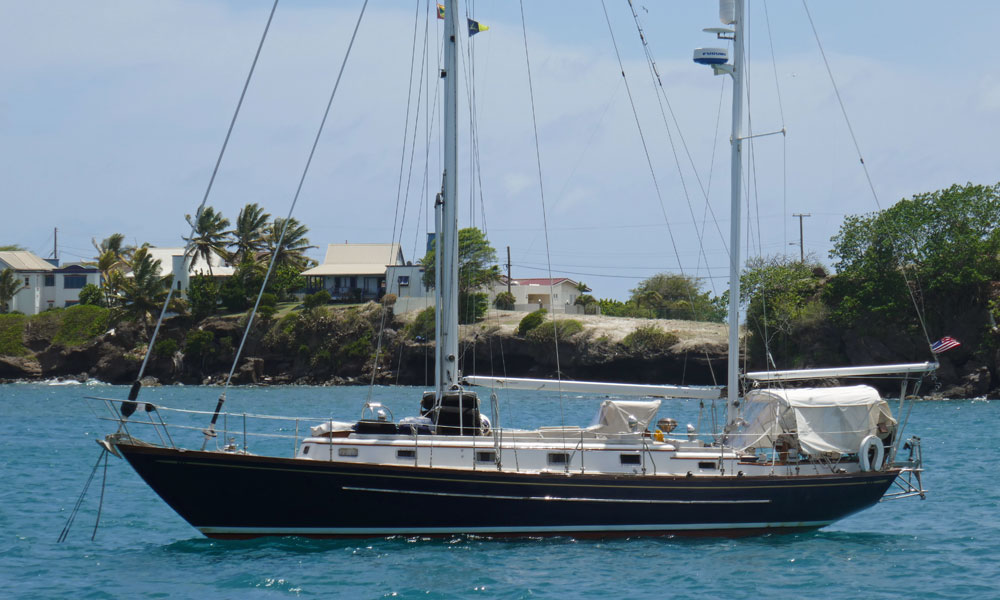
Many thanks to Richard Clement and family for this fine pic of their Moody 425 cruising yacht 'Vega' .
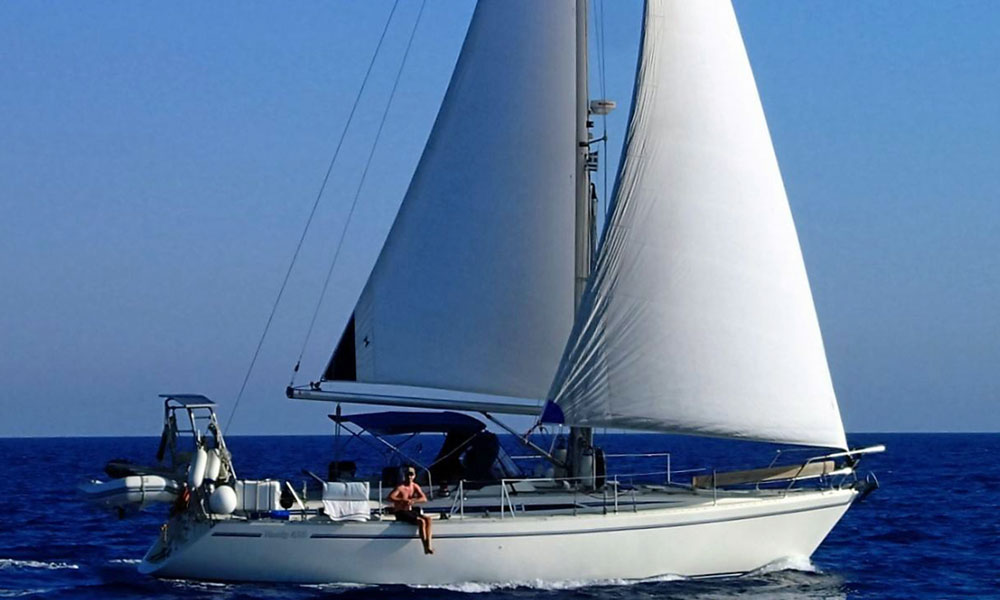
Norseman 447
Many thanks for this pic to Dartanyon Race, co-Captain of this Norseman 447 cruising yacht 'Lutris' .
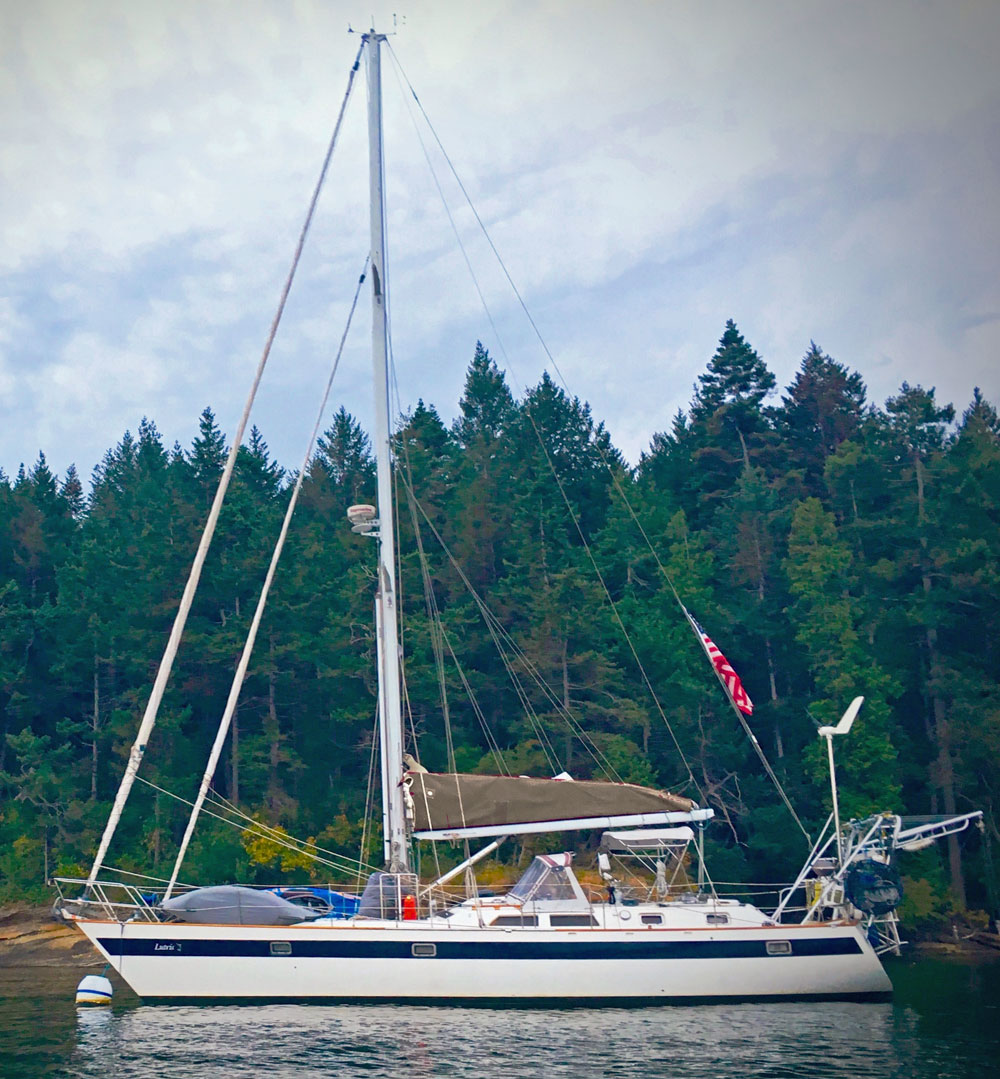
Hunter 40.5
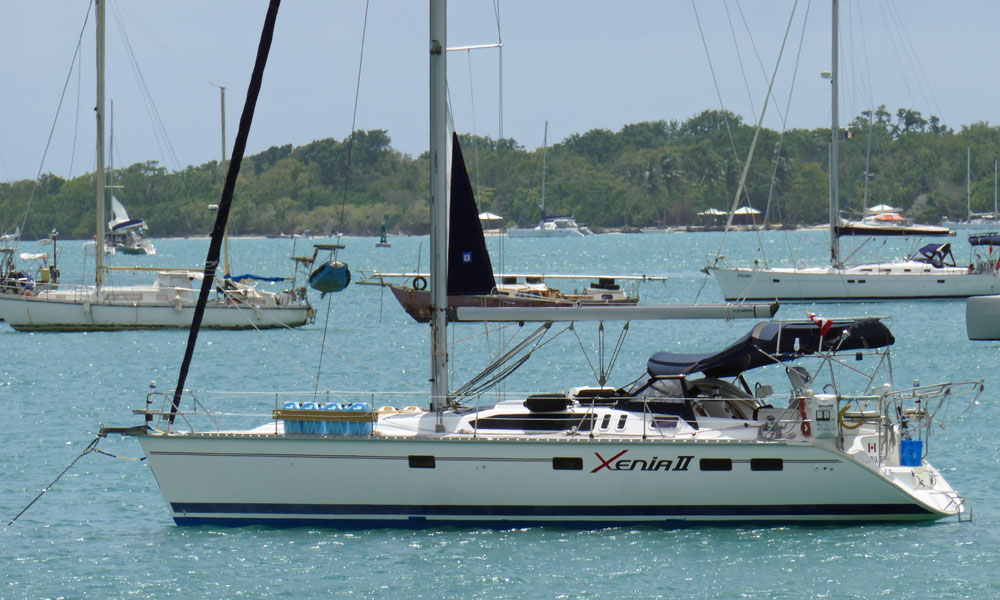
Caliber 40 LRC
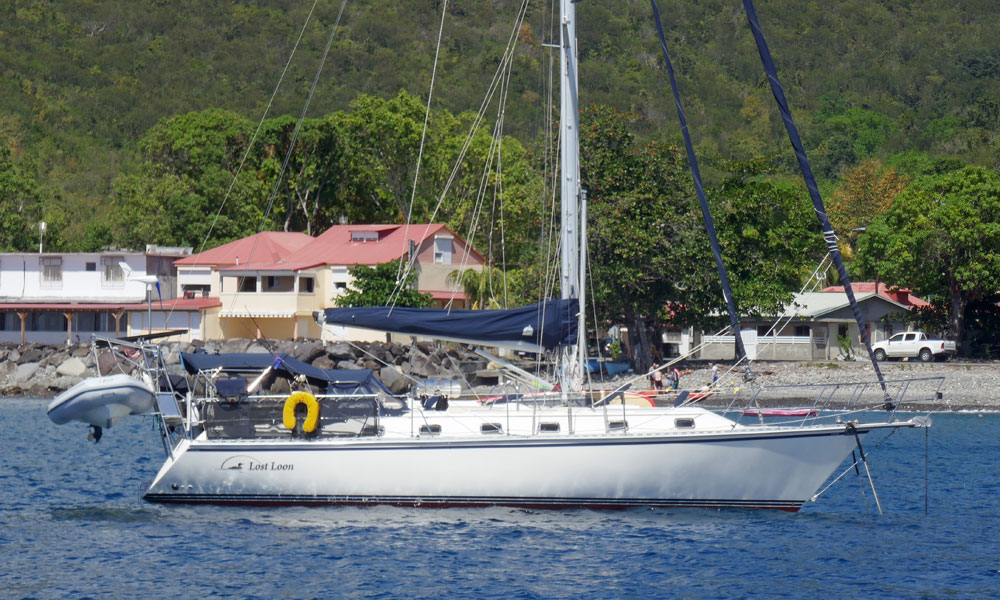
Swan 43 (S & S)
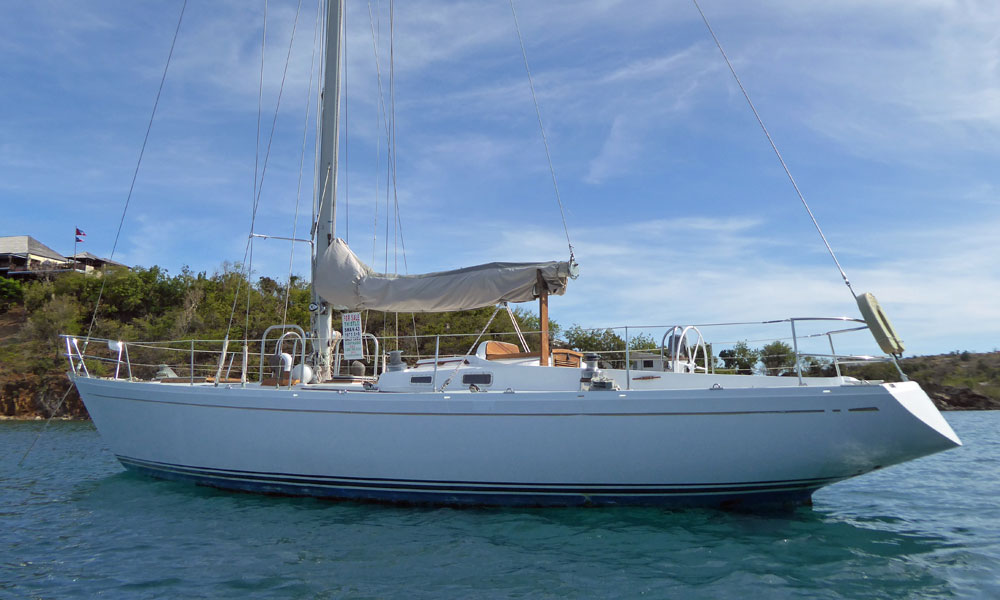
C&C Landfall 42
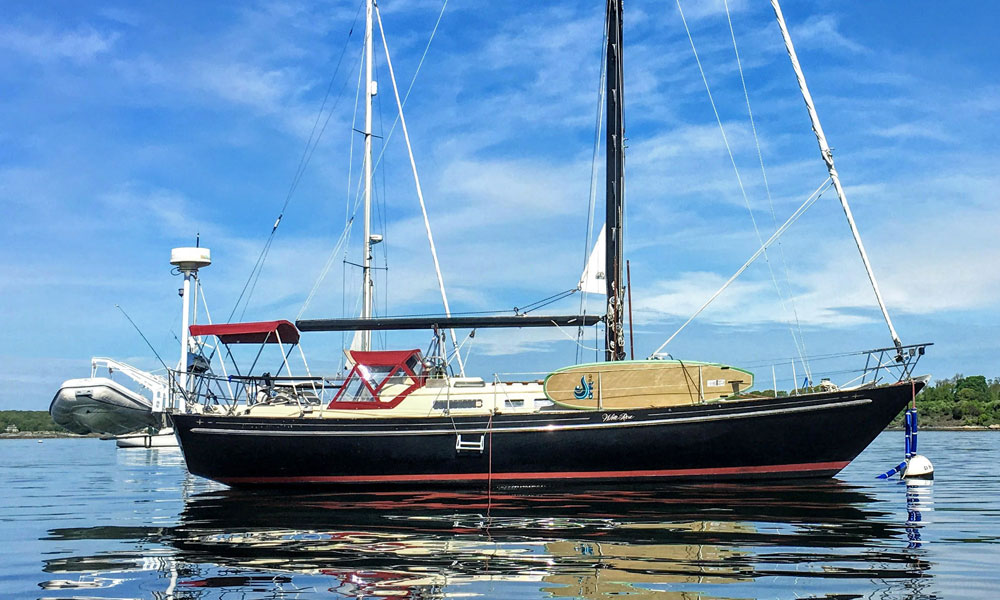
RH 43 (Also known as the CT 43)
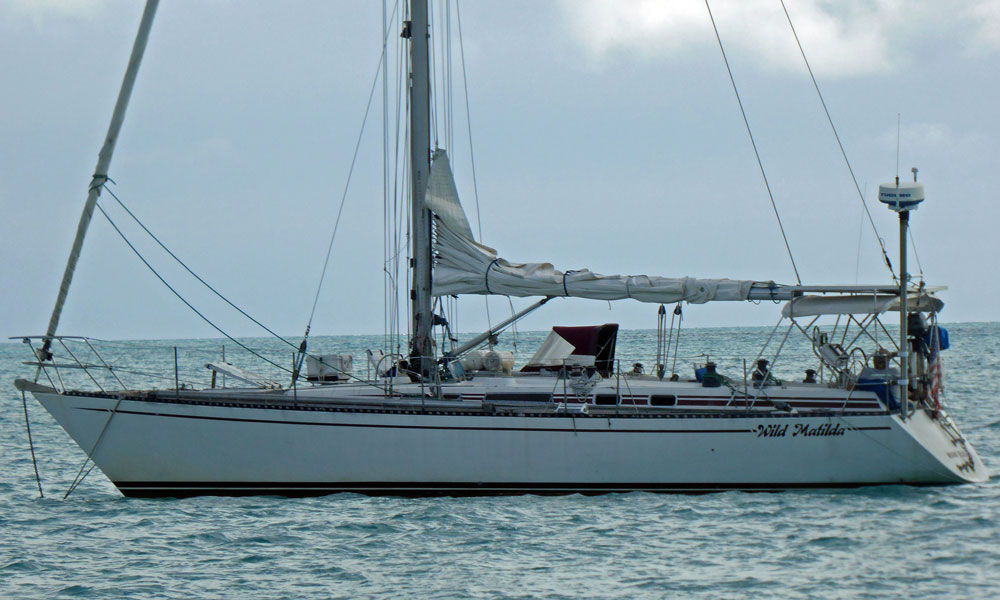
Jeanneau Sun Legende 41
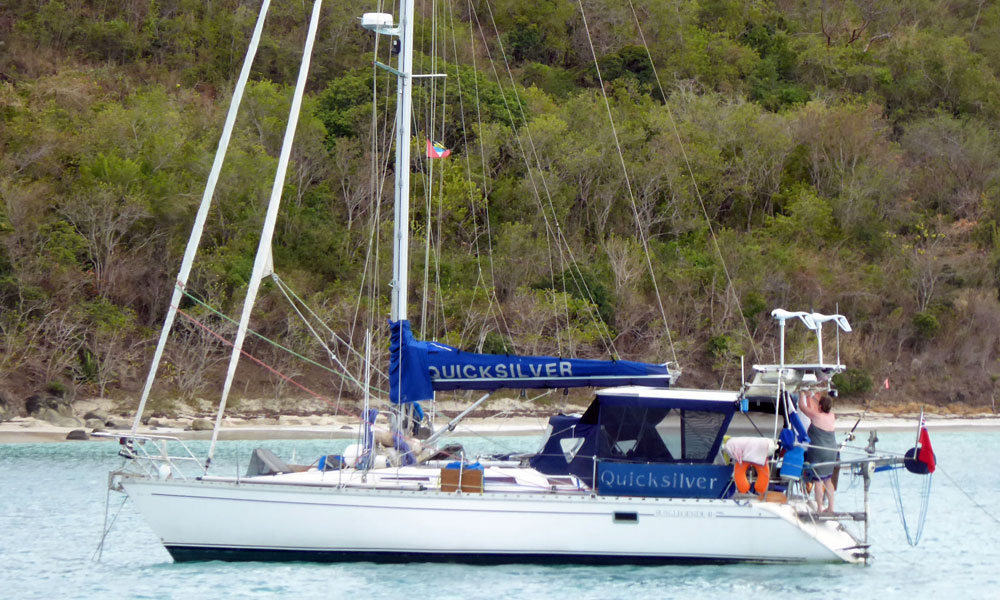
Hinckley Sou'wester 42 MkII
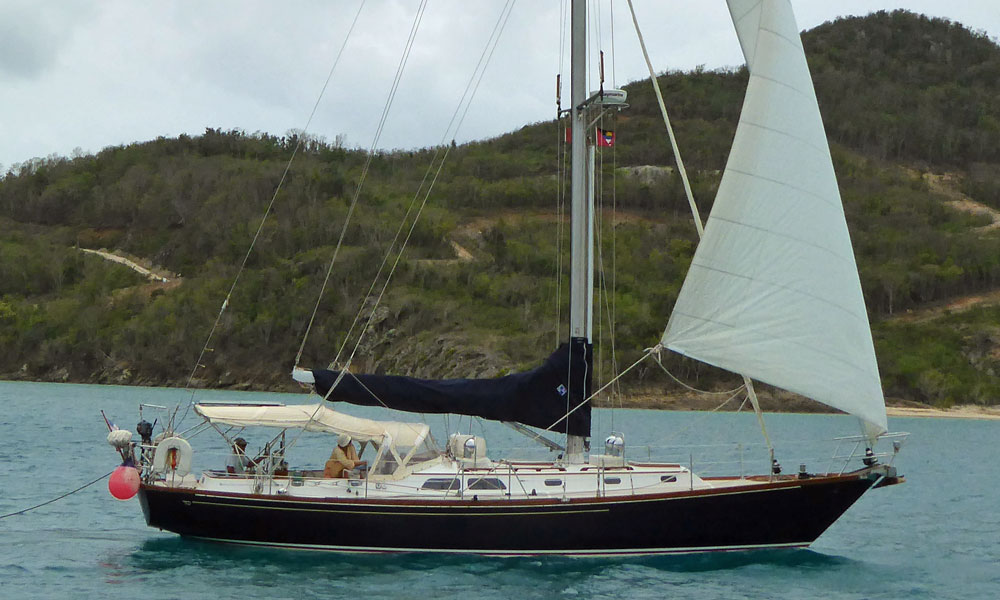
Ovni AluBat 43
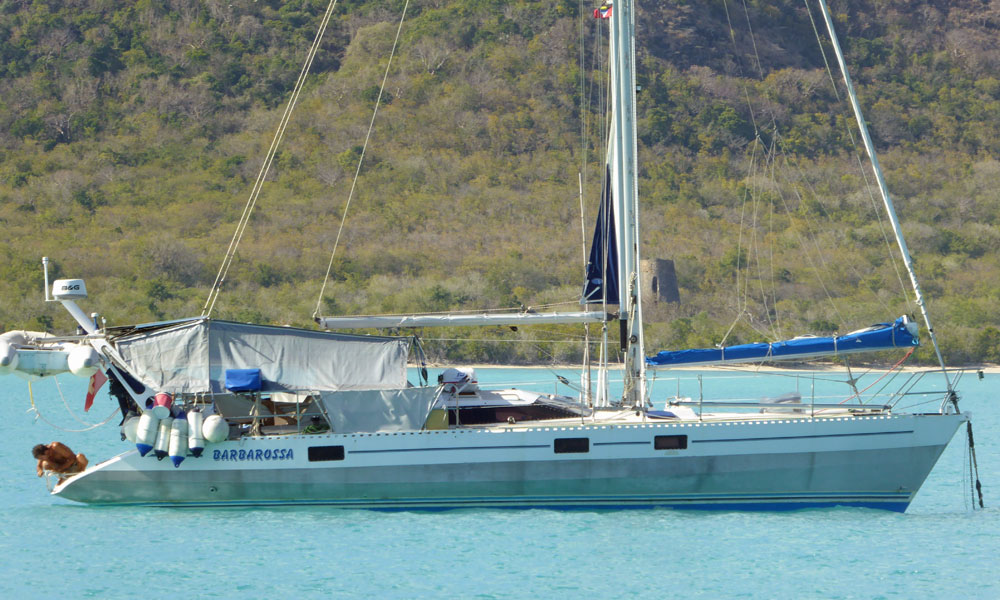
Hallberg Rassy 42 (Frers)
She looks like a cutter in this pic, but the inline stays converging at the masthead shows that the Hallberg-Rassy 42 cruising yacht 'Cavatina' is a solent rigged sloop.
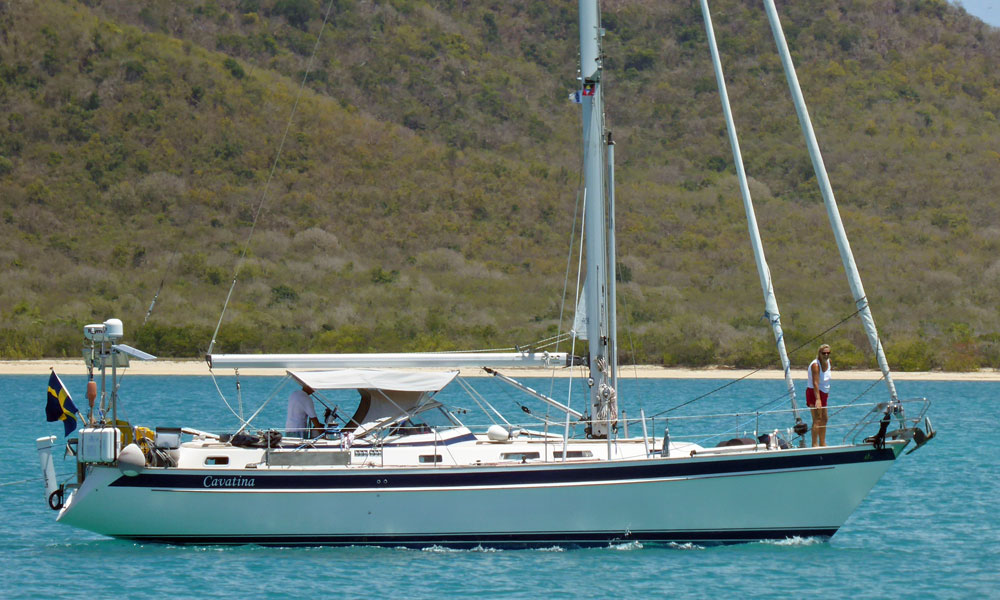
Beneteau 423
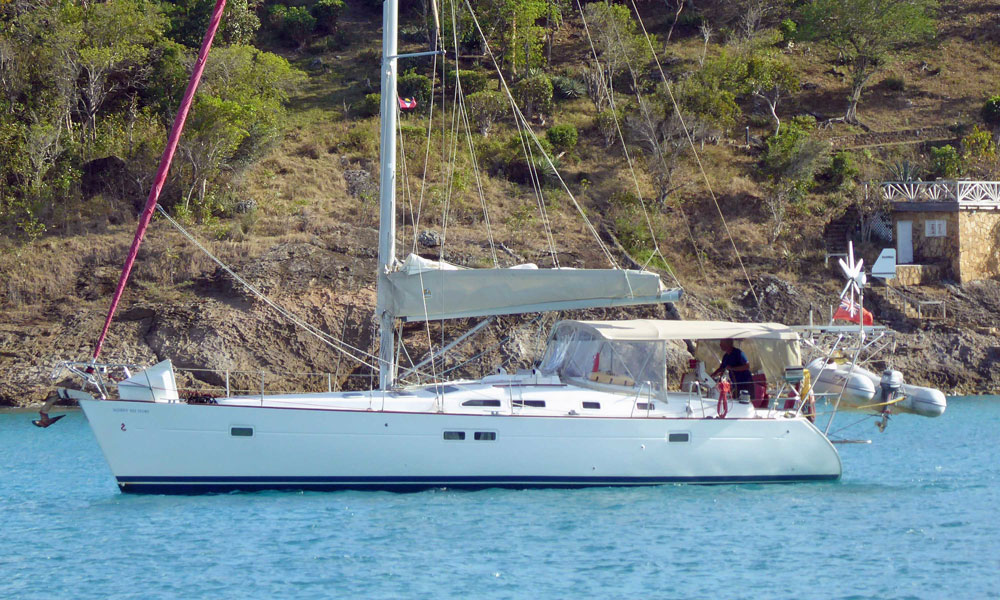
Beneteau Oceanis 42CC
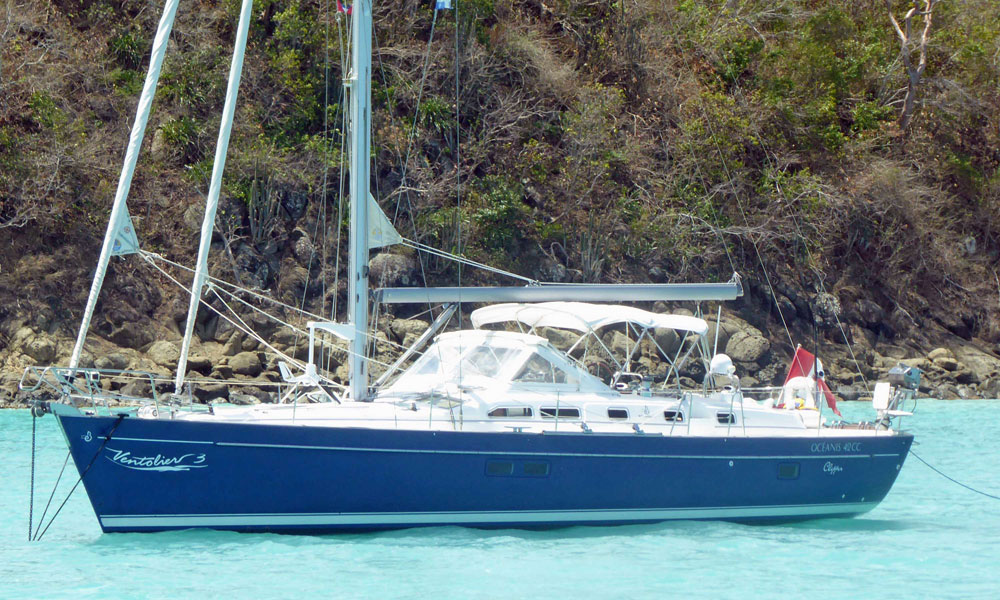
Moody Eclipse 43
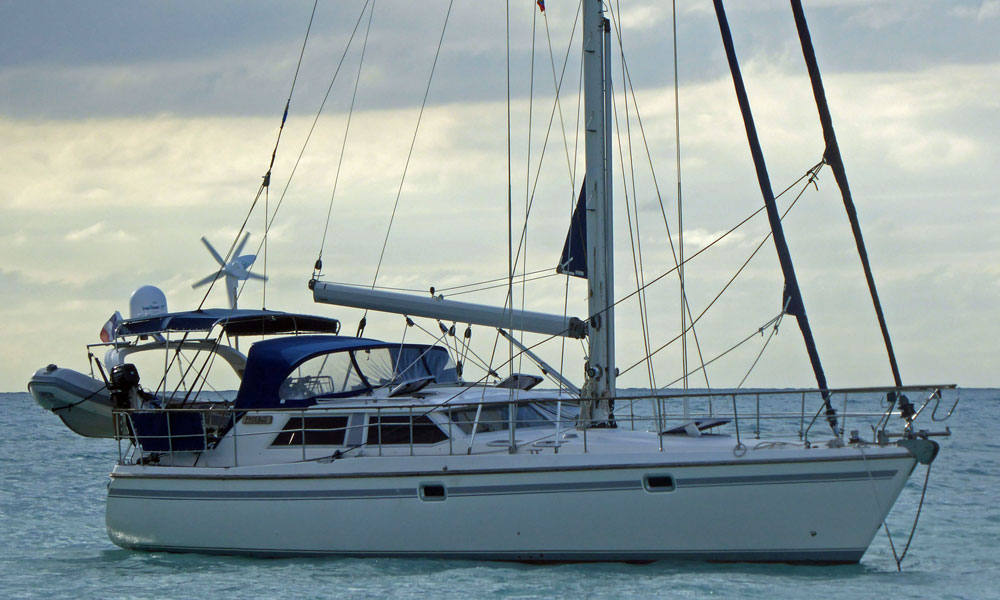
Trintella 44
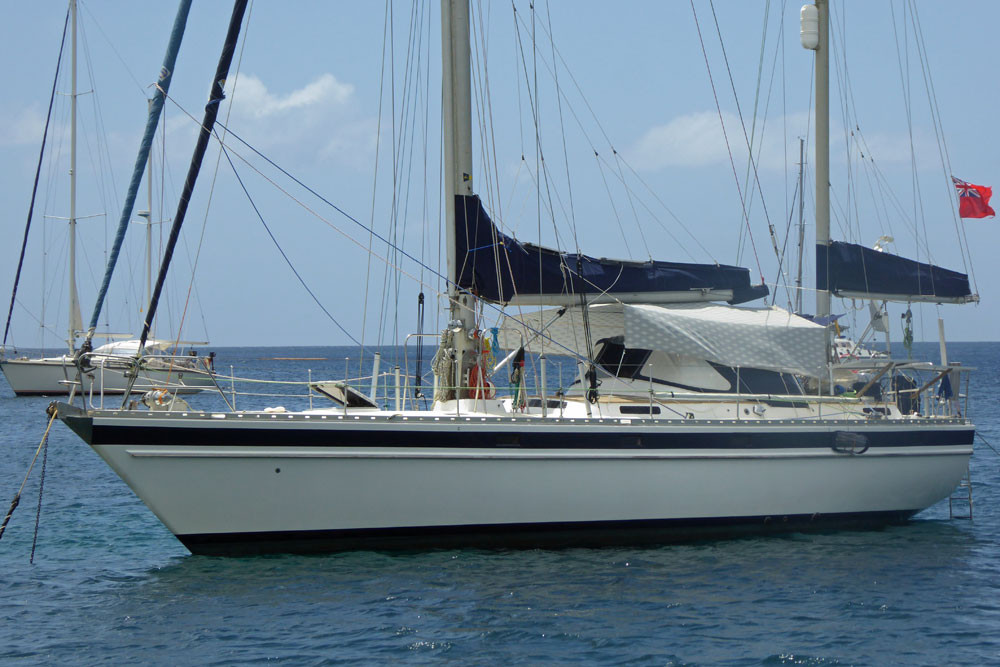
Catalina 400 Mk2
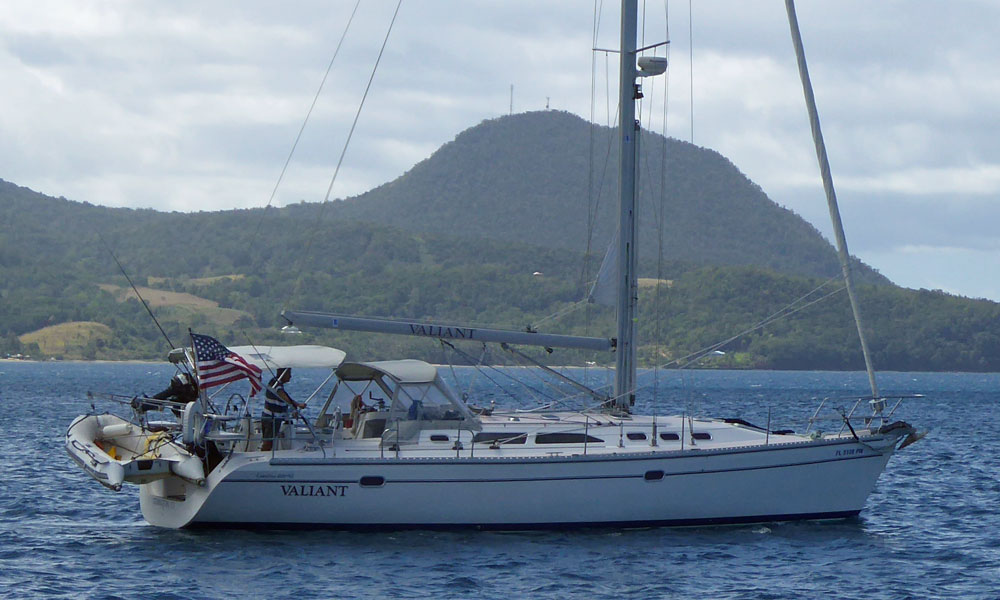
Islander 44
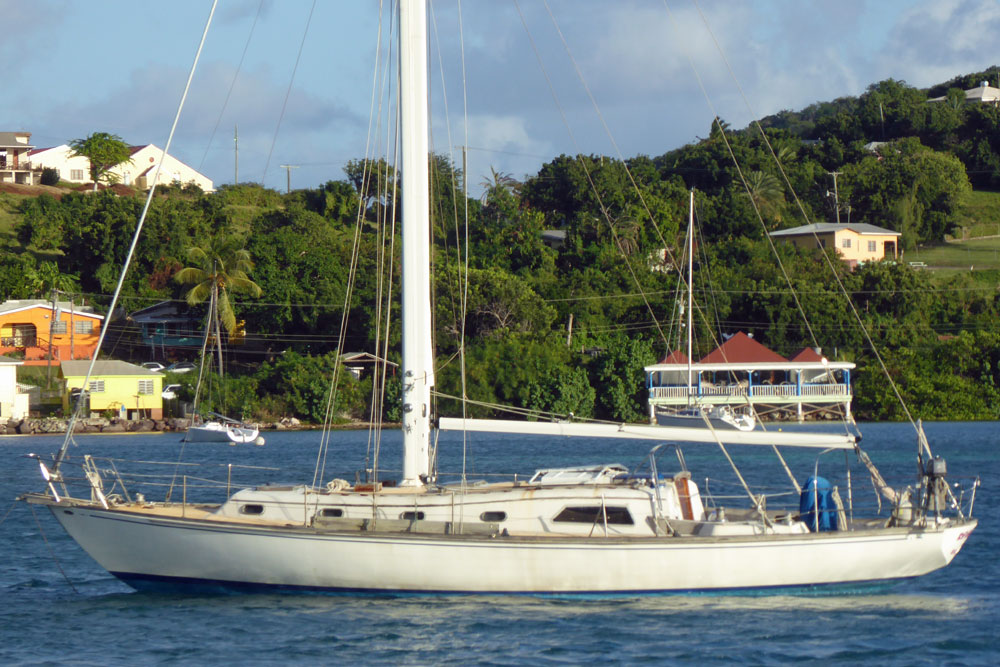
Grand Soleil 39
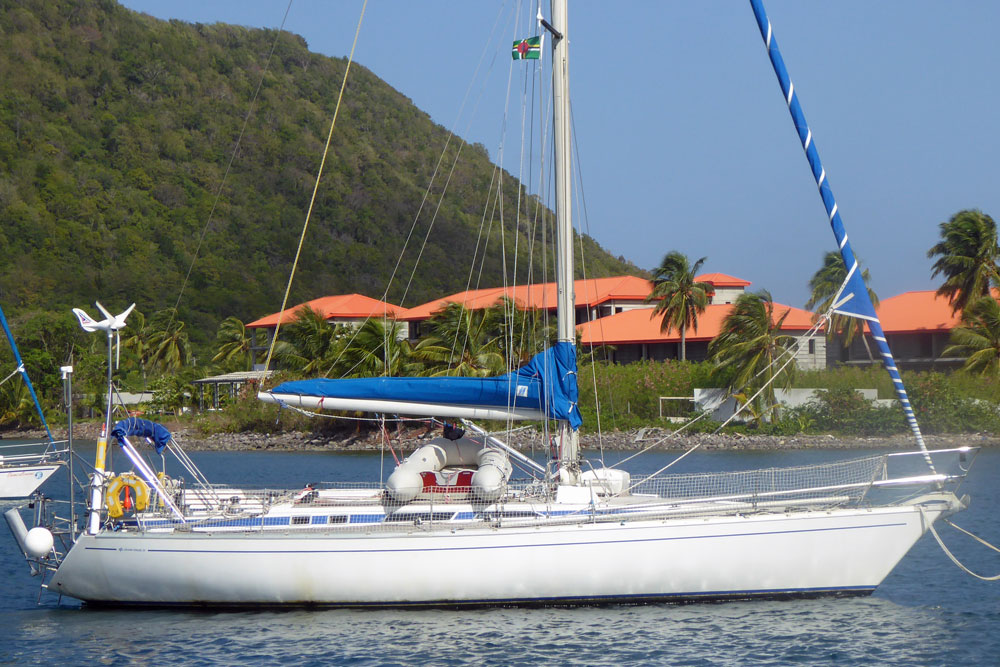
Westerly Oceanlord 41
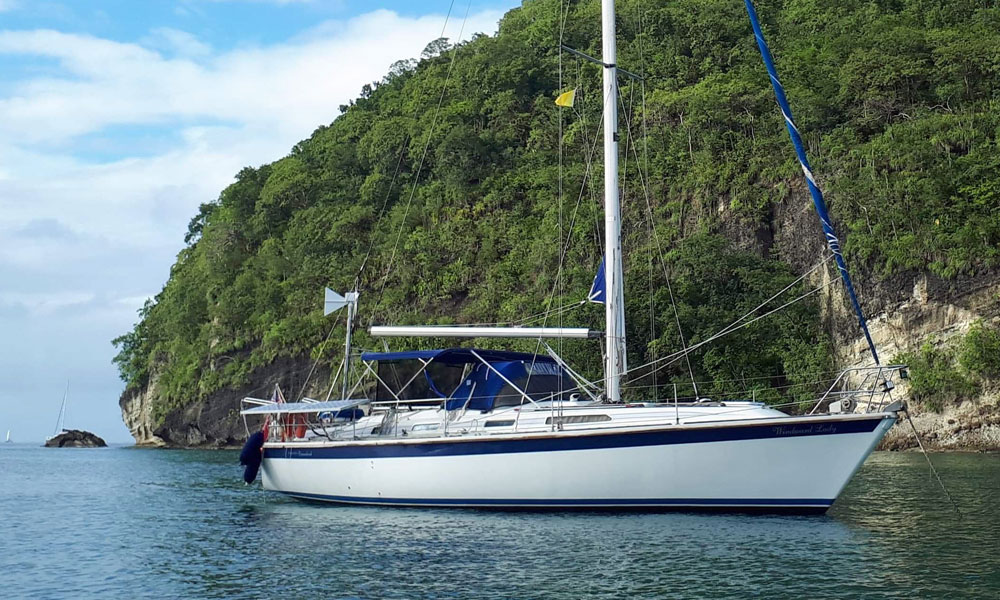
CSY 44 (Walk-Through)
Many thanks to Jeff and Carolee, for this pic of their CSY 44 Walk-Thru' staysail ketch 'Contessa' .
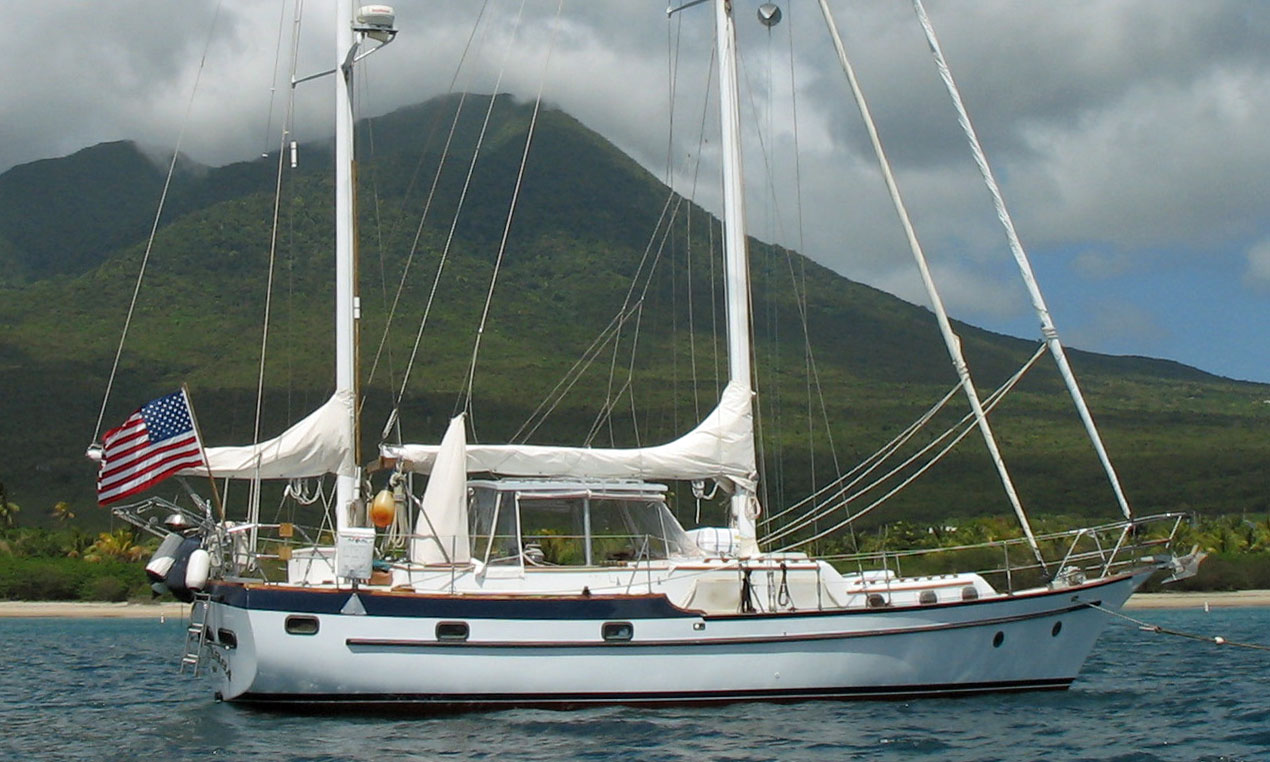
CSY 44 (Mid-Cockpit)
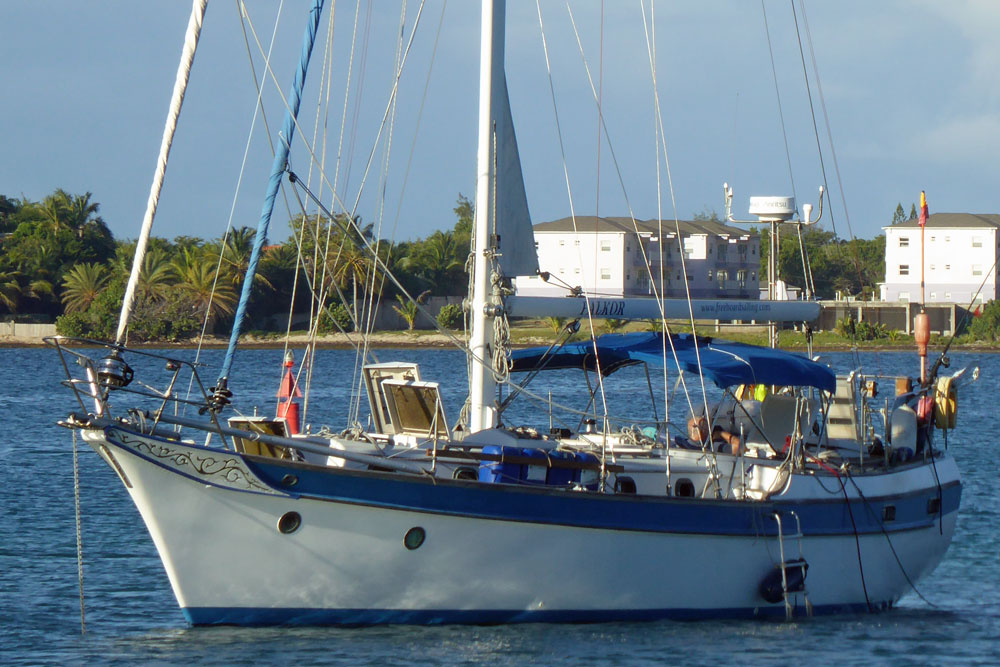
Jeanneau 'Sun Odyssey' 40.3
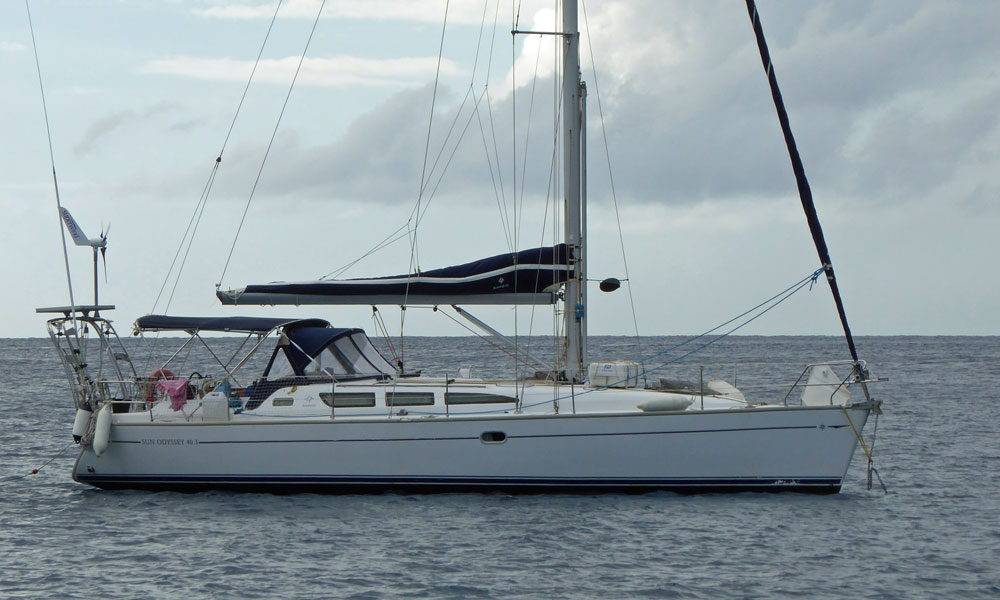
Outbound 44
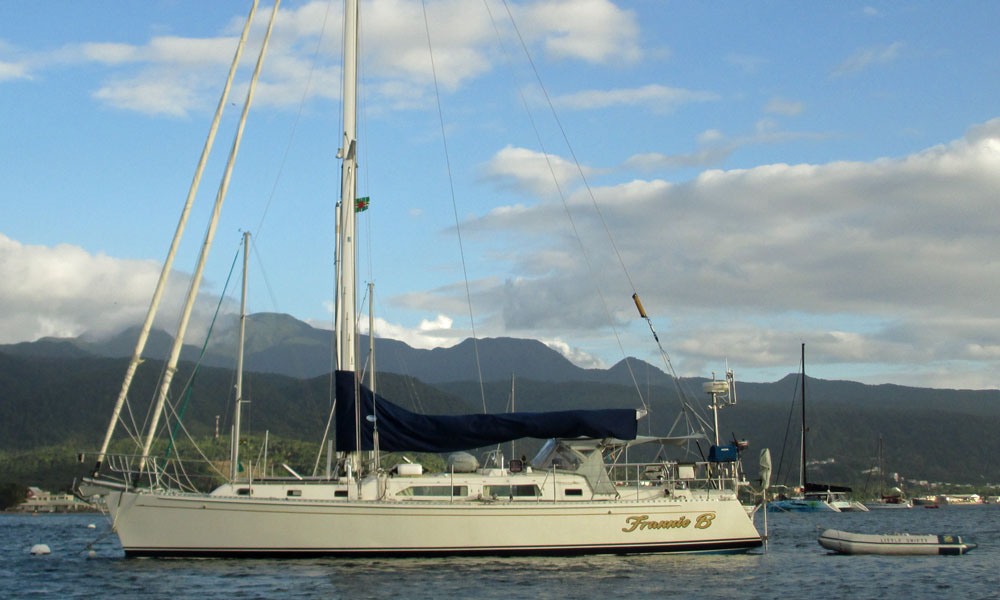
Island Packet 445
Many thanks to Jim Shanahan for this great pic of his Island Packet cruising yacht 445 'Watermark III'.
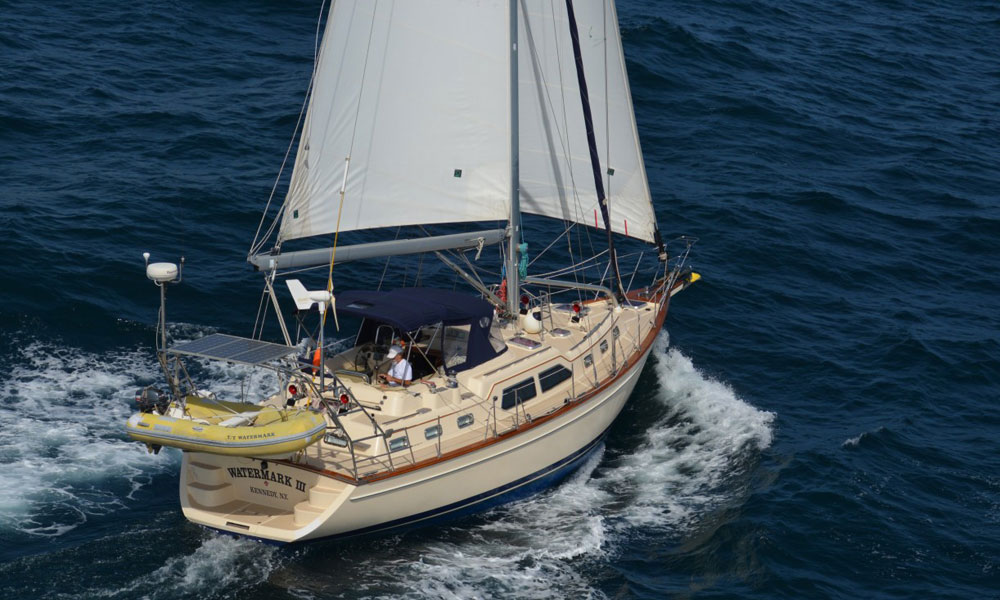
Passport 40
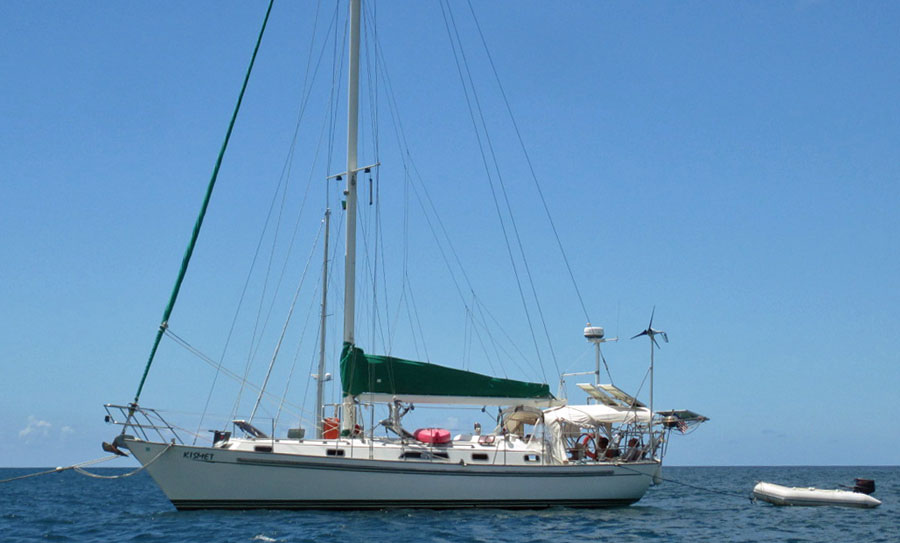
More Cruising Yachts Pics Please...
Hallberg-rassy 42 (enderlein), recent articles.
'Natalya', a Jeanneau Sun Odyssey 54DS for Sale
Mar 17, 24 04:07 PM
'Wahoo', a Hunter Passage 42 for Sale
Mar 17, 24 08:13 AM
Used Sailing Equipment For Sale
Feb 28, 24 05:58 AM
Here's where to:
- Find Used Sailboats for Sale...
- Find Used Sailing Gear for Sale...
- List your Sailboat for Sale...
- List your Used Sailing Gear...
- Sign-up for our newsletter, 'The Sailboat Cruiser' ...
- Identify this month's Mystery Boat...
Our eBooks...

A few of our Most Popular Pages...

Just a headsail and a mainsail - simple and efficient.
Read more...
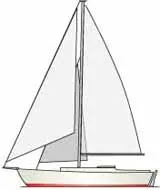
A smaller headsail and a staysail makes sail handling easier.
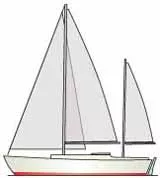
A second mast with a mizzen sail, for greater versatility.
Copyright © 2024 Dick McClary Sailboat-Cruising.com
- New Sailboats
- Sailboats 21-30ft
- Sailboats 31-35ft
- Sailboats 36-40ft
Sailboats Over 40ft
- Sailboats Under 21feet
- used_sailboats
- Apps and Computer Programs
- Communications
- Fishfinders
- Handheld Electronics
- Plotters MFDS Rradar
- Wind, Speed & Depth Instruments
- Anchoring Mooring
- Running Rigging
- Sails Canvas
- Standing Rigging
- Diesel Engines
- Off Grid Energy
- Cleaning Waxing
- DIY Projects
- Repair, Tools & Materials
- Spare Parts
- Tools & Gadgets
- Cabin Comfort
- Ventilation
- Footwear Apparel
- Foul Weather Gear
- Mailport & PS Advisor
- Inside Practical Sailor Blog
- Activate My Web Access
- Reset Password
- Pay My Bill
- Customer Service

- Free Newsletter
- Give a Gift

How to Sell Your Boat

Cal 2-46: A Venerable Lapworth Design Brought Up to Date

Rhumb Lines: Show Highlights from Annapolis

Open Transom Pros and Cons

Leaping Into Lithium

The Importance of Sea State in Weather Planning

Do-it-yourself Electrical System Survey and Inspection

Install a Standalone Sounder Without Drilling

Rethinking MOB Prevention

Top-notch Wind Indicators

The Everlasting Multihull Trampoline

In Search of the Snag-free Clew

What’s Involved in Setting Up a Lithium Battery System?

Reducing Engine Room Noise

Breaking Point: What Can Go Wrong With Your Yanmar?

Mildew-resistant Caulks for Boats

Can We Trust Plastic Boat Parts?

Repairing Molded Plastics

Mailport: Marine plywood, fuel additives, through bolt options, winch handle holders

The Day Sailor’s First-Aid Kit

Choosing and Securing Seat Cushions

Cockpit Drains on Race Boats

Rhumb Lines: Livin’ the Wharf Rat Life

Safer Sailing: Add Leg Loops to Your Harness

Resurrecting Slippery Boat Shoes

Tricks and Tips to Forming Do-it-yourself Rigging Terminals

Marine Toilet Maintenance Tips

Learning to Live with Plastic Boat Bits

The Ultimate Guide to Caring for Clear Plastic
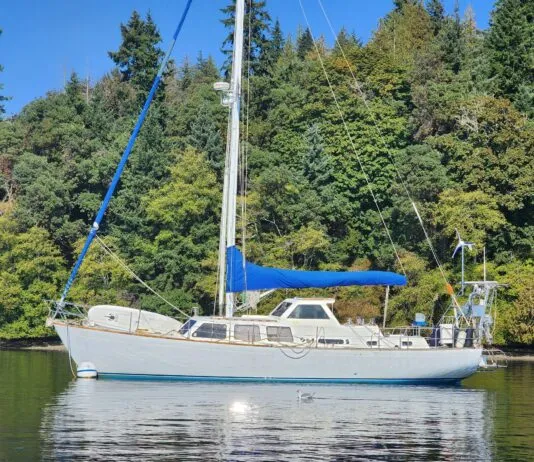
Do You Really Need a Bigger Boat?

Beneteau First 42s 7
Beneteau 40.7.
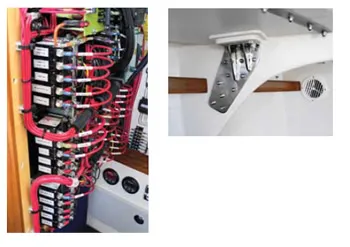
Leadership 44 is Strong, Stiff, and Lightweight
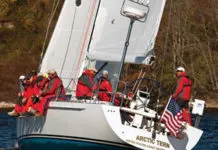
New Boat Review: A Look Inside the New Leadership 44
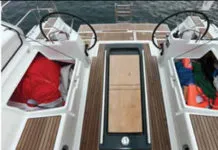
New Boat Review: Beneteau Oceanis 41

Velux Race Boats Showcase Alternative Energy Options
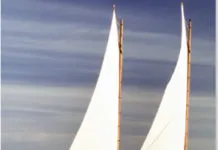
The Magic of Munroes Sharpies
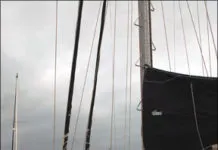
Boat Review: The Hinckley 49
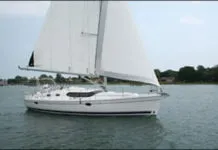
Practical Sailor new boat review: Hunter 45DS
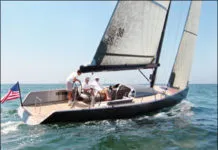
The Daysailers of Daydreams
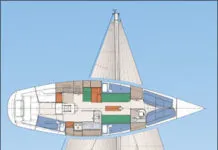
New Navy 44 Sail-training Sloop Built to Last
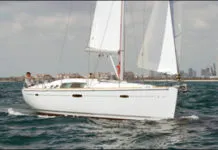

Beneteau 46

Hanse 400 Boat Review
Latest videos.

Island Packet 370: What You Should Know | Boat Review

How To Make Starlink Better On Your Boat | Interview

Catalina 380: What You Should Know | Boat Review
- Privacy Policy
- Do Not Sell My Personal Information
- Online Account Activation
- Privacy Manager

Home » Blog » Bluewater sailboats » The best bluewater sailboats under 40 feet (we analyzed 2,000 boats to find out)
The best bluewater sailboats under 40 feet (we analyzed 2,000 boats to find out)
By Author Fiona McGlynn
Posted on Last updated: August 17, 2023
What are the best bluewater sailboats under 40 feet?
Last year we analyzed 2,000 offshore designs to bring you a list of the most popular bluewater sailboats .
However, most people are searching for a boat in a particular size class. So, we decided to do a double-click and look at the best sailboats under 40 feet for offshore sailing.
If you’re interested in an even smaller boat, there are plenty of great options under 30 feet in our list of the best small sailboats for sailing around the world .
The characteristics that make a sailboat a bluewater sailboat are a hotly debated topic, so we wanted to use real-world data and find out what cruisers are using to cross oceans and sail around the world.
We looked at 2,000 boats that entered the Pacific Puddle Jump (PPJ) over the last 12 years. For those of you who aren’t familiar with the PPJ, it’s a rally that crosses the Pacific ocean. We took part in 2017 and had a ball!
Also, if you’re looking to buy one of the bluewater boats on this list, you might want to check out our post on the best places to buy used boats and how to find free or cheap boats for sale .
Just be aware that a bluewater boat isn’t necessarily offshore-ready. Our top five picks are all older boats and will undoubtedly require work.
Every cruiser we know made substantial repairs and additions before going offshore: adding watermakers , life rafts, solar panels, and more.
Also, always have a boat inspected by a professional and accredited marine surveyor before buying it or taking it offshore.
So, without further preamble, here are the best bluewater sailboats under 40 feet.
The best bluewater sailboats under 40 feet
1. the westsail 32.
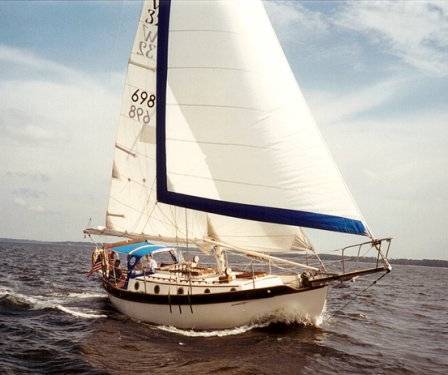
The Westsail 32 is one of the most iconic bluewater cruisers. Built by the Westsail Corporation in the 1970s, this plucky, small sailboat has developed a cult following over the decades. Since 2009, 19 have set out to cross the Pacific in the PPJ rallies.
The Westsail 32 is known for its sturdy construction, seaworthiness, and classic looks. In fact, it set the standard for what a real bluewater cruiser should look like. In 1973, the Westsail 32 was featured in Time magazine and inspired many Americans to go cruising.
Though popular, this boat has earned the unenviable nickname “ Wetsnail 32″, a reference to its poor ability to windward and sluggish performance. But Westsail 32 owners don’t care that they won’t be winning any races.
What the boat lacks in speed it makes up for in classic looks and excellent offshore cruising characteristics. Many owners have crossed oceans and circumnavigated the globe in their Westsail 32s.
2. Tayana 37
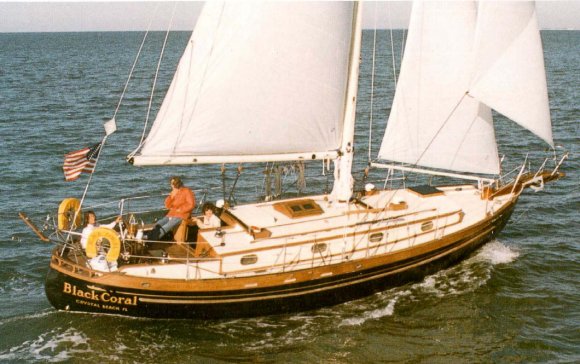
The Tayana 37 is a wildly popular Bob Perry design. It first rolled off the production line in 1976 and there are now several hundred of them sailing the world’s oceans.
Above the waterline, the Tayana 37 boasts beautiful traditional lines. However, Perry wanted to avoid the unenviable (read: sluggish) performance characteristics, associated with double-enders.
So, he designed the Tayana 37 with a cut-away long keel and moderate displacement, maintaining the classic look, while achieving reasonable performance.
The Tayana 37 has a devoted following of offshore enthusiasts. Since 2009, 12 Tayana 37s have set out to cross the Pacific in the PPJ rallies.
Read more about the Tayana 37 in this Practical Sailor review .
3. Hans Christian 38T
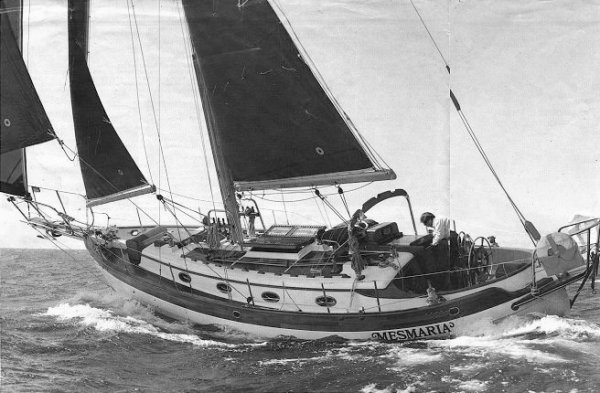
The Hans Christian 38T is a full-keeled, heavy displacement bluewater boat with a long bowsprit and a clipper bow, giving it a distinctive appearance. It was first introduced in 1976 and was produced until the early 1990s.
If you hadn’t already guessed, the “T” in the name stands for “Traditional”. Like many boats on this list, it takes a cue from Crealock’s famous Westsail 32 which sparked a craze in the 1970s and 80s for Scandinavian-style doubled-enders.
It’s gained a reputation as a capable and seaworthy cruising yacht. Many owners have crossed oceans and completed circumnavigations in Hans Christian 38Ts.
By our count, eight Hans Christian 38Ts have participated in Pacific Puddle Jump rallies over the last 12 years.
4. Island Packet 380
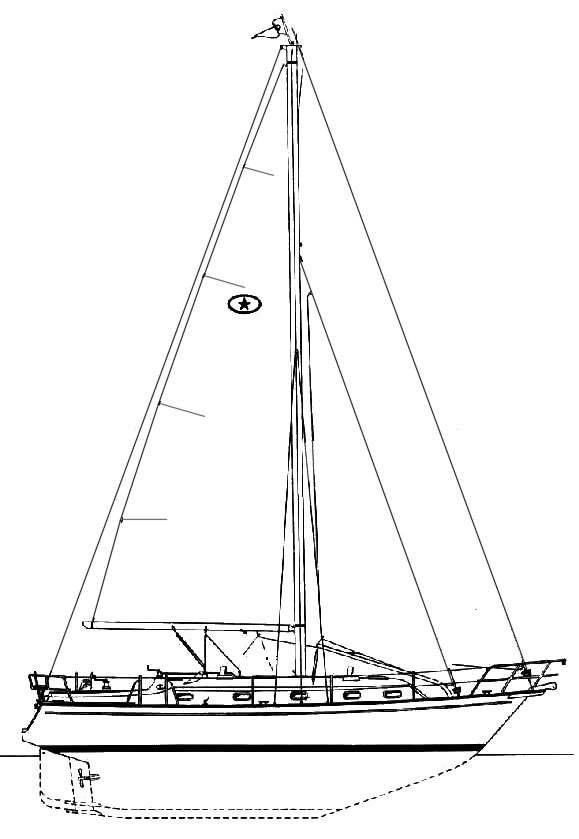
I’ve always considered Island Packets the Rolls-Royce of the bluewater boat world. Their distinctive cream-colored topsides make them easy to spot and their robust bluewater construction makes them the envy of many far-flung anchorages.
Designed by Bob Johnson and built by Island Packet Yachts in Florida, the Island Packet 380 was first introduced in 1998. 169 were built before 2004, over which time it gained a reputation as a capable and comfortable offshore cruiser.
Having been built in the ’90s and early 2000s, this is a relatively newer boat. In many ways, it offers the best of both worlds, a classic-looking boat with all the modern cruising conveniences.
The Island Packet 380 design prioritizes safety and stability. It also has several offshore features including standard twin bow rollers, a divided anchor locker, and ample storage for cruising gear.
Life below deck is comfortable too. With a 13-foot (4 meter) beam there’s plenty of room for liveaboard amenities.
The Island Packet 380 is a popular choice for long-distance cruising and offshore passages. Since 2009, six Island Packet 380s have set out to cross the Pacific in PPJ rallies.
Read more about the Island Packet 380 in this review by Yachting Monthly .
5. Ingrid 38
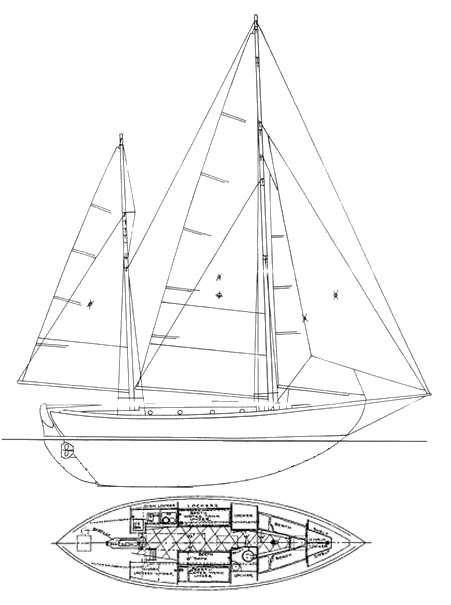
The Ingrid 38 is a double-ended sailboat that was originally designed for wood construction in 1938.
In 1971, Bluewater Boat Co. began building a fiberglass version. The design proved hugely popular and more than 140 were built.
With a full keep and heavy displacement, the Ingrid 38 epitomizes the traditional bluewater cruiser. Yet, it remains a well-loved design today. Since 2009, six Ingrid 38s have set out to cross the Pacific in PPJ rallies.
Description
Fiona McGlynn is an award-winning boating writer who created Waterborne as a place to learn about living aboard and traveling the world by sailboat. She has written for boating magazines including BoatUS, SAIL, Cruising World, and Good Old Boat. She’s also a contributing editor at Good Old Boat and BoatUS Magazine. In 2017, Fiona and her husband completed a 3-year, 13,000-mile voyage from Vancouver to Mexico to Australia on their 35-foot sailboat.
Terms and Conditions - Privacy Policy
Oceanis 30.1
Oceanis 34.1, oceanis 37.1, oceanis 40.1, oceanis 46.1, oceanis 51.1.
- Oceanis Yacht 54
- Oceanis Yacht 60
- FIGARO BENETEAU 3
- Heritage Sailing Yacht
- Flyer 7 SUNdeck
- Flyer 7 SPACEdeck
- Flyer 8 SUNdeck
- Flyer 8 SPACEdeck
- Flyer 9 SUNdeck
- Flyer 9 SPACEdeck
- Antares 7 Fishing
- Antares 8 Fishing
- ANTARES 11 FLY
- Gran Turismo 32
- Gran Turismo 36
- Gran Turismo 41
- Gran Turismo 45
- Swift Trawler 35
- Swift trawler 41 Sedan
- Swift trawler 41 Fly
- Swift Trawler 48
- Grand Trawler 62
- Heritage Powerboats
- Future Owners
- Our History
- Our Architects and Designers
- Our philosophy
- Our Innovations
- Your way to ownership
- Event calendar
- Tests and Awards

- Description
- Key Features
Specifications
Following in the wake of her elder sister the Oceanis 46.1, this 40-foot cruiser, with a new hull design by Marc Lombard , offers unrivaled deck volume and interior space , with zero concessions to performance. The Oceanis 40.1 is available in different layouts, drafts and rig options , adapting to the most demanding sailor’s cruising requirements and satisfying their need for comfort and pleasure under sail.
NAVAL ARCHITECT : Marc Lombard
INTERIOR & DECK DESIGN : Nauta Design
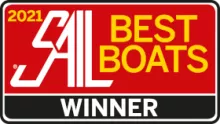
Exterior design
How can you enjoy life at anchor as much as while sailing? With the innovative flared hull design of the Oceanis 40.1, BENETEAU has broken new ground but made no concessions. The result is a hull that has true speed potential and is stiff under sail. Above the waterline, her deck plan and ultra-spacious interior by Nauta Design is unheard-of on a boat this size. You cannot help feeling that you are aboard a 45 foot cruiser!
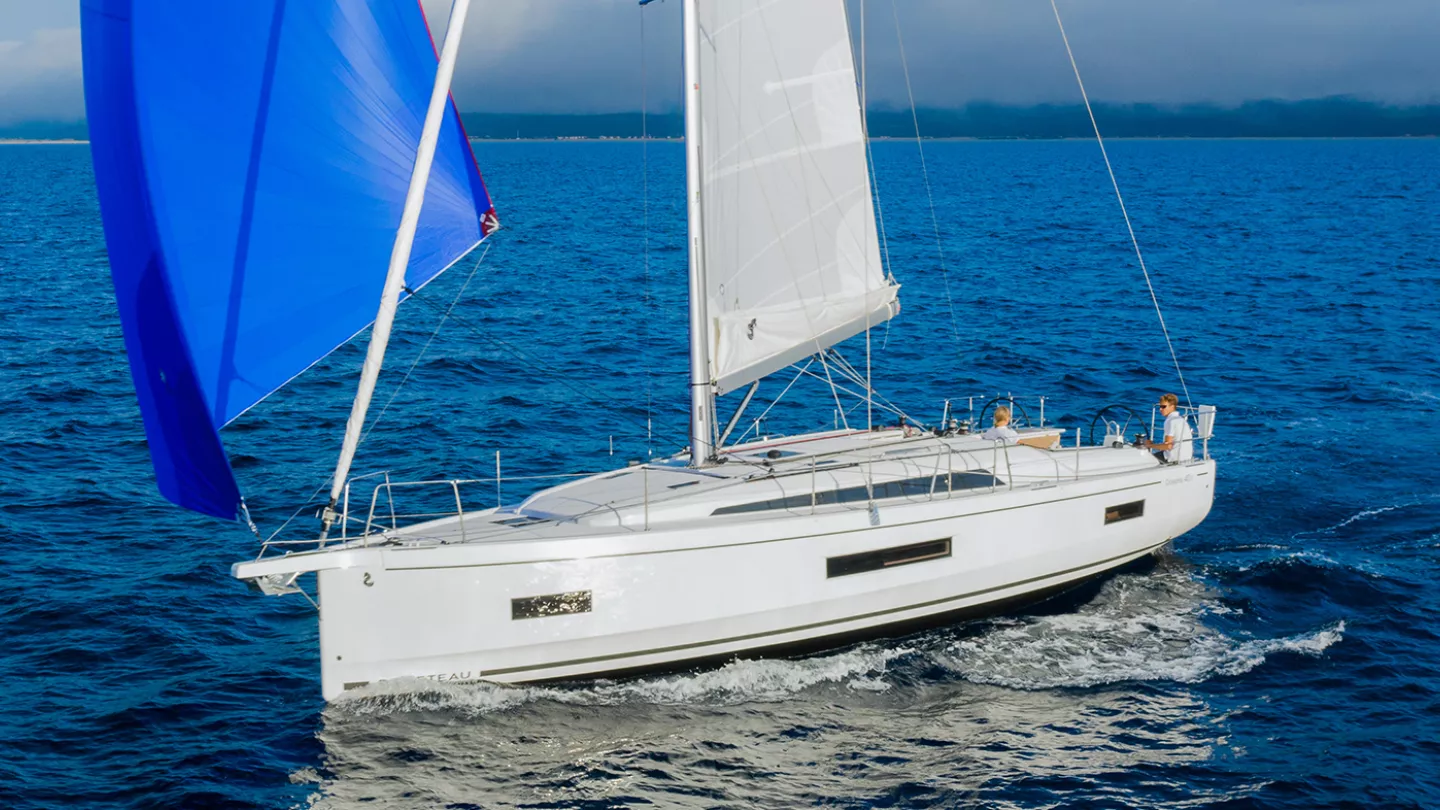
Interior Design
With your choice of either a walnut or white oak , the styling of the interior by Italian designer Nauta is remarkably bright and excels in the skillful arrangement of the living spaces. She is available with two, three, or four cabins, and a C-shaped galley to the starboard that offers an abundance of storage and a spacious countertop. On the port side, there is a large salon with a table, complete with a removable bench. A chart table at the foot of the companionway provides ample working space. Everything is modular, so that everyone can live the way they want and enjoy sailing wherever the wind takes them.
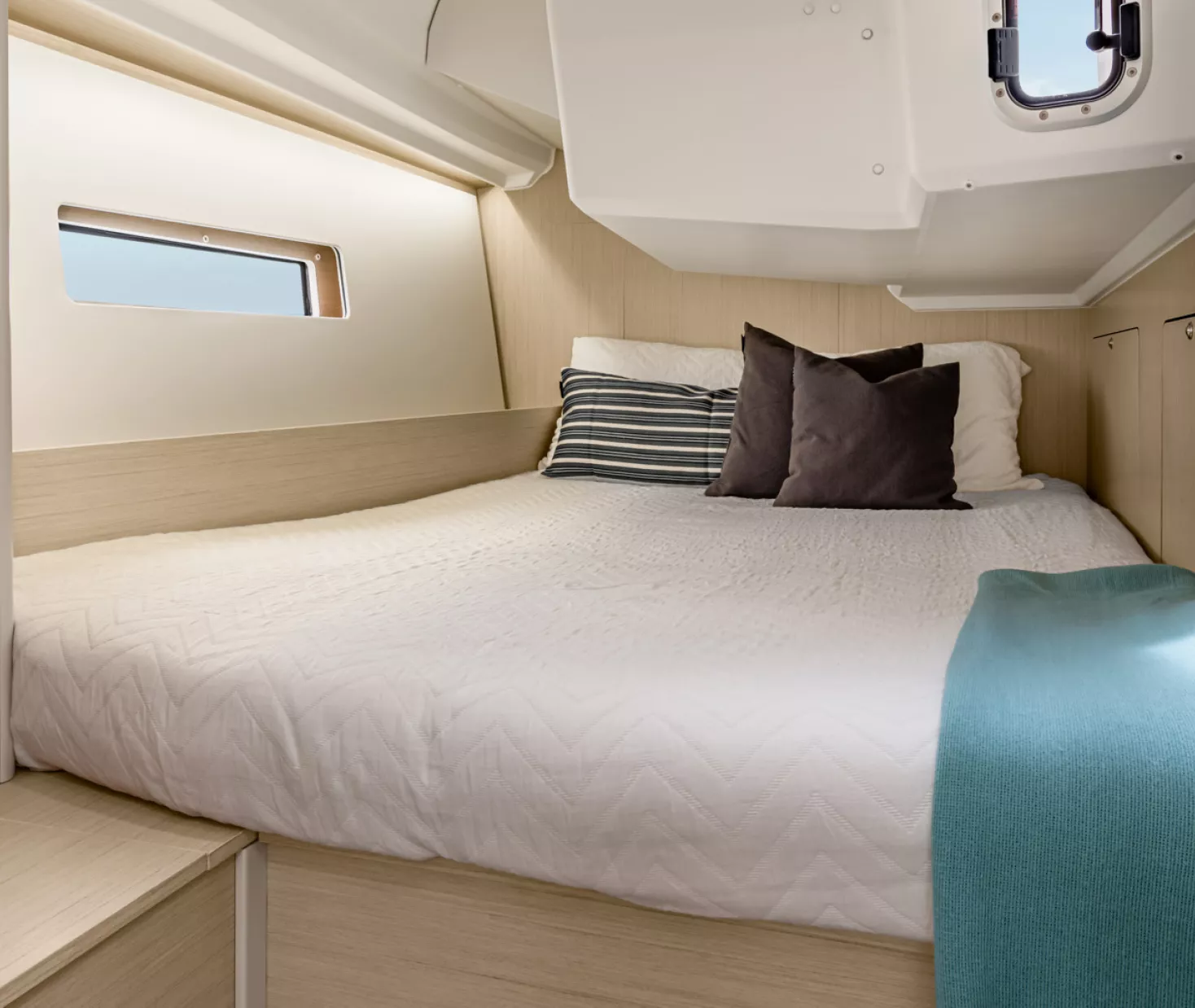
40 FEET OF SPACE!
The philosophy of the Oceanis 40.1 is to make sailing and mooring pleasurable. The strengths of this cruiser, studied in detail by the architect Marc Lombard and the BENETEAU design office, are unrivalled interior space, a huge deck plan, and the ability to clock up miles when you are cruising.
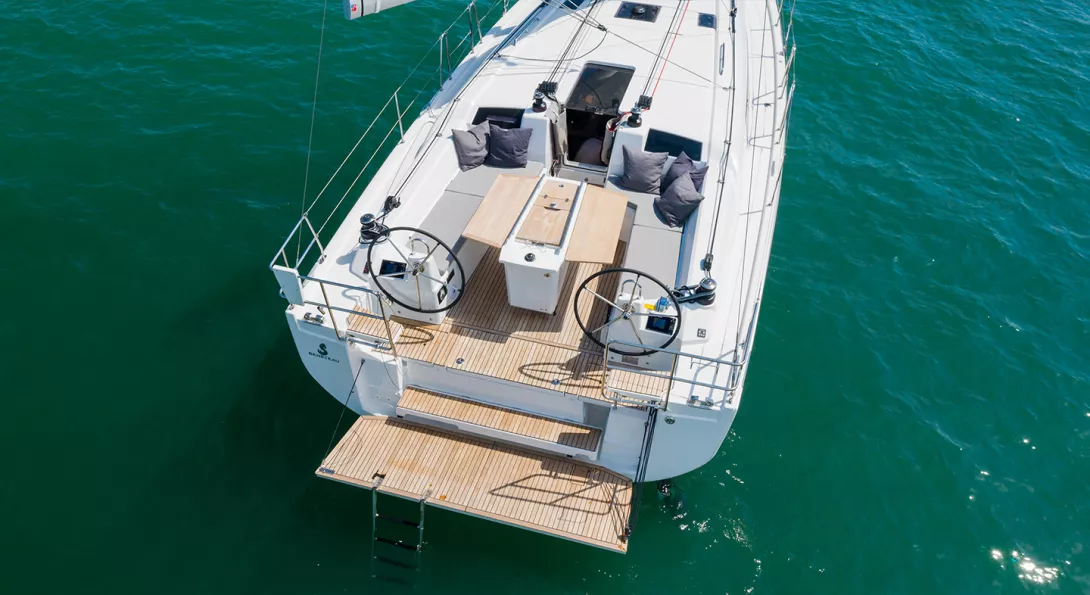
LIFE AT ANCHOR
The ergonomics and easy maneuvering in the cockpit make life onboard simple. Nothing interferes with the joy of life at anchor. Feel like splashing around the boat in an idyllic creek? The transom easily converts to an extensive swim platform, similar in size to the ones you find on the largest Oceanis cruising yachts. Having access to the sea is an integral part of life on a sailing yacht, and this model is one of a kind.
SEEKING EXCITEMENT UNDER SAIL…
As there is no one way to sail, and because everyone takes their cruising at their own pace, the Oceanis 40.1 comes in several versions. Sailors keen on performance can choose the First Line Pack, with a taller mast and a deeper draft. Alternatively, the in-mast furling system and self-tacking jib will make maneuvering easier when shorthanded. A classic mast for a semi-full batten mainsail is also available.
HEAVENS ABOVE, SO MUCH SPACE!
The hatches and the many hull and coachroof portholes, two of which face towards the cockpit, fill the boat with natural light and ventilation, making her exceptionally bright. The Oceanis 40.1 comes in 4 different versions with two, three, and four cabins to accommodate everyone’s idea of a holiday on board. Couples and large families will feel at home. The owner version has a cabin with an ensuite shower and head, and a bed easily accessible from either side. The four-cabin layout has two forward berths with bunk beds.
Equipped With SEANAPPS
The easiest way to keep your boat safe and ready to cruise anytime.
The new Seanapps app is the ultimate solution to help you indulge your passion for boating. With the touch of your finger, you can easily connect, monitor and order services for your boat – from routine maintenance, to requesting a wash or fuel or having us complete a repair.
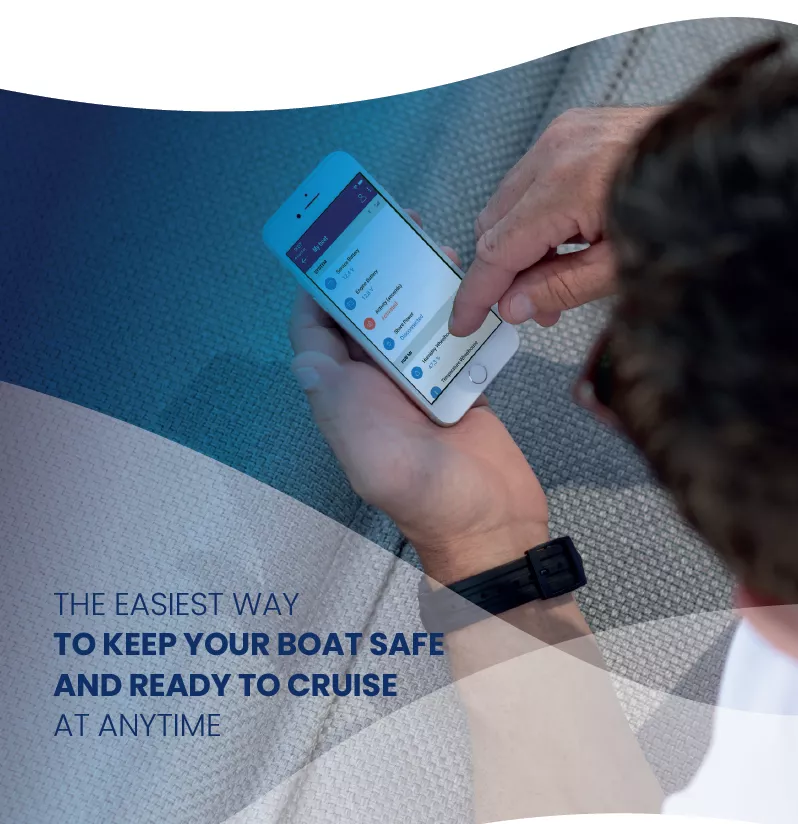
Virtual tour
The information below is intended for general informational purposes only and is subject to change without notice and does not constitute a contractual agreement. Any descriptions, representations, or statements made in this document are not to be considered binding unless explicitly stated otherwise in a formal contractual agreement.
Length Overall
Beam overall
Light displacement
Air Draft Max
Fuel Capacity
Water Capacity
Max. engine power
Cabin Number
CE Certification
A10 / B10 / C12
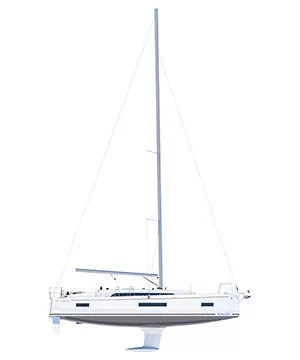
- CE Certification A10/ B10/C12 (12 passengers on board).
- Large benches seating six guests, with a fold away table.
- Two steering wheel stations each with a comfortable seat.
- First Line version: extra-long mast and bigger draft.
- Standard version: in-mast furling system and self-tacking jib.
- Large locker in 2 sections in the cockpit floor.
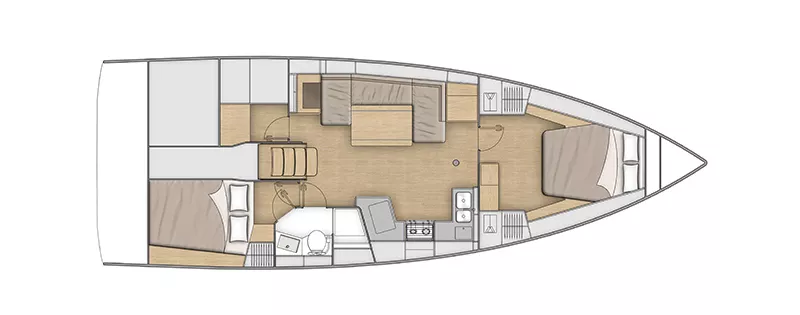
2 cabins & 1 head
- U-shaped salon seat
- C-shaped fitted galley: fridge, sink, 2-ring hob, oven, storage and worktop.
- Master cabin with double bed positioned on the boat center line.
- Aft cabin with double berths.
- Shower room with shower compartment and marine toilet.
- Several hull portholes and coach roof port lights make the space naturally bright.
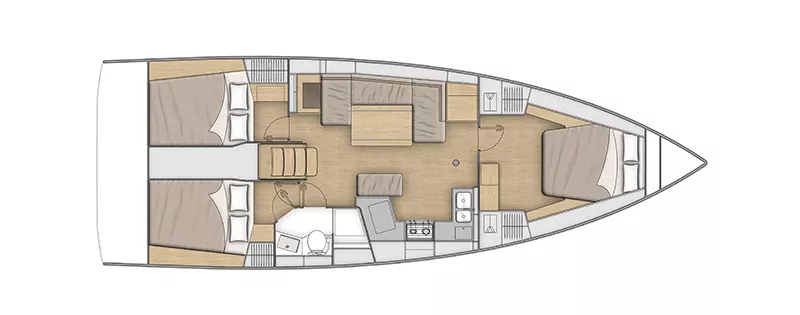
3 cabins & 1 head
- U-shaped salon seat.
- Master cabin with double bed positioned on the boat’s centreline.
- Two aft cabins with double berths.
- Shower room with shower compartment, washbasin cabinet and marine toilet.
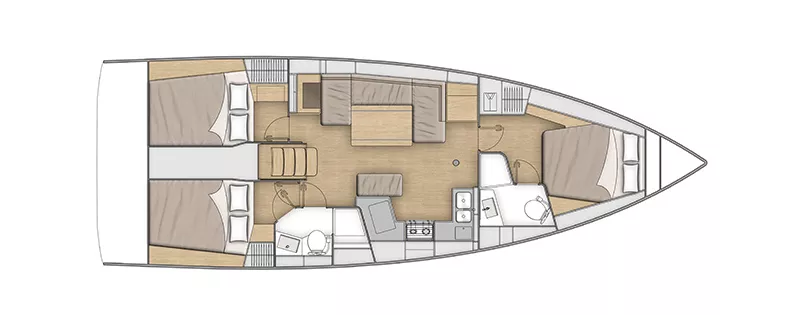
3 cabins & 2 heads
- Two shower rooms with shower compartment and marine toilet.
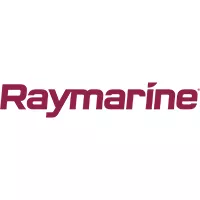
HARKEN HARDWARE

Press Reviews
Boat Review - The layout on the new Beneteau 40.1 is excellent for ease of sailhandling, notes Ewenson. Read More
Yachting Art
Boat Review - All about the coming BENETEAU Oceanis 40.1. Read More
Cruising World
Virtual Q&A - Cruising World recently sat down with Beneteau to get the inside scoop on the brand new cruiser. Read More
BOAT REVIEW: The boat is the new BENETEAU Oceanis 40.1, and it seems to be having as much fun as the crew. Read More
All Oceanis news

Nautic boat show 2022 : Spotlight on remarkable sustainable innovations at BENETEAU
BENETEAU has decided to follow the path of innovation to reduce the environmental impact of sailing. Practical yet ground-breaking innovations that were visible on the First 44e and the Oceanis 30.1e sailing yachts world premiered at the Nautic Boat Show in Paris.
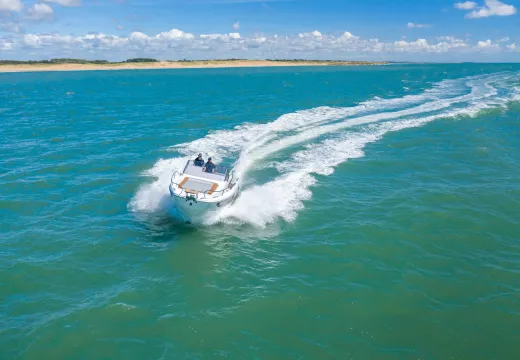
Activities to Enjoy on Your Next Sailing Yacht or Powerboat Trip
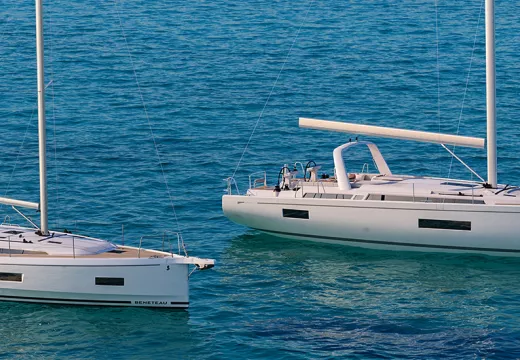
Oceanis 40.1 and Oceanis Yacht 54: The New Wave of Oceanis Cruising Yachts by BENETEAU
Customer care.
Buying a BENETEAU doesn’t have to be a daunting task. We have teams of experts to guide you through the entire process – everything from sea trials, financing, and customization to after-sale commissioning, service, and maintenance. We are proud to have one of the largest, most highly-regarded dealer networks in the world. We’re ready to provide you with the assistance and expertise needed to launch you and your BENETEAU on a lifetime of happy, rewarding, and memorable voyages.
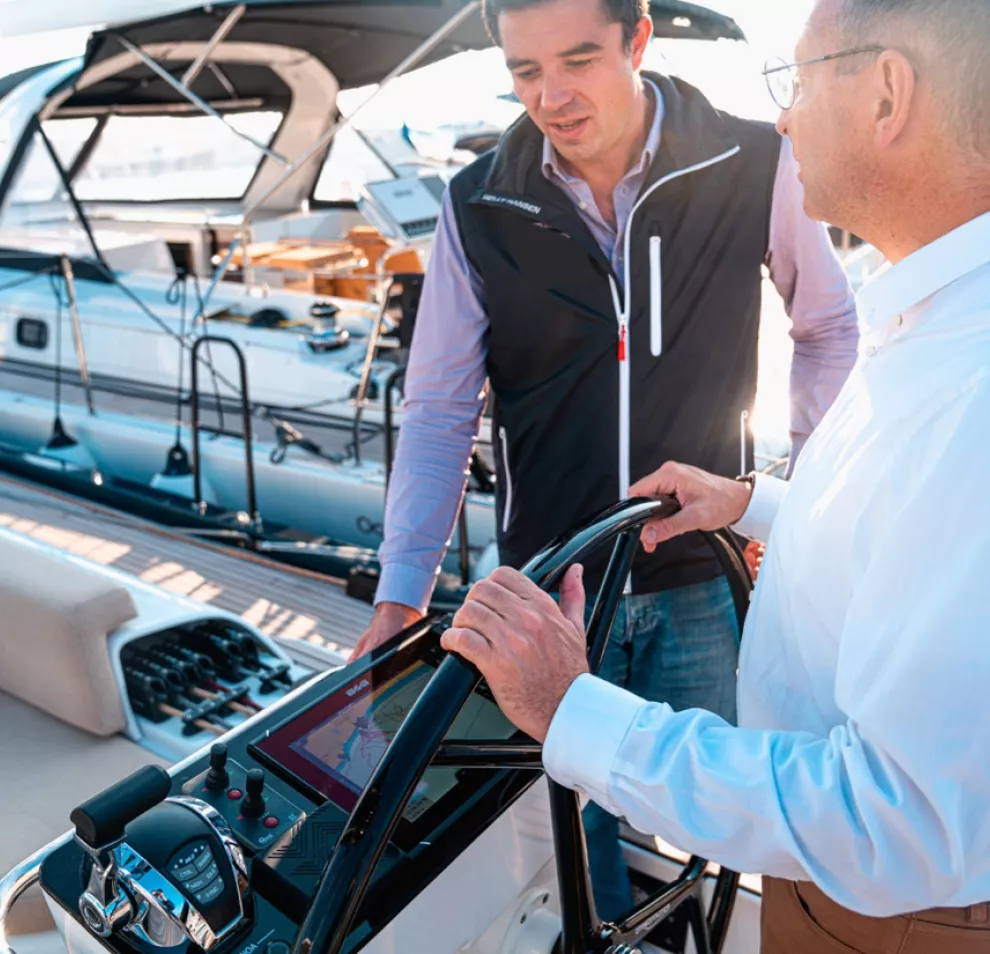
Other models in the range
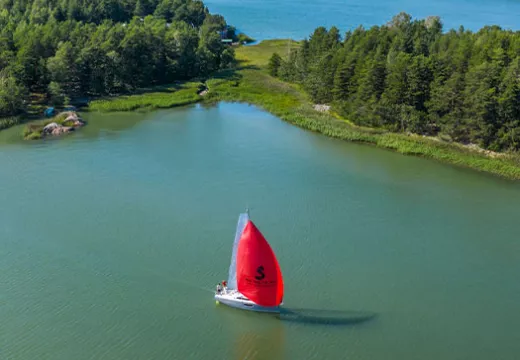
9.53 m / 31’3’’
2.99 m / 9’10’’
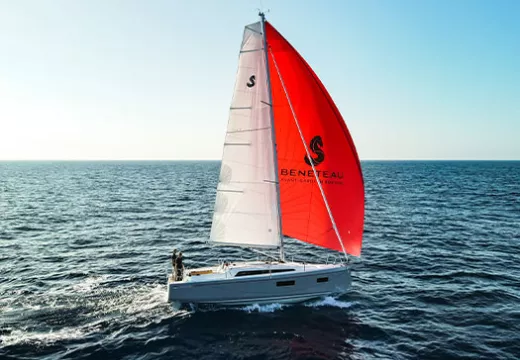
10.77 m / 35’4’’
3.57 m / 11’9’’
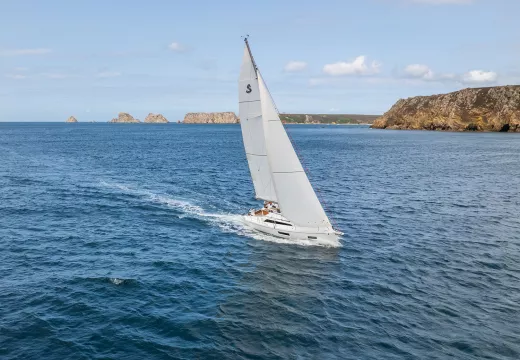
11.93 m / 39’2’’
3.92 m / 12’10’’
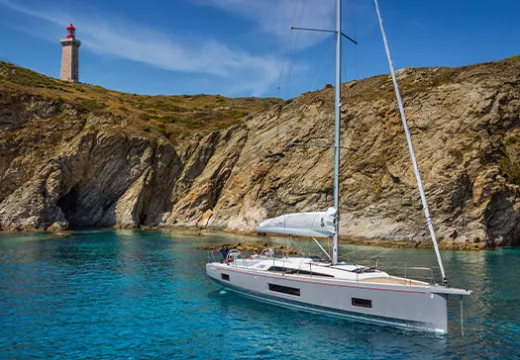
14.6 m / 47’11’’
4.5 m / 14’9’’
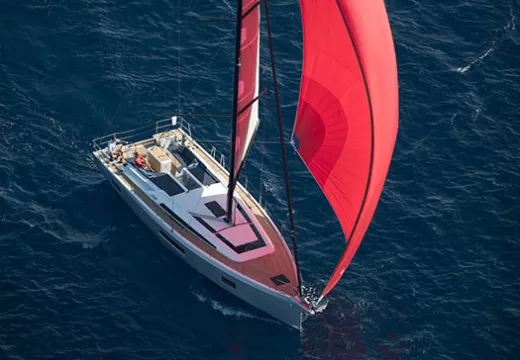
15.94 m / 52’4’’
4.8 m / 15’9’’
Select your area and your language
- Chinese, Simplified
Yachting World
- Digital Edition

Fast and furious Neo 400 is claimed to be the ‘fastest cruising 40-footer in the world’
- Toby Hodges
- February 20, 2015
Is the boast plausible? Toby Hodges takes a close look at this muscular racer-cruiser

A sign that brags ‘the fastest cruising 40-footer in the world’ is a sure-fire way to attract attention. My first impressions of the Neo 400 stern-to at the Genoa Boat Show made me question that statement, but the more I discovered about this quirky boat, the more the boast seemed plausible.
She’s a little like the tweaked road cars in the Fast and Furious film series – ie not an out-an-out racing design, but a muscular racer-cruiser with accommodation.
The Neo is built entirely in carbon (optionally pre-preg), so weighs a butterfly-light 4.8 tonnes, with exactly half of that in her torpedo-shaped keel. And like the nitro-fuelled Japanese cars in the blockbuster films, she is capable of exhilarating speeds – reportedly up to 24 knots downwind.
The prototype has clocked 10,000 miles since launching in February. Once Paolo Semeraro, the man behind her conception, had finished showing me round the boat, she departed for the Rolex Middle Sea Race.
America’s Cup designer Giovanni Ceccarelli drew the Neo for racing under ORCi and IRC ratings. Her hull is optimised for max waterline length at 20° heel and features a slightly reverse stem. The result is, says Semeraro: “She sails upwind like an Xp44 and downwind like a Class 40.”
Unusual options include a very deep keel and high aspect rudder, which can retract for accessing shallower waters. Both aft cabins include three single berths that can be canted to the optimum windward angle to suit racing crews. And forward of the mast a loft option is offered, which is left open to create a large saloon.

Neo 400 interior
Another notable feature is the double compression post in the centre of the interior, which looks like carbon scaffolding, but serves to absorb mast base and shroud base loads. Construction throughout looks rigid, including solid laminate ringframes, a Weldox steel keel fin and a lead bulb.
The Neo is built at Banks Sails in Bari, Italy. It produces two carbon sails per day on average so boasts plenty of laminating experience. It is no surprise then that a large sailplan has been developed for the boat to include a square-top main and a generous foretriangle for asymmetric sails flown off a fixed sprit.
A planned Neo 550 looks sleeker and more refined. With greater attention given to the accommodation and weighing just over ten tonnes, she could be one to watch. The 400 viewed was a working prototype, which was obvious from the standard of finish. And I suspect, however fast or furiously she sails, the price of construction may ensure she remains a niche boat.
Price ex VAT €355,000 (£282,000). www.neoyachts.com
LOA 12.15m/39ft 10in
LWL 11.50m/37ft 9in
Beam 3.99m/13ft 1in
Draught 2.60m-1.60m/ 8ft 6in-5ft 3in
Displacement 4,600kg/10,141lb
This is an extract from a feature in the November 2014 issue of Yachting World
7 Legendary Solo Bluewater Sailboats Worth Considering
When setting out to explore the open seas solo, you'll have to choose the right bluewater sailboat from so very many available options. The perfect boat for sailing single-handed is one that's not only safe and seaworthy, but also easy to handle on your own. In this article, we've handpicked the top 7 legendary solo bluewater sailboats worth considering for their excellent track records.
The most legendary solo bluewater sailboats are the Contessa 32, Westsail 32, Hallberg-Rassy 42F, Pacific Seacraft 37, Island Packet 38, Tayana 42, and Amel 54. These boats have it all: from robust designs to a world-renowned reputation for performance and reliability. They are known for their seaworthiness, durability, and comfort.
We understand the importance of balancing comfort and performance when spending prolonged periods at sea. Each of these sailboats has been proven to provide a harmonious blend of these attributes. Let's get to know them more below.
- Solo bluewater sailboats are designed to be sailed by a single person, making them ideal for solo circumnavigation or long-distance cruising.
- You can get the Contessa 32 and Westsail 32 for as little as $30,000.
- The maintenance and repair costs of the seven boats range from $5,000 to $50,000 per year.
- Marina fees and insurance can range from $5,000 to $20,000 per year.
- Factor in upgrades and equipment costs that can reach up to $100,000.
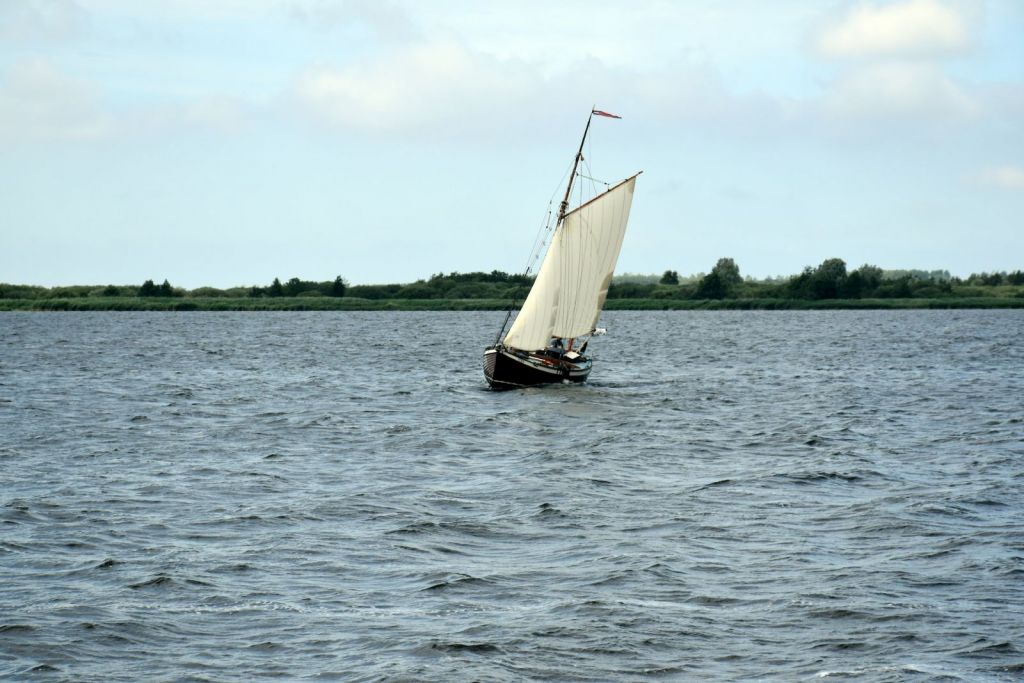
On this page:
The best solo bluewater sailboats, what makes a good solo bluewater sailboat, cost considerations when choosing a sailboat, maintaining your bluewater sailboat, contessa 32 is a classic, compact, and seaworthy sailboat.
Contessa 32's sturdy construction and excellent sailing performance have earned it a legendary reputation among sailors. With a well-designed interior layout, it has space for living aboard during your solo adventures. The Contessa 32 is a classic bluewater sailboat designed by David Sadler in the 1970s. It is known for its excellent balance, seaworthiness, and speed. It has a full keel, moderate displacement, and a classic design that has stood the test of time.
Westsail 32 is known for its rugged construction
The Westsail 32 gained fame as an affordable, rugged, and capable long-distance cruiser. Its full keel and sturdy hull ensure a comfortable ride in rough seas. The practical, function-driven interior makes it easy for solo sailors to maintain and navigate the vessel while providing essential amenities for an extended voyage.
Westsail 32 is another classic bluewater sailboat that was designed by William Crealock in the 1970s. It is known for its rugged construction, spacious interior, and excellent performance in heavy weather. The Westsail 32 has a full keel, heavy displacement, and a classic double-ender design.
Hallberg-Rassy 42F is known for its top-notch craftsmanship
The Hallberg-Rassy 42F is another superb choice for single-handed bluewater sailing. This Swedish-built yacht is well-renowned for its top-notch craftsmanship, stability, and comfort. It offers a spacious, well-lit interior, ensuring you'll enjoy your time below deck while cruising the open seas.
Hallberg-Rassy 42F is a modern bluewater sailboat designed by German Frers in the 1990s. It is known for its luxurious interior, excellent performance, and high-quality construction. The Hallberg-Rassy 42F has a fin keel, a spade rudder, and a modern design that combines comfort and performance.
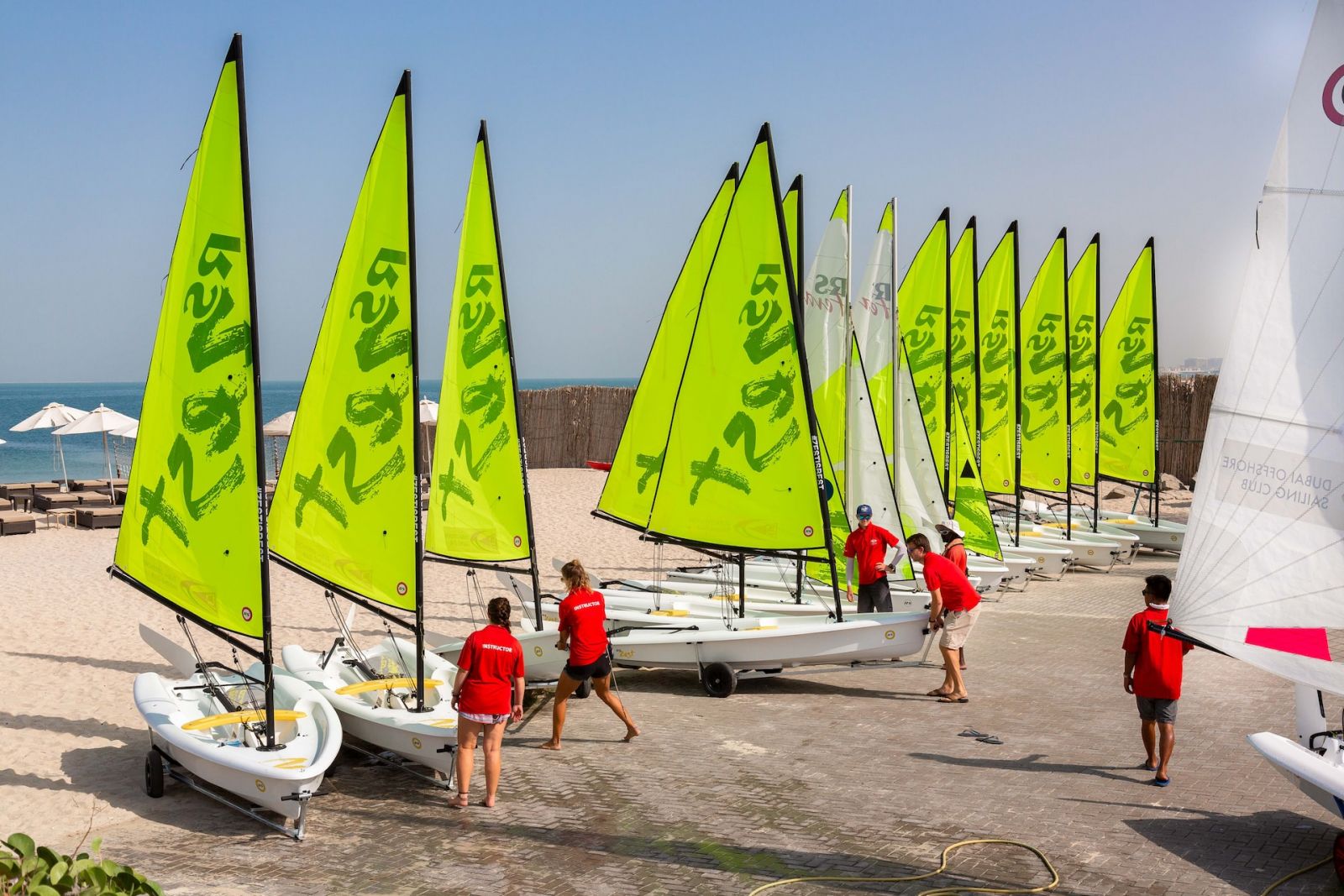
Pacific Seacraft 37 is designed for serious cruising
Pacific Seacraft 37 is a sturdy and reliable boat for solo sailors. Its moderate displacement and full keel provide excellent stability, while the well-thought-out interior layout includes abundant storage and comfortable living quarters. Its reputation as a proven bluewater cruiser makes it a top choice for solo sailors. The Pacific Seacraft 37 is another classic bluewater sailboat designed by Bill Crealock in the 1970s. It is known for its excellent balance, seaworthiness, and comfort.
Island Packet 38 is known for its spacious interior
Island Packet 38 is a popular choice among solo cruisers, thanks to its stable full keel design and living space. Its build quality, comfort, and performance make it well-suited for long-distance sailing. The spacious interior and practical layout ensure you have everything needed for a successful solo journey. Island Packet 38 is a modern bluewater sailboat designed by Bob Johnson in the 1990s. It 38 has a full keel, moderate displacement, and a modern design that combines comfort and performance.
Aside from bluewater sailing , there are other types of sailing discussed in this article.
Tayana 42 is known for its excellent balance, seaworthiness, and comfort
Tayana 42 is a comfortable, sea-kindly sailboat, ideal for single-handed offshore cruising. Its balanced performance, easy handling, and well-equipped interior ensure a safe and comfortable journey. It is well-regarded among sailors for its proven bluewater capabilities and timeless styling. The Tayana 42 is another classic bluewater sailboat designed by Bob Perry in the 1970s. It has a full keel, heavy displacement, and a classic design that has stood the test of time.
The Amel 54 is known for its luxury and exceptional build quality
This French-built vessel offers a spacious and comfortable interior with top-of-the-line amenities, making it an excellent option for solo sailors seeking a bluewater cruiser to explore the world in style and comfort. Its easy-to-handle design with advanced sailing systems allows you to sail solo with confidence and ease. The system includes electric winches, furling sails, and a self-tacking jib, which make it easy to handle the boat in all conditions.
To learn more about bluewater sailing , here's our comprehensive article on it.
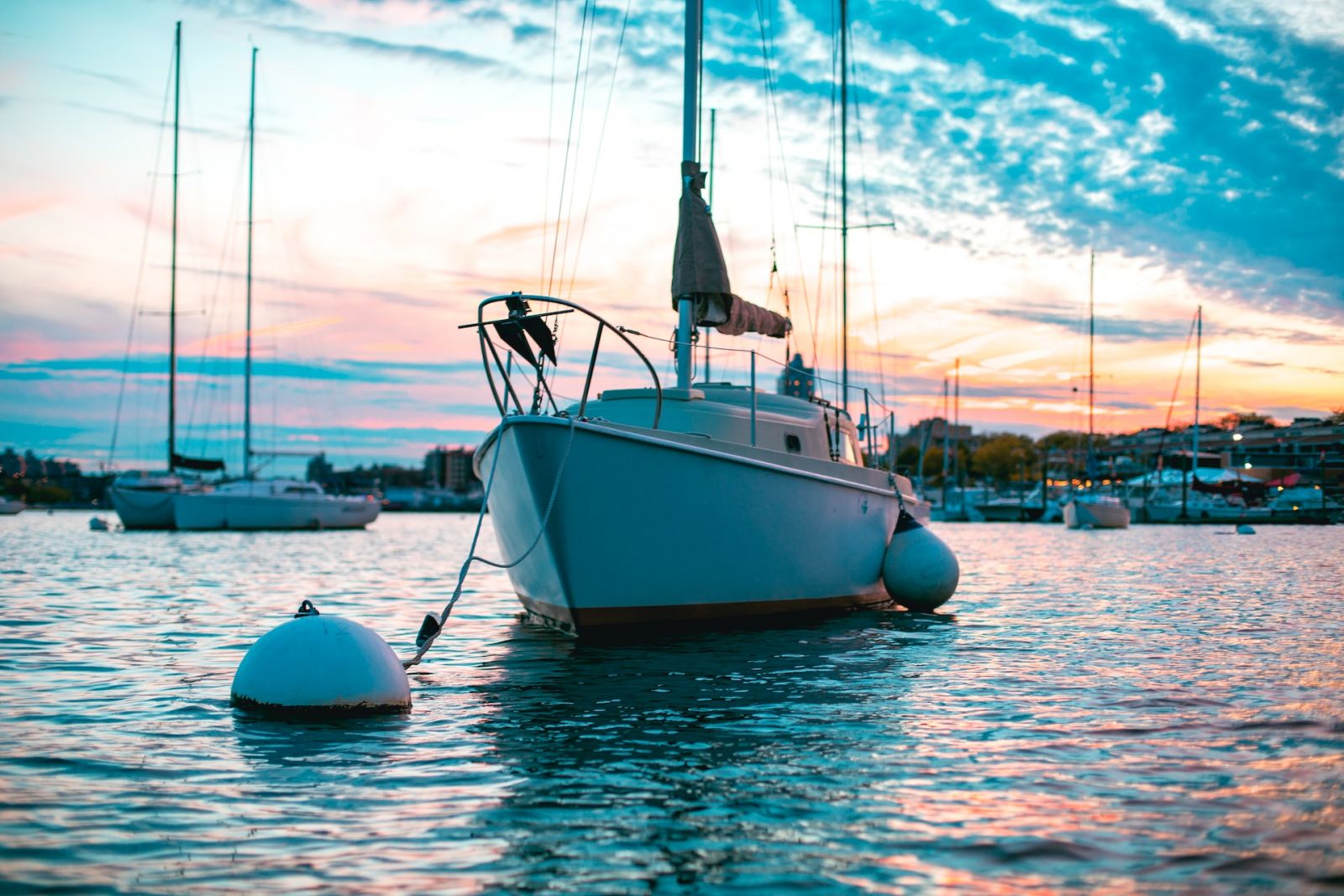
These factors will ensure not only your safety but also your comfort and ease during your sailing adventure.
Size and stability of a solo sailboat
A boat with a wide beam and short waterline provides more stability, making it easier for you to handle the vessel on your own. Some popular sailboat models known for their size and stability include the Westsail 32 and the Hunter Channel 31.
A good solo bluewater sailboat should be large enough to provide adequate storage space for supplies and equipment, while also being stable enough to handle rough seas and high winds. It should also have a well-designed hull shape that provides good stability and balance, and a keel that provides good tracking and prevents the boat from capsizing.
Ease of use and maneuverability of any solo sailboat
Features like roller furling and an electric windlass can make handling the sails and anchor much more straightforward. Also, hydraulic bow/stern thrusters with remotes can help you maneuver your boat easily and safely. Make sure to look for these features when choosing your bluewater sailboat.
A good solo bluewater sailboat should be easy to handle and operate by a single person. It should have a sail plan that is easy to adjust and control, and a steering system that is responsive and easy to use. It should also have a well-designed cockpit that provides good visibility and protection from the elements.
Durability and seaworthiness for long-term safety
A well-built sailboat with a history of proven offshore performance should be at the top of your list. Some of the best and most famous bluewater sailboats include the Alberg 30 and Hanse 371.
A good solo bluewater sailboat should be built to withstand the rigors of extended ocean voyages. It should have a strong, well-built hull that is capable of withstanding heavy seas and high winds. It should also have a well-designed rigging system that is strong and durable, and a keel that is designed to provide good stability and balance.
To learn more about the best keel design for bluewater sailing , here's our article on it.
Comfort and livability of a solo sailboat
Consider the layout and features of the boat, ensuring that it has a comfortable sleeping area, a well-equipped galley, and ample storage space. A good example is the Valiant 40, known for its excellent layout and seaworthiness.
A good solo bluewater sailboat should be comfortable and livable for extended periods of time. It should have a well-designed interior that provides adequate storage space, comfortable sleeping quarters, and a functional galley and head. It should also have good ventilation and lighting, and be well-insulated to provide protection from the elements.
Affordability and availability determine the sailboat's practicality
Set a budget and research suitable sailboats within that price range. Some budget-friendly options include the J/109 and Westsail 32. A good solo bluewater sailboat should be reasonably priced and readily available. It should be affordable for most sailors who are interested in long-distance cruising, and should be available for purchase or charter in most parts of the world.
If you're looking for bluewater sailboats under 40 feet , here's our article where we picked the top 13 most famous ones.
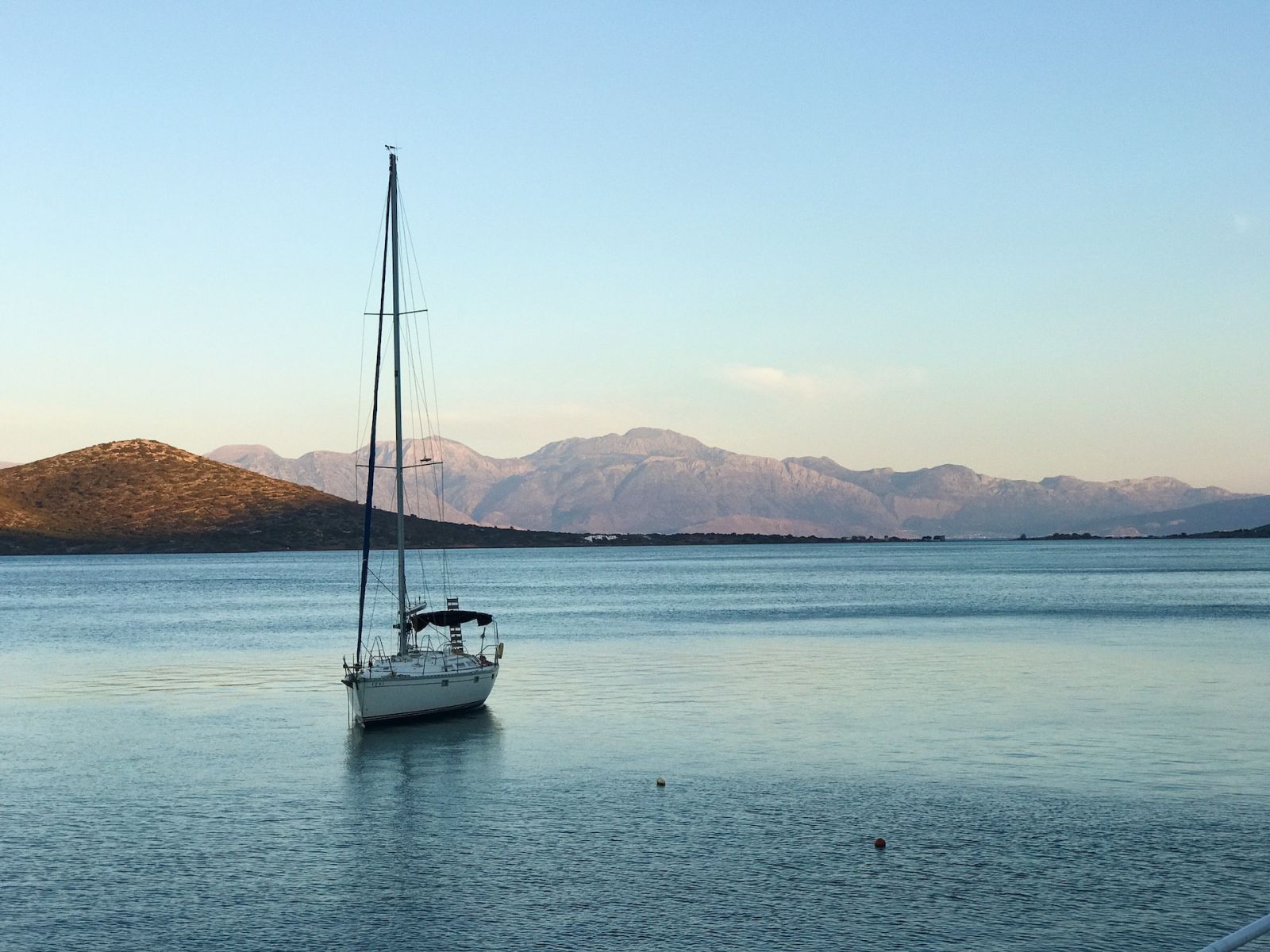
You'll be faced with a range of solo bluewater sailboat options, from budget-friendly to luxury models. Let's explore some factors you should keep in mind to make the best decision for your needs and budget.
Initial purchase price : This is often the first thing people think of when it comes to the cost of a sailboat. There's a wide range in prices, depending on factors like age, size, and brand. For example, a used Alberg 30 might cost between $10,000 and $15,000, while a new Amel 54 could be in the range of hundreds of thousands of dollars. It's important to find a balance between quality and affordability that suits your needs and financial capabilities.
Maintenance and repairs : Owning a sailboat comes with ongoing expenses to keep it in good sailing condition. Regular maintenance tasks like painting, replacing worn rigging, and inspecting safety equipment can add up over time. Be prepared to allocate a portion of your budget for these essential tasks, as neglecting them could lead to more expensive repairs down the line.
Marina fees and insurance : Depending on where you plan to keep your boat, you may incur costs for marina or dockage fees. Additionally, securing insurance coverage for your sailboat is a must to protect your investment. Both of these costs can vary widely, so make sure you factor them into your overall budget.
Upgrades and equipment : To ensure your sailboat is well-suited for solo bluewater sailing, you might need to invest in upgrades to improve its safety and performance. For instance, you may want to add a roller furling system, wind vane, or more advanced navigation equipment. These enhancements can amount to a significant investment, so it's wise to plan financially for any desired upgrades.
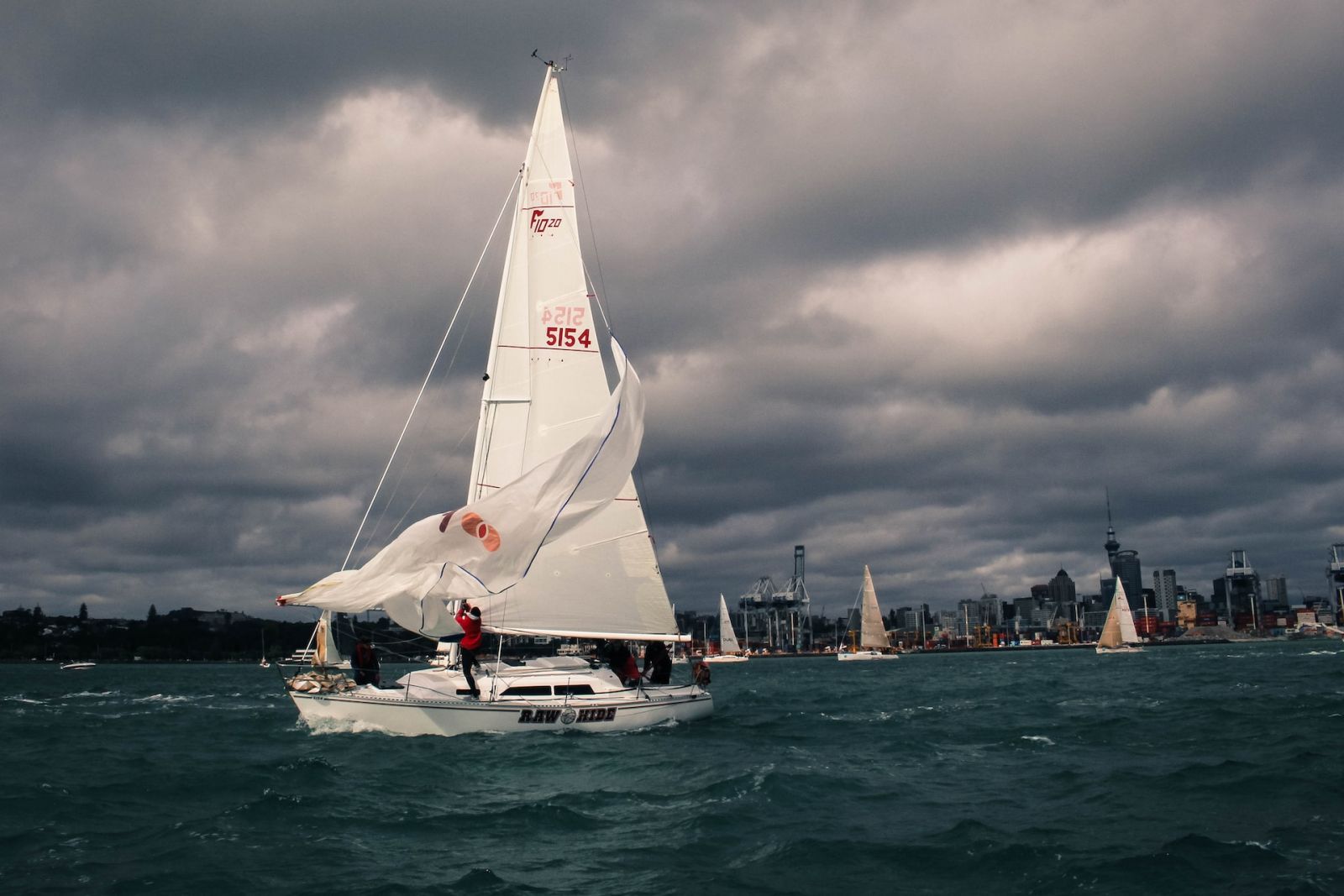
Here are some essential tips to keep your boat in top shape, and ensure its long life and performance during solo journeys:
Regular inspections : Make it a habit to perform a thorough inspection of your sailboat periodically. Examine the rigging, sails, hull, and all mechanical components. Routine inspections allow you to detect any signs of wear, damage or potential problems before they escalate.
Cleaning : Keep your sailboat clean by washing it regularly with freshwater and appropriate cleaning solutions. This simple practice prevents the buildup of dirt, salt, and other debris, which can cause corrosion and damage to your vessel over time.
Checking the bilge : Ensure that your bilge pump is working efficiently and that there's no water accumulating in the bilge area. If there are any signs of water accumulation, investigate the source and address any leaks or issues promptly.
Servicing the winches : Winches play a crucial role in your sailboat’s performance, so it’s essential to inspect, clean, and grease them regularly. This practice will guarantee their smooth operation and prolong their lifespan.
Sail care : Inspect your sails frequently for any tears, wear, or damage. Repair or replace them as necessary. To protect your sails from the sun’s harmful UV rays, always use a sail cover when not in use.
Keeping records : Maintain a logbook to document all maintenance tasks, inspections, and repairs. Not only will this help you keep track of what has been done, but it will also provide valuable information if you decide to sell your sailboat in the future.
Leave a comment
You may also like, what is bluewater sailing.
It's easy to confuse offshore sailing with bluewater sailing - and it's no wonder. Many people do, including myself. So I've decided to list the difference once and …
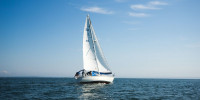
13 World-Famous Bluewater Sailboats Under 40 Feet

What's the Best Keel Design for Bluewater Sailing?

Different Types of Sailing and Racing Explained

41 Sailboat Cruising Essentials for Long Trips
Own your first boat within a year on any budget.
A sailboat doesn't have to be expensive if you know what you're doing. If you want to learn how to make your sailing dream reality within a year, leave your email and I'll send you free updates . I don't like spam - I will only send helpful content.
Ready to Own Your First Boat?
Just tell us the best email address to send your tips to:
Compare The Most Popular 40ft Production Catamarans
Stephen and I are always exploring new catamaran models so we can share our insights with you. The information below continues to be valid, but we have a new 40ft catamaran comparison of later models for you to peruse.
We created a chart of each catamaran with a standard spec, ex-factory to compare the specifications and price of each boat. These catamarans compare very similarly on base price but there are a few differences.
The Bali 4.0 has a unique single cockpit / saloon area, entirely flush and unencumbered by bulkheads, accessible by a folding glass door on electric rams (kind of like a tilting garage door). This opens up the area and make it look like a much bigger boat. This catamaran combines some of the most innovative new characteristics in catamaran design which makes it a very desirable. It is quite a peppy sailboat and easy to maneuver.
Fountaine Pajot 40
The Fountaine Pajot 40 is replacing the Lipari 41 and is basically a smaller version of the successful Fountaine Pajot Helia 44 . It has a lot more volume than the Lipari, has a super stylish interior with island berths for the owner cabins (a much requested feature). It is lightweight but is smaller in volume than most of the the other models. However, because the living space was moved forward in the bows, there is still lots of room. We have not seen a boat yet, so the jury is out on how the boat will perform with these new changes. This model will be unveiled at the Paris boat show in December [2015].
The Leopard 40 ( video ) is heavier than the other models. The bridgedeck clearance is lower than those seen on French or Canadian cruising catamarans. Their philosophy is that a lower bridgedeck reduces the boat’s center of gravity with a wider stern to provide more buoyancy aft. However, a higher bridgedeck clearance translates into less slamming. We have owned cats with lower and higher clearances and a higher bridgedeck clearance definitely has less slamming. Read this article about bridgedeck clearance to make your own informed decision.
Lagoon 400S2
The Lagoon 400S2 has been on the market for a couple of years and is extremely popular. The S2 has decent performance with a lot of interior volume as can be seen here in the specifications. It has the biggest volume of the five 40ft catamaran models. This volume is said (by the competition) to translate into less performance but judging from rallies held around the world, it seems that the Lagoon really holds it’s own. Judging by the feedback from delivery skippers and owners on performance, the 400S2 makes a good performing cruising yacht. The interior is luxurious, accommodations are spacious and the cockpit is a nice size, easy to sail and good for a live aboard couple.
All of these catamarans are very acceptable cruising catamarans for a couple with lots of interior and exterior living space. These cats will do well as live-aboard and well as charter boats. Much of your choice will depend on personal preference. Do you prefer a “luxurious” interior, lots of interior volume and reasonable sailing performance, a more innovative design and optimal performance. Is chartering or cruising your ultimate goal or do you prefer a bit of both? All of these things should be weighed before you make a final choice.
40-Ft Catamaran Comparison Table
*Please note that these prices are subject to change by manufacturers at any time. Specifications provided by the manufacturers.
*Options are available in engines, sails, cabin/head configurations and other options like generators, watermakers, etc.
RelATED Articles
- Four Most Popular Production Catamarans: How Do They Compare?
- How Do The Most Popular 50ft Production Sailing Catamarans Compare
- How Do The Most Popular 45ft Production Sailing Catamarans Compare
Charter Programs & Tax Programs
The catamarans discussed here are available for both private ownership and charter management. Because catamarans have become so popular in the last ten years, the demand far outweighs the supply. That makes new catamarans more expensive. We are therefor constantly trying to find ways to reduce the cost of ownership for our clients. Learn about our Yacht Charter Management and Yacht As A Business Program .
Catamaran Brokerage
We can also help you find a pre-owned / brokerage catamaran that will suit your needs. Go to our Catamaran Quick Search for a global search of all brands of pre-owned catamarans.
Contact us to help you figure out what will best work for you
Estelle Cockcroft
Join our community.
Get the latest on catamaran news, sailing events, buying and selling tips, community happenings, webinars & seminars, and much more!
3 thoughts on “Compare The Most Popular 40ft Production Catamarans”
Helpful info. Lucky me I found your website unintentionally, and I am surprised why this twist of fate didn’t happened earlier! I bookmarked it.
That is great!
Leave a Comment Cancel Reply
Your email address will not be published. Required fields are marked *
Save my name, email, and website in this browser for the next time I comment.
Recent Posts
First-annual virgin islands boating exhibition (vibe).
VIBE – It’s a Destination Boat Show! Join us May 10 – 12 at
BALI Catamarans Unveils The New Bali 5.8 Flagship
CATANA GROUP launches its 14th BALI CATAMARAN model, the BALI 5.8, for the brand’s
Love Stories At Sea…because it’s valentine’s day
Because it’s Valentine’s day, we wanted to celebrate all the couples that we helped
Your Go-To Resource for all your Catamaran Needs!
Check out our brochure to learn about all we have to offer and why
For more than 30 years, we have been a part of the catamaran community and created Catamaran Guru™ to encourage and educate all the aspiring sailing out there. We understand the dream of traveling the world by catamaran and created a one-stop-shop to make that dream a reality for you.
- Stephen & Estelle
- Testimonials
Get Started
- Yacht Sales
- Used Yachts
- Charter Management
- Boat as Business Programs
- Seminars & Events
Practical Boat Owner
- Digital edition

Coastal cruising: best sail & power boats under 40ft
- Duncan Kent
- November 3, 2023
Duncan Kent chooses a selection of the best sail and motor boats under 40ft most suitable for adventurous cruising along the coast

The Hurley 27/70 has good close quarter handling and tacking agility. Credit: David Harding Credit: David Harding
One of the delights of coastal cruising is discovering and exploring new anchorages, harbours, beaches, towns and villages.
A long passage at sea is fine if you’re voyaging from country to country, but you can’t beat sailing within eyeball distance of the coast, where the gulls and cormorants swoop and dive while seals lollop about on headland rocks or hidden beaches.
Coastal cruising under sail can be exhilarating, demanding, and even a tad frightening occasionally, but ultimately it’s thoroughly fulfilling.

With careful planning, coastal cruising can be fun for the whole family
While it sounds easy to the uninitiated, sailing along coastal waters is often more challenging than a simple A-to-B offshore passage where your main concern is wind and tide , not scary-looking rocks, sand bars, daunting harbour entrances and rocky anchorages.
However, with careful planning and a sound boat, the fun factor will undoubtedly overcome the fear factor and make the whole coastal cruising experience thoroughly worthwhile.
Coastal cruising: fun close to shore
Day coastal cruising in a small boat can be fantastic fun provided you have a good plan and fallback for the nights.
Some anchorages can be idyllic in the daytime but distinctly uncomfortable at 0400 when the wind turns about and your insubstantial ground tackle starts to drag.
Hobby horsing at anchor in a 20ft boat in the pitch dark is not quite as enticing as gently rocking in a 40-footer either, but that doesn’t mean you have to own a big boat to feel secure.
I firmly believe as much, if not more, fun can be had sailing close inshore and finding a safe spot for the night in the smallest of boats, provided they’re seaworthy and adequately equipped.
Of course, if you have a family on board you’ll want a few more berths, a private cabin or two and enough luxuries to keep everyone happy, so a bigger boat is most likely the answer.
But don’t be tempted to go larger than you feel safe handling, both in a strong breeze and choppy sea or entering a busy marina with little room to enter a berth.
Another piece of advice I’d like to proffer is, regardless of boat size, don’t overdo the tech at the expense of simple sailing.
Chartplotters , MFDs, AIS , radar , wifi, night-vision cameras and so on might be great fun in harbour, and very handy when needed at sea, but it’s good to learn the basics of navigation, VHF radio use and safety prep, and just use the kit that genuinely helps you have a safe, satisfying sail, as opposed to spending your whole time staring at a screen rather than enjoying the stunning scenery!
20-25ft LOA: Sailing yachts
Over 200 Macwester Rowans were built to Lloyd’s specification with encapsulated wooden hull stringers for maximum strength.
Her cockpit seats four and is well protected by high coamings, while the seats are close enough together to brace against.
Displacement of 2¼ tons plus ample beam means she’s stiff under sail.
Everything is within reach of the helm, the tiller being long enough to hold while adjusting the bridge deck mainsheet, and two large scuppers ensure any spray quickly drains.
Below, she had either a traditional layout or a dinette.

The high coamings on the Macwester Rowan makes the cockpit secure – ideal for coastal cruising. Credit: David Harding
The latter also offers a view outside while seated and also forms a double berth by lowering the table between the seats.
There’s a cruise-friendly galley with a two-ring boat cooker , a basin with hand-pumped fresh water and a top-loading cool box.
Most were originally powered by 5hp Stuart Turner 2-stroke petrol inboards , which hopefully will have been replaced with a modern diesel by now.
Under sail, her steering is light, with just a touch of weather helm in strong gusts.
Her long, cast-iron keel is quite shallow, making her a little tender initially, but her ample beam soon stiffens her up once heeled.
Launched in 1972, Ian Anderson’s Hurley 24/70 had all the seakeeping abilities of the renowned Hurley 22, but with a better level of interior comfort.
With higher topsides, deeper bilge and wider beam, she offers 1.8m/5ft 11in headroom, plus a more practical family-friendly layout, including four berths, enclosed heads and a decent galley.
Unlike the 22’s long keel, the 24/70 has an encapsulated, bulbed fin and skeg , which considerably improves close-quarter handling and tacking agility.
She is also reasonably stiff under full sail, due mainly to the near 50% ballast ratio.
Even the bilge keel version had lead ballast and the same draught as the fin.
Her long cockpit and high coamings are a great improvement over the smaller models, keeping her crew safe and dry at sea.
A conservative, high-aspect mainsail leaves the bulk of the sail power to the big genoa.
The engine was originally a 5hp Petter, but most will have been changed by now.
After the demise of Hurley in 1974, the moulds were acquired by Atlanta Marine, which continued to produce this model as the Atlanta 25 for another few years.
20-25ft LOA: Motorboats
Few 25ft motor cruisers provide decent enough facilities for long periods on board.
The Bayliner 245 Cruiser has this and more. It even has sufficient space for two more couples to join you for the day.
High topsides create a spacious interior with good headroom, making her feel like a much larger boat inside, although at the expense of slightly chunky exterior styling.
Long hull portlights provide good views outside and a large forehatch provides fresh air.
A large V-berth/dinette will seat four to six around the oval table and opposite is a compact, but well-appointed galley.
Under the cockpit is a roomy but slightly claustrophobic quarter berth and there’s an enclosed heads with a shower off the saloon.

The Bayliner 245 Cruiser is comfortable for six
On deck is a roomy aft cockpit relaxing area with a hinged bench seat, a reversible navigation bench and a removable table.
Access to the large bathing platform is through a stern gate.
Towable with a big SUV and four-wheel braked trailer, its obvious drawback is the hefty 260hp, 5.0lt V8 Mercruiser petrol engine that many came with.
Though powerful enough to cruise at 25 knots, it’s thirsty.
The rarer 200hp, 2.8-litre diesel was a more frugal option.
26-30ft LOA: Sailing yachts
With a pedigree dating back to the legendary Folkboat, the ‘unsinkable’ Sadler 26 is a popular pocket cruiser with well-proven offshore credentials.
Her hull features a polyurethane foam sandwich between double skins, adding both rigidity and buoyancy.
It also makes her unsinkable and provides excellent insulation.
Although most had bilge keels, some shoal and deep fin versions were also built. All had transom-hung rudders and a full skeg.
Accommodation space is limited but the berths are usable at sea and the convertible saloon dinette is useful.
An inner GRP moulding provides rounded- edged furniture and there are no head linings to droop .
Headroom is limited to 1.78m/5ft 9in max but her galley boasts a full-size cooker, deep sink, cool box and reasonable stowage.

The Sadler 26 has a light helm and sensible deck layout making it easy to sail short-handed when coastal cruising. Credit: Richard Langdon/Ocean Images
Her cockpit is reassuringly deep with high coamings, while wide side decks, high toe rails and long handrails make going forward secure.
With her tall, masthead rig and 42% ballast ratio, the Sadler 26 is well-balanced, sea-kindly, forgiving and relatively quick.
The first of many Dixon-designed Moodys, the Moody 27 launched in 1981 and was an instant hit with young families wanting a stable, comfortable and relatively inexpensive cruising yacht.
Hand-built under Lloyd’s certification, she was fitted out to a high specification, which is why many remain in good condition.
High topsides offered ample interior volume and 1.75m/5ft 9in headroom, while adding buoyancy when heeled.
She came with either a fin keel or deep bilge keels, and a high-aspect, unbalanced transom-hung rudder that can make her a tad heavy on the helm if over-canvassed.
Her accommodation is practical and spacious for a 27ft boat, with a double V-berth, narrow quarter berth and two long, straight saloon settees.
The heads is aft and has a wet locker and optional shower, while the compact, L-shaped galley is well-equipped with reasonable stowage.
She was considered quite sprightly and agile at the time and a healthy 44% ballast ratio keeps her stiff while countering her 38m²/412ft² of sail.
The cockpit takes four sailing (six relaxing), with the proximity of the seats allowing easy bracing when heeled.
High coamings, bridge deck and large drains make it secure in a seaway.
Her side decks are wide and coachroof handrails are long.
Masthead-rigged with a smallish mainsail and big (140%) furling genoa, she is well-balanced and easy to sail single-handed , although tacking the big genoa can be a handful.

The Westerly Merlin is nicely balanced and tacks well, but does have a slight weather helm. Credit: David Harding
Launched in 1984, the Westerly Merlin was a comfortable, easy-to-handle, reasonably quick small cruiser.
Available with fin or bilge keels and originally 27ft, she was extended in 1990 to incorporate a sugar scoop and spade rudder.
Their solid GRP hulls were stiffened with foam stringers, but the decks were balsa- cored.
Bulkheads and furniture were bonded to an interior floor moulding.
Interior volume was maximised by setting the bulkhead well forward.
Headroom is 1.78m/5ft 10in and the saloon is comfortable, though lacking ventilation.
The L-shaped galley has a cooker/oven, cool box and a sink with cold water, while the aft-facing chart table utilises the settee end for a seat.
Both saloon settees make good sea berths, the port side converting into a narrow double if required.
The quarter cabin is what made the Merlin popular, with its large double berth, seat, hanging space and deep shelf.
The forecabin is a little more cramped, however.
The deep, spacious cockpit has tall coamings and a high bridge deck, while the mainsheet runs along the transom top.
Her side decks are reasonably wide, and the foredeck uncluttered.
She sports an easy-to-handle 7/8ths fractional rig, with cockpit-led reefing lines for the leach only.
At sea, she stands up to her sail well, is responsive when tacking and is nicely balanced, albeit with a little weather helm, when pushed hard.
26-30ft LOA: Motorboats
First launched in 1974 and now considered a ‘classic’, Fairline’s Mirage 29 was available in two versions, with aft or centre cockpits.
There’s a separate cabin forward with a sizable V-berth, plus a large dinette in the saloon from which a further two berths can be formed.
The galley and heads are in the aft corners of the saloon and are also a good size, while large windows all around keep her bright and airy below.
Most were made with an open wheelhouse sheltering the helm and navigator’s seats, although some just had the windscreen and spray canopy.

Fairline Mirage 29 was available in two versions – with an aft or centre cockpit
Either way, a full cockpit tent made it much cosier when anchored or moored and meant the large cockpit could be put to full use regardless of the weather.
Single or twin petrol or diesel engines were offered, although twin 130hp Volvo diesels were the most popular for coastal cruising.
The CC version also featured sterndrives.
Flattish hull sections allow her to plane easily at low speeds, which is handy given that her engines are fairly small.
She does slam in choppy waters, though.
31-35ft LOA: Sailing yachts
The Colvic Countess 33 was an Ian Anderson (of Hurley fame) design.
The hulls were moulded in GRP by Colvic Craft and then sold on to boatbuilders or owners for DIY completion, resulting in a wide variety of layouts and differing quality finishes.
A full-bodied, heavy displacement, centre-cockpit sailing cruiser, she was available with long fin or twin keels, both with encapsulated lead ballast.
A half-skeg supports her large rudder and allows some counterbalance to lighten the helm.

The Colvic Countess 33 is a heavy-displacement cruiser, comfortable in rough seas. Credit: Colin Work
She could be sloop or ketch rigged and some were built with a deck saloon featuring inside steering and seating.
High freeboard gives her 6ft/1.83m of headroom below but is cleverly disguised by a small ‘step’ in the hull, just beneath the toe rail.
The deck sweeps up nicely towards her traditional, overhanging bow, making her surprisingly attractive.
The Colvic Countess 33 is a slightly staid performer under sail, but the generous 40% ballast ratio keeps her stiff in a blow.
Well renowned for their seaworthiness and comfortable motion in adverse sea conditions, many have crossed oceans safely.
Production ceased in the early 1990s, after around 180 had been built, although many home-finished boats were launched much later.
The ‘Sun’ prefix was introduced by Jeanneau in the 1980s but was used arbitrarily before the launch of its Sun Odyssey (cruiser) and Sun Fast (performance) ranges a decade later.
Continues below…

Best boats for sailing around the UK: sail & power
Duncan Kent chooses the best sail and motor boats under 40ft for circumnavigating the islands of Britain and Ireland

Pocket cruisers: the best boats between 17-20ft
Whether you’re moving on from dinghies, or downsizing to a boat that’s fun without being a financial millstone, here’s a…

Best first boat guide: sail and power under 40ft
Duncan Kent chooses the best and most suitable sail and motor boats under 40ft for those buying a yacht for…

Best boats under £50,000: Our top 10 picks from the secondhand market
Choosing the right second-hand yacht to suit your needs as the years fly by can become ever more challenging. Unlike…
The Jacques Fauroux-designed Sunrise 34 was built between 1984-88 and sports a relatively fine entry but with broad shoulders.
She also holds maximum beam aft to her wide transom, thereby improving her form stability and downwind performance.
Built using polyester and reinforced with Kevlar in the bow and keel areas, the Sunrise was tough and experienced no adverse structural problems despite many being raced hard.
Her hull is stiff, thanks to the numerous foam stringers and frames, and all high-load areas on deck were ply-backed for extra reinforcement.
Her twin spreader masthead rig carries a generous sail plan and an adjustable backstay for tweaking the mast .
Although the standard keel was a cast iron deep fin, some were made with a lifting keel, which reduced the draught to under 4ft.
Her rudder is semi-balanced and half-skeg hung, making her light but positive on the helm and she quickly gained a reputation for speed and agility under sail.
Two layouts were available with two or three cabins, the former loosely labelled as the owner’s version.
In the three-cabin model, the heads impinged upon the saloon, which in turn was moved further forward, reducing the size of the forecabin.
Launched in 2005, the Beneteau Oceanis Clipper 343’s fine bow tails back to sleek, shallow underwater sections and she retains maximum beam almost to her transom.
Keel choices were between shoal, deep (standard), or lifting.
The solid hull incorporates a bonded structural inner moulding for increased strength, while the deck and superstructure are a balsa sandwich.
Her fractional rig incorporates a tapered aluminium mast with the potential for limited tweaking, while swept spreaders allow a tighter headsail sheeting angle, for better pointing.
Ease of handling was part of the design brief, so the single-line reefing, lazy jacks, zip-up sail bag and high boom are aimed squarely at the family cruising market.
Clipper yachts all featured relatively high freeboard, which provided generous headroom below, but blending the superstructure into a rising sheer does dissipate any top heaviness.
Accommodation options were between a two- or three-cabin model, the former providing a large double cabin and deep cockpit locker, the latter two smaller double cabins.
Thanks to light woods, a white deckhead and numerous portlights, the interior is extremely bright and airy and the 1.98m/6ft 6in headroom is generous.
She came with a 9/10ths twin spreader rig and Elvstrøm polyester sails as standard, including a semi-battened main and 130% crosscut furling genoa.
Her slippery underwater lines give her good speed and she accelerates quickly after tacking, but she prefers to be sailed as upright as possible.
31-35ft LOA: Motorboats
The Sealine F33 flybridge cruiser quickly became hugely popular among families looking for space, comfort and value for money.
It offered two good-sized double berths, a very bright, airy and sumptuous saloon with lots of woody trim and well-padded upholstery, and a practical and well-equipped galley.

The Sealine F33 flybridge cruiser has space aplenty, making it a popular family choice for coastal cruising
Outside is a roomy cockpit which, when covered with a full canvas enclosure, increases the available sheltered living area considerably.
Then above is the large flybridge, which not only has full helm controls and a double seat, but also sports sun pads for relaxing at anchor.
Most were supplied with twin 170hp Volvo KAD32 diesel engines, although a few had the bigger 200hp AQAD 41s and some the cheaper Mercruisers.
Personally, I’d look to stick with the KAD32s for fuel economy, and a bow thruster is a bonus too when manoeuvring in marinas with sterndrives.
36-40ft LOA: Sailing yachts
One of America’s most prolific boatbuilders, Catalina’s yachts are popular the world over for their solid construction, generous interior volume, safe handling and quality fittings.
The Catalina 36 was first launched in 1982 and then updated slightly with the addition of a sugar-scoop and walk-through transom in 1990.
In 1995, the Mark II model was launched and although her hull remained the same she was given a different deck moulding.
The cockpit was also widened, and the aft cabin improved with greater headroom and volume, allowing a large athwartships berth to be installed.

Sturdy and reliable, the Catalina 36 had an unusually long production run of 24 years. About 2,300 were built. Credit: Colin Work
The Catalina 36 is a traditional cruising yacht design with a predictable, sea-kindly performance.
She’s easily handled with a small crew or single-handed and light steering means less work for the autopilot .
Offered with either a deep fin or shoal-draught wing keel, her substantial displacement, overhanging bows and full hull sections result in an easy motion at sea, while her deep, long keel imparts good directional stability and enables her to heave to easily if required.
She isn’t a light boat and has a modest sail area on a masthead sloop rig.
This, together with nearly three tonnes of lead ballast, keeps her stiff and upright in strong winds .
Some models with the optional taller mast had another 46ft² of sail area, which undoubtedly improved her speed in lighter airs, but her deep-bellied hull means she’s no racing machine.
All models have a bright and spacious saloon ideal for large families to live aboard and cruise in comfort.
The forecabin makes a good master suite and the saloon offers three more berths if needed.
The aft cabin of the MkI is somewhat lacking, but the MkII is much improved.
The galley is excellent, enabling properly cooked meals to be produced both at sea and at anchor, and the heads is bigger than many 50-footers.
The cockpit, too, is a good size and the walk-through transom makes her feel quite modern.
The last 36 was launched in 2006 after nearly 2,300 had been built.

The Hanse 385 had twin wheels and a drop-down transom; comfortable for coastal cruising. Credit: Nico Krauss/Hanse
Superseding the 375, the Hanse 385 differs in featuring twin helms and a drop-down transom platform.
Sailing performance was also improved and her sleek, clutter-free deck had flush hatches and hidden sheets.
Hanses were offered at a basic build level, with much of what might be considered necessary for cruising sold in comprehensive ‘Option Packs’ at additional cost.
For this reason, though, they usually come onto the market well-equipped.
As with all Hanses, her hull is heavily reinforced with a bonded-in composite subframe.
Weight was minimised by using a balsa-core sandwich above the waterline and epoxy-based vinylester resins ensured they remained watertight.
Her broad stern carries maximum beam from amidships aft, resulting in a wide, spacious cockpit.
The simple, drop-down platform opens to assist boarding from the sea and reveals the liferaft locker.
Below, white headlining and bulkheads make her bright and airy, while the ample beam provides generous stowage and living space.
The standard layout has two cabins, though options include a second aft cabin at the expense of galley space.
The forecabin and heads remained the same. Double hatches improve air circulation, while full-length, LED-lit grab rails run each side of the saloon.
Seating for six is comfortable but the navigation area is ‘tokenistic’. A small chart table faces aft and uses the settee end as a seat.
The L-shaped galley is a good size and well-equipped, though, especially in the two-cabin model.
The heads has 1.88m/6ft 2in headroom, a holding tank and an opening portlight, but the sink is too shallow to use at sea.
The aft cabins have good headroom, sufficient floor area and roomy berths, although the forecabin is more spacious with two wardrobes and deep bins under the berth.
Due to the self-tacking jib , her fractionally-rigged sail plan is primarily mainsail-driven, but she’s well-balanced under sail all the same.
All sail controls lead aft to a single winch and rope bin beside each helm.
While tidy, having halyards , sheets, reefing lines and kicker all leading to just two winches can be problematic, particularly when reefing.
Her mast is tall, so you need to reef reasonably early, but she handles beautifully and her steering gives good feedback while remaining light.
36-40ft LOA: Motorboats
Despite its age now (first launched in 1985) the timeless, stylish-looking Princess 35 flybridge cruiser is excellent value for money if you can find a well-maintained example.
At 36ft LOD (length on deck) they pack in bags of accommodation, including berths for 6/7 in a double forecabin, convertible dinette and saloon settees.
Steps lead down to the large galley, second seating area or crew cabin (depending on layout), heads/shower and the master cabin in the forepeak with its large offset double berth.
The saloon is spacious and woody, with large windows to keep her bright and airy.

The Princess 35 flybridge is known for its solid build quality and good seakeeping
The raised double helm seat is comfortable and secure while offering good access to all the necessary controls.
Engine access is achieved by lifting a panel in the saloon sole and removing the floor bearers but there’s not a lot of room between them to work.
Some had twin 165hp or 200hp Volvo diesel inboards, others 212hp Ford Mermaids.
Either way, they give the medium V-chined hull a solid, stable performance at sea, even in choppy conditions.
She has a deep cockpit with easy access to the side decks and a full-width bathing platform.
The steps up to the flybridge are worryingly vertical but once there you can choose between two long benches, which enable four people, in addition to the helmsman, to sit and take in the view.
Enjoyed reading Coastal cruising: best sail & power boats under 40ft?
A subscription to Practical Boat Owner magazine costs around 40% less than the cover price .
Print and digital editions are available through Magazines Direct – where you can also find the latest deals .
PBO is packed with information to help you get the most from boat ownership – whether sail or power.
- Take your DIY skills to the next level with trusted advice on boat maintenance and repairs
- Impartial in-depth gear reviews
- Practical cruising tips for making the most of your time afloat
Follow us on Facebook , Instagram and Twitter
- BOAT OF THE YEAR
- Newsletters
- Sailboat Reviews
- Boating Safety
- Sailing Totem
- Charter Resources
- Destinations
- Galley Recipes
- Living Aboard
- Sails and Rigging
- Maintenance
- Best Marine Electronics & Technology

10 Best Used Cruising Sailboats
- By John Kretschmer
- Updated: June 4, 2021
The appeal of offshore voyaging is difficult to explain to land people who can’t imagine life without basic human rights like copious quantities of hot water and unlimited data. It can even be challenging to explain to fellow sailors who think the notion of spending days or weeks at sea is a form of waterboarding, some kind of self-inflicted torture.
But for those of us who understand, who relish intimacy with the untamed wilderness that is the ocean and embrace self-reliance and individual expression while accepting the dispassionate whims of Neptune, this is the good life.
There are two essential truths about this life: One, money does not matter. Cruising budgets and lifestyles reflect bank accounts with variously positioned commas; it’s the passages and landfalls that add up, not your investment portfolio. And two, a good bluewater sailboat — not necessarily an expensive boat, but a well-designed, solidly built, imminently seaworthy boat that is only limited by your moxie and imagination — is the key to successful bluewater passagemaking.
So, to that second point, I’ve compiled a list of interesting and affordable cruising sailboats for serious voyaging. A list of 10 sailboats for any purpose, much less world cruising, is sure to evoke outrage from strong-minded sailors, who by nature tend to be a bit opinionated. Stand by before hurling insults my way, and let me explain. I have decided to stay away from the sailboats we know by heart, the iconic old boats that usually populate a list like this: the Westsail 32, Tayana 37, Shannon 38 and Valiant 40 (the last of which, with a bit of searching, can still be found at or just below $100,000).
My list of some of the best liveaboard sailboats is eclectic and includes a mix of well-known and obscure manufacturers, but all the boats are linked in three ways: All are top-quality vessels capable of crossing oceans. They’re affordable, although in a few cases you have to look for older models in less-than-stellar condition to stay below $100,000. Indeed, in some ways, this list of used sailboats is a function of age; most of the boats were priced at more than $100,000 when new but have dipped below our self-imposed threshold in middle age. And finally, they’re all boats that I have encountered in the past few years in far-flung cruising destinations .
Island Packet 35
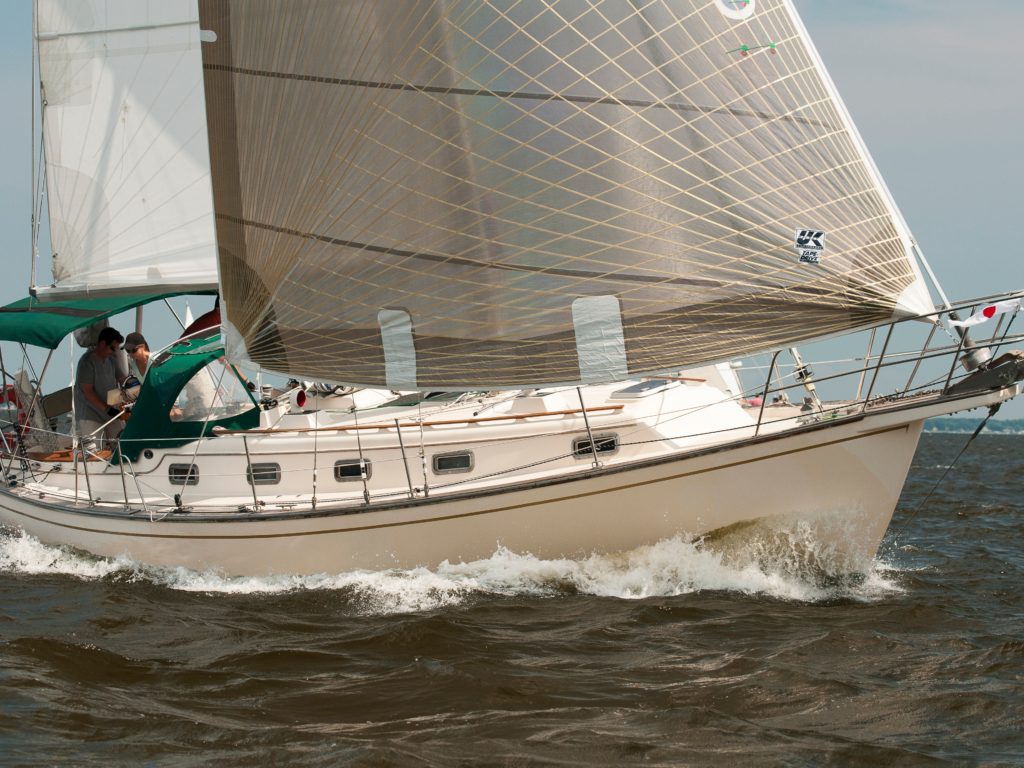
Love them or loathe them, Island Packets are everywhere. To some, the beamy, full-keel, high-freeboard hull designs seem quaint, to put it charitably. To others, the robust construction standards, roomy interiors and overall user-friendliness make them the ideal cruising boat. More than most, sailing vessels are compromises, and Bob Johnson and his crew at Island Packet were brilliant in prioritizing the needs of sailors. The IP 35 was introduced in 1988 and features a huge cockpit, an easy-to-handle cutter rig with a jib boom, and a clever, comfortable interior with the volume of many 40-footers. It might not be the fastest boat upwind, but the long waterline translates to good performance off the breeze, meaning the IP 35 finds its stride in the trade winds. In all, 188 boats were built before production stopped in 1994.
Don’t confuse the IP 35 with the IP 350, which was launched in 1997 and included a stern swim step. You won’t find a 350 for less than $100,000, but you will have a choice among 35s, especially those built before 1990. With two nice staterooms, the 35 is ideal for family cruising. I know of a couple of 35s that have completed the classic Atlantic Circle passage. It’s perfect for a sabbatical cruise because it holds its value and there’s a ready market when it comes time to sell.
Prout Snowgoose 37
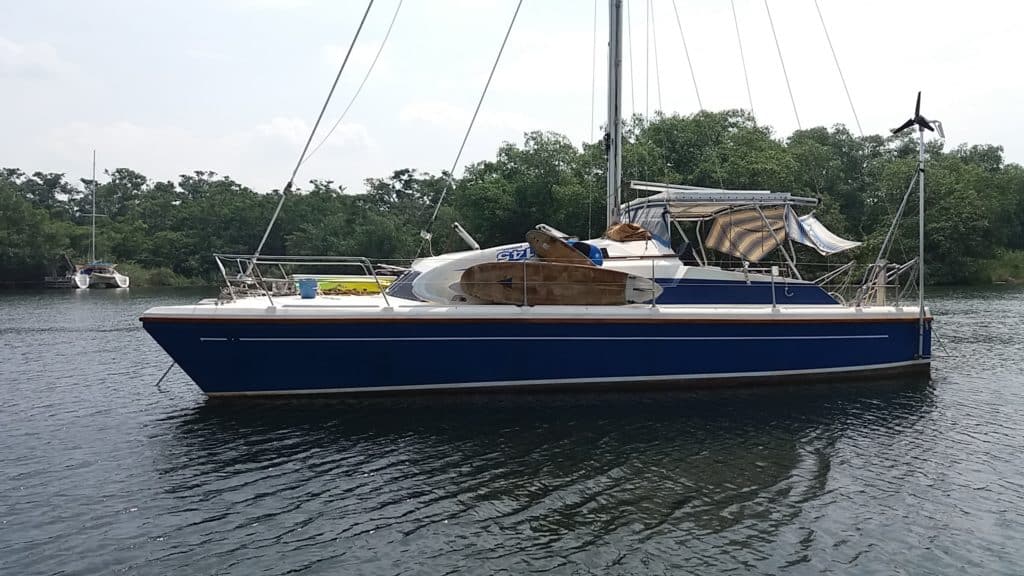
There’s no room for discussion: Catamarans are crossing oceans, and many sailors are choosing cats for world cruising. My last visits to the Azores and Canary Islands, the classic Atlantic waypoints, proved the point. I’m not much of a statistician, but by my count, at least a quarter and maybe a third of the boats I saw were catamarans. There would be more on this list, but they are just too expensive. Finding a quality catamaran for less than $100,000 is tough. One boat to consider is the classic workhorse multihull, the Prout Snowgoose 37.
When the Snowgoose 37 was launched in 1983, English builder Prout & Sons had already been in business for nearly 50 years. The 37 was an updated version of the Snowgoose 35, one of the most successful cruising cats ever. In 1986, the 37 was updated again; the Snowgoose Elite model included more beam and interior upgrades. These models are challenging to find for under $100,000, but it’s possible. A quick glance at yachtworld.com shows several of both models available for less than $100,000. Again, the strong dollar makes European boats an excellent value.
The Snowgoose 37 is not sexy like go-fast cats, and not roomy like modern cruising cats. It is, however, seaworthy. Of the 500 built, many have circumnavigated. Older boats have solid fiberglass hulls, and more recent models are solid glass from the waterline down and cored above. The cockpit is rather compact by catamaran standards, and the bridgedeck is solid (no tramp). Many 37s and all Elites were rigged with staysails, a big plus in heavy weather. The masthead-rigged Snowgoose 37 can be sailed like a monohull offshore, and it’s quite nice not having a huge, roachy mainsail to wrestle with in a storm. With a 15-foot-3-inch beam for the 37 and a 16-foot-3-inch beam for the Elite, it’s easy to find affordable dockage and yards for haulouts. Most boats have three double cabins, making the Snowgoose 37 an ideal family cruiser.
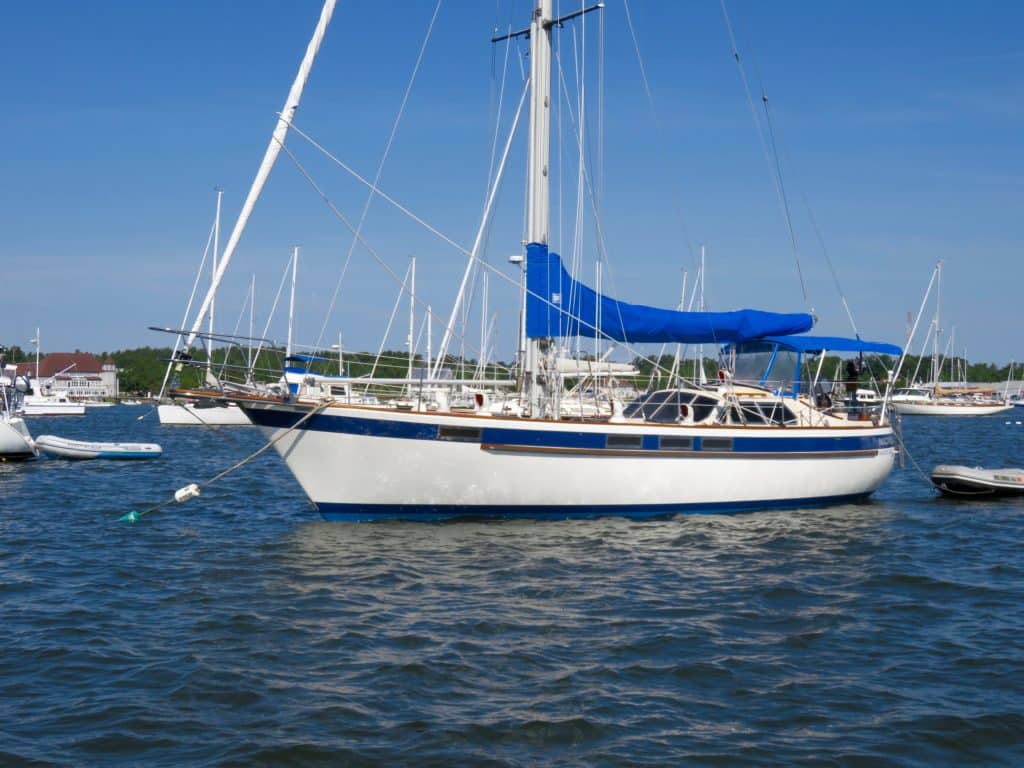
The Corbin 39 is not as well known as it should be. It’s a capable bluewater sailboat cruiser with many impressive voyages logged. My Quetzal spent several weeks moored alongside a handsome 39 in Corfu that had sailed around the world, and I also spent a winter in Malta in the same boatyard as another 39 that had recently crossed the Atlantic. A canoe-stern, flush-deck pilothouse cutter, the 39 was offered with either an aft or center cockpit. Designed by Michael Dufour and constructed by Corbin les Bateaux in Canada, hull number one was launched in 1977. Built in various locations in Quebec, 129 boats were launched before a fire destroyed the deck tooling in 1982. A new deck with a larger cockpit was designed, and 70 more boats were laid up before production ceased in 1990.
The rub on the Corbin 39 is that the majority of boats were sold as kits with owner-finished interiors. Kits varied from just hull-and-deck to “sailaway,” with everything fitted except the interior. Only 15 boats were finished at the factory. Not surprisingly, the interior quality is unpredictable, from rough-hewn lumberyard specials to beautifully handcrafted gems finished by marine professionals. The difference is reflected in the price. A nicely finished, well-equipped model from the mid-’80s typically sells for between $60,000 and $80,000.
The hull shape features a long fin keel and skeg-mounted rudder. The hulls are heavily laid up and include Airex coring. Early decks were plywood-cored, but most boats have Airex in the deck as well. Ballast is 9,000 pounds of internal lead, translating to a 40 percent ballast-to-displacement ratio. The wide flush deck is spacious, and the sleek pilothouse usually includes inside steering. Massive double anchor rollers are incorporated into the bowsprit in later models. Most boats include a double-spreader spar, and almost all were set up as cutters. There’s plenty of freeboard, which becomes obvious below. While interior arrangements vary considerably, there’s a lot of room to work with. I prefer the post-1982 aft-cockpit 39s; they’re generally of a higher quality than earlier boats.
Cabo Rico 38
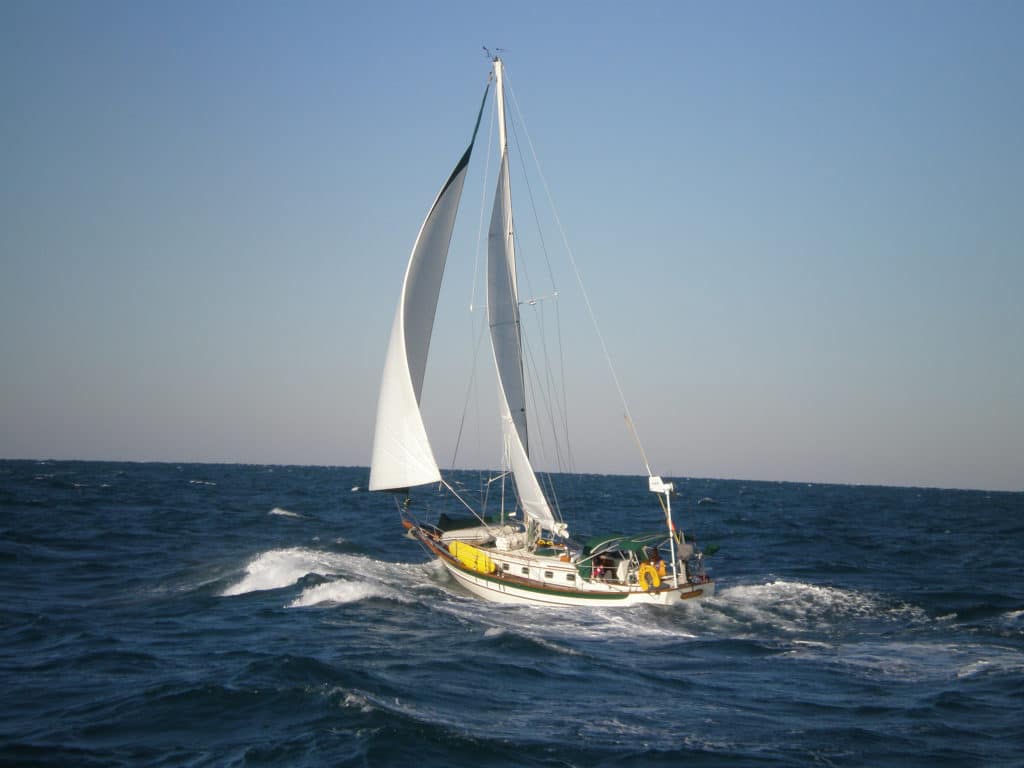
“The Cabo Rico 38 hull shape is the one in which everything came together best,” wrote Bill Crealock in his design notes. He might have changed his mind later in life, considering that the Cabo Rico was introduced in 1977 and he designed many boats after that, but few will dispute that this 38-foot cutter, built in Costa Rica, is flat-out beautiful. From the clipper bow to the sweet sheer to the abundance of honey-colored teak, the Cabo Rico 38 is a boat to inspire the most practical among us to quit their job, buy this vessel, and head for the South Pacific.
Not surprisingly, many people have done just that. Cabo Rico built 200 full-keeled 38s, with most of the production occurring in the 1980s. There’s always a selection of boats for sale for less than $100,000. Cabo Rico was an outlier among manufacturers of the time, building serious cruising boats in Central America instead of Taiwan, but quality control was always excellent. The full keel is slightly cutaway, and the rudder is attached to the trailing edge. The prop is in an aperture and totally protected, but not well suited to backing into a slip. Full-keel boats may make some younger sailors cringe, but the CR 38 has a very soft ride in rough seas and heaves to effectively. It also has a solid fiberglass hull with a layer of balsa for insulation. Sometimes it’s noted that the hull is balsa-cored, but it’s not. After about hull number 40, lead was used instead of iron for internal ballast. The deck is balsa-cored, however, and there’s a substantial bulwark. Items to be wary of are the teak decks (most 38s have them) and the fittings supporting the bobstay.
A true cutter rig, the 38 has just under 1,000 square feet of working sail area and performs better than most people suspect. The staysail was originally set on a boom that cluttered the foredeck and limited sail shape. Many boats have been converted with furling staysails sans the boom — a nice upgrade. When the wind pipes up, the 38 tracks nicely with a reefed main and staysail. I encounter 38s all over the Caribbean. They’re easy to spot; they’re the beautiful boats in the anchorage.
Tayana Vancouver 42
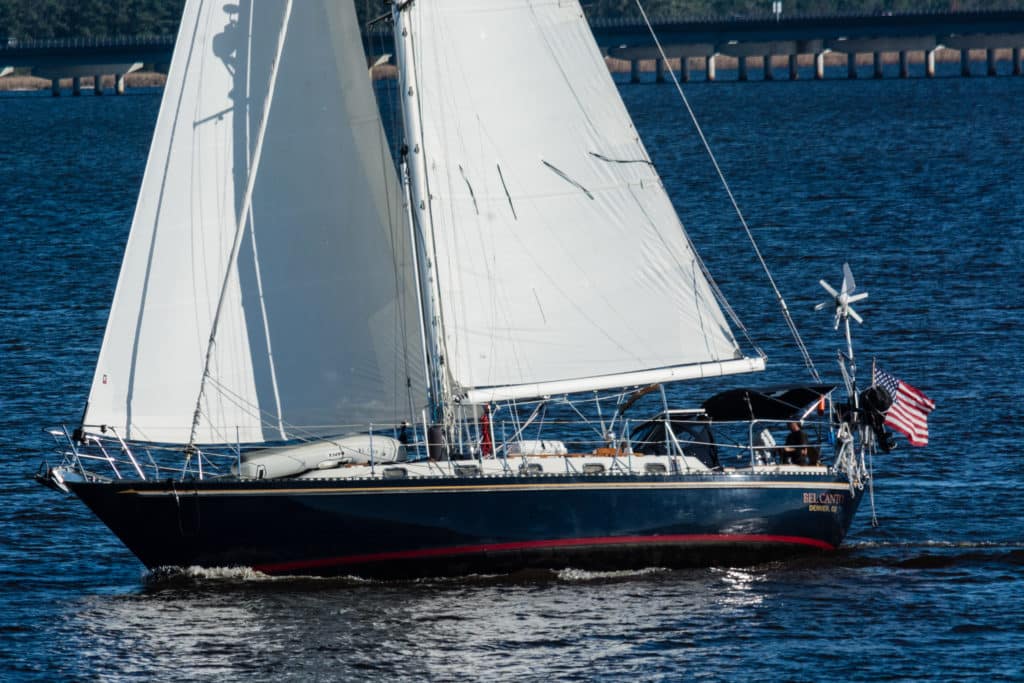
Ta Yang, builder of Tayana sailboats, has been building capable cruising boats forever, it seems. The Robert Harris-designed Tayana Vancouver 42 has been a mainstay of the serious cruising fleet since the day it was launched in 1979, and is still in demand today. The company built 200 boats, mostly in the ’80s and early ’90s, although a few V42s were built into the 2000s. With a bit of digging and some haggling, you can find boats for less than $100,000, but they’re likely to be older models. As of this writing, yachtworld.com has eight V42s listed, with three asking less than $100,000.
I’ve encountered the V42 all over the world, and in my yacht-delivery days, I had the pleasure of delivering a couple of 42s up the East Coast and down to the Caribbean. The double-ended hull shape with a fin-skeg underbody is stiff and seaworthy, if not wickedly fast. Considering the rugged construction, with a solid fiberglass hull and balsa-cored deck, nobody has ever accused Ta Yang of going light on its boats. Ballast is internal iron, a massive single casting that weighs in at 11,800 pounds. Ta Yang has evolved as a builder, and later models included upgrades like vinylester resin and larger Yanmar diesels.
A true cutter, the V42 has a double-spreader rig and is heavily stayed. The seagoing deck is cambered to shed water. Teak decks, with all their virtues and vices, were common; I’d look for a boat that’s been de-teaked. Like the Corbin 39, the V42 came with either a center or aft cockpit, although most boats were aft-cockpit models. The aft cockpit is deep and secure, if a bit tight due to volume sacrificed by the canoe stern. The center cockpit is cramped but offers excellent visibility. The interior is lovely, with exquisite Taiwanese joinery. Although interior arrangements vary because Ta Yang encouraged owner input, across the board, this is a friendly boat for living aboard. The aft-cockpit model includes one head and a traditional layout with excellent light and ventilation. The center-cockpit model features a large owner’s stateroom aft.
Wauquiez Pretorien 35
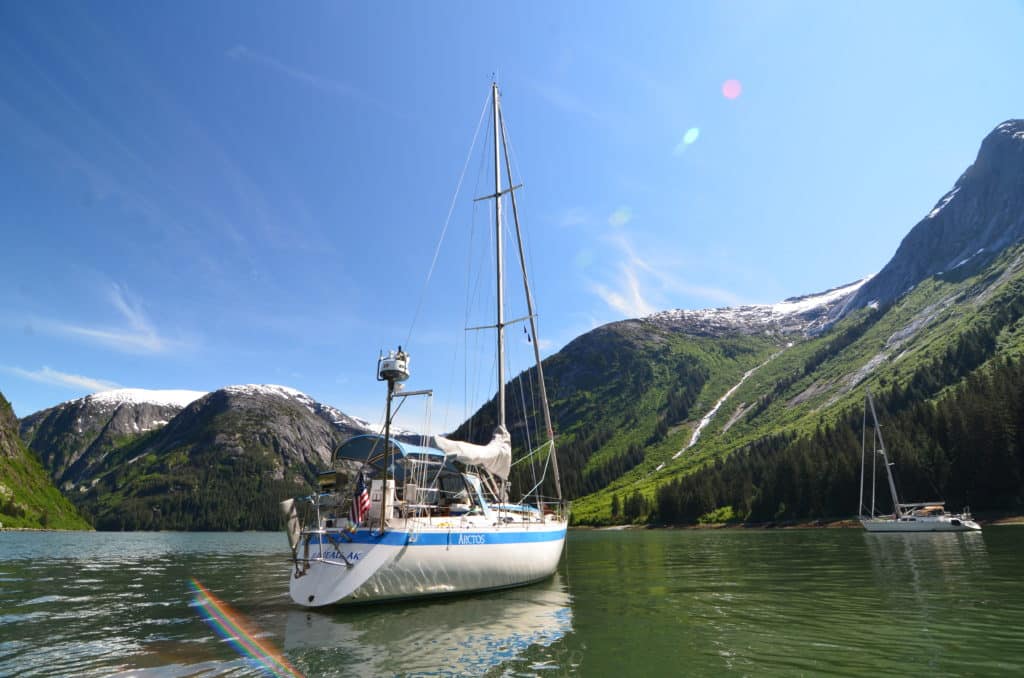
The Pretorien 35 does not pay homage to tradition. The Euro-style low-slung wedge deck and flattish lines were thoroughly modern when the Pretorien was launched in 1979. Sure, there are IOR influences in this well-proven Holman & Pye design, including a slightly pinched stern, cramped cockpit, and a high-aspect, short-boom mainsail that results in a large foretriangle. But a small main is easy to handle offshore, especially in squally conditions, and a large poled-out furling genoa provides a low-stress way to cross oceans. The test of a design is revealed long after the launch, and the Pretorien has aged brilliantly. It’s often mistaken for a Swan or Baltic. Famed voyager and author Hal Roth chose a Pretorien for his last boat.
Below the water, which is what really matters at sea, the Pretorien pushes the right buttons for serious sailing. A fine entry provides enough of a forefoot to prevent pounding in lumpy conditions, and as on the Valiant 40, the fin keel incorporates a stub to which the external ballast is fastened. The rudder is mounted well aft for excellent steering control, especially on a deep reach, and is tucked behind a narrow but full-length skeg. The Pretorien displaces 13,000 pounds, of which 6,000 pounds is ballast, translating to a stiff, seakindly boat.
The construction is superb. The solid fiberglass hull includes longitudinal stringers that stiffen the panels and encapsulate the bulkheads. Tabbing and fiberglass work is first-rate throughout. Wauquiez was one of the first builders to use solid laminate beneath high-load deck fittings. The side decks are wide and, with the chainplates well inboard, easy to navigate. The interior arrangement is conventional, but ample beam amidships helps create a surprisingly spacious feel below.
There were 212 Pretoriens built during a seven-year production run, so there’s usually a good selection of boats on the used market. Today’s strong dollar makes European Pretoriens an excellent value.
Gulfstar 44
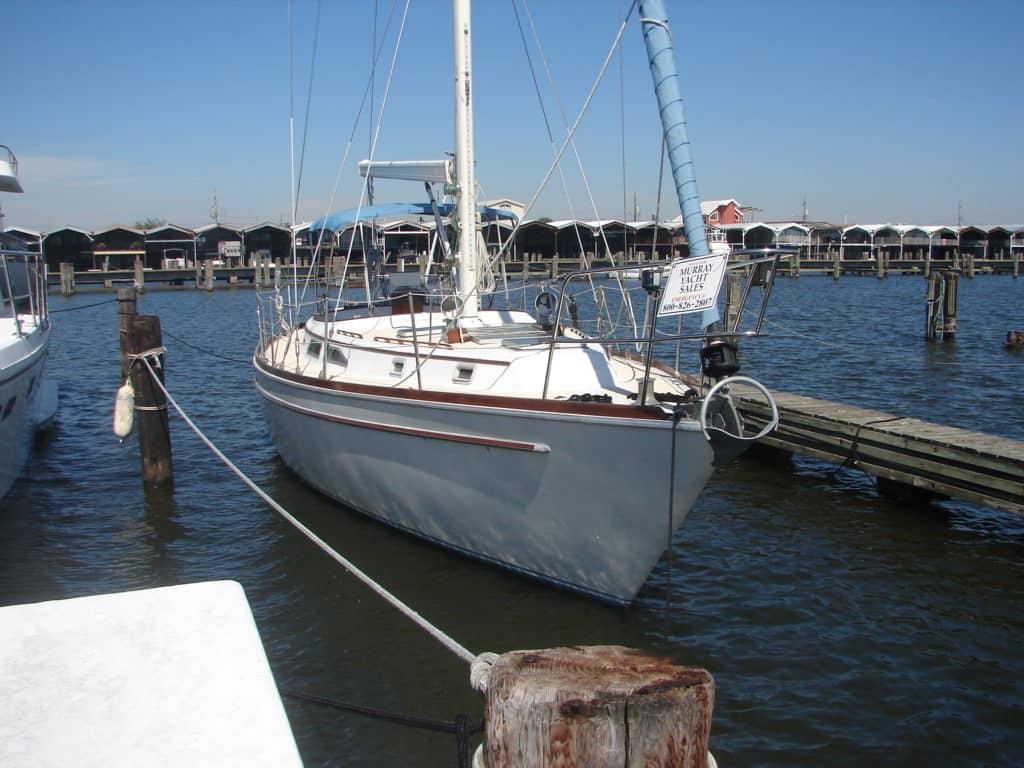
Gulfstar had a terrible reputation in the early ’70s: It was infamous for producing wide-body motorsailers with tiny rigs and chintzy Formica interiors. Company founder Vince Lazzara was adept at reading market trends and upped his game in the late ’70s and ’80s. Lazzara, who also founded Columbia Yachts, was a veteran of the production-sailboat wars and realized that buyers were demanding high-quality boats that sailed well. The Gulfstar 44 was launched in 1978, and 105 were sold before the company started producing the Hirsh 45 in 1985.
Some mistake the G44 for a Bristol, and it has a similar profile, right down to the teak toerail and raked cabin trunk. A sleek center-cockpit design, the hull shape features a 5-foot-6-inch fin keel, a skeg-hung rudder and moderate proportions. I know the boat well, having delivered one from Bermuda to Annapolis and another from Fort Lauderdale to Boston. It has a nice ride in lumpy seas and powers up when the big genoa is drawing on a reach. The construction is typical of the time, with solid fiberglass hulls and cored decks. Gulfstars were known to blister, and it’s likely that any 44 you find will have had an epoxy bottom job along the way — and if it hasn’t, it will need one. The keel-stepped spar has an air draft of 55 feet. Some owners have modified the sloop rig with a staysail. The cockpit is roomy, especially for a center-cockpit design, although there’s not much of a bridgedeck. All sail controls are led aft. Lazzara was an early proponent of this feature, and the boat is user-friendly overall.
The interior sells the boat. It’s nicely finished in teak, and the layout is made for living aboard. The aft cabin includes an enormous double berth with an en suite head and stall shower. The main saloon is spacious and well ventilated, although beware of the plastic opening portlights. If you are looking for a comfortable, well-built center-cockpit cruiser but can’t find one that you can afford, track down a Gulfstar 44; you’ll be pleasantly surprised.
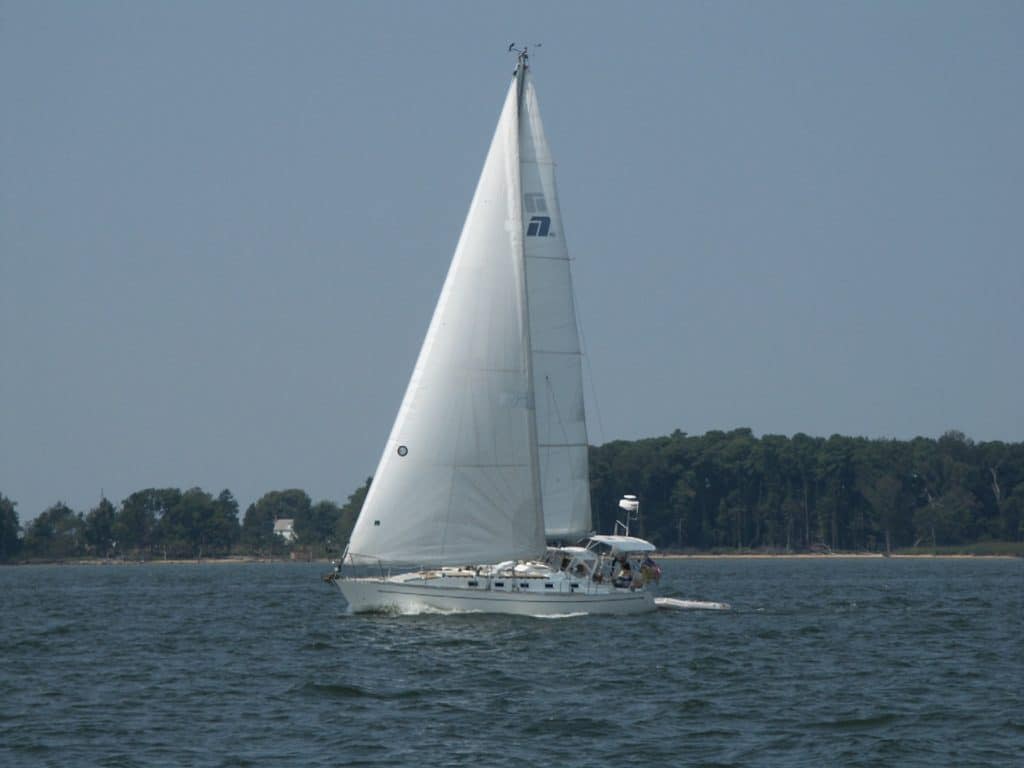
Any list of bluewater cruising sailboats must include a Robert Perry design. I could have easily put together nine Perry boats for this list. The Nordic 40 may surprise some, especially because 40 feet is an iconic length, bringing to mind such boats as the Valiant 40, Hinckley Bermuda 40, Bristol 40, Pacific Seacraft 40, Passport 40 and others. The trick is finding a 40-footer for less than $100,000. Nonetheless, the Nordic 40 and its larger sister ship, the 44, are among my favorite boats.
Based in Bellingham, Washington, Nordic produced world-class yachts during its brief production run in the 1980s. Only 40 Nordic 40s were launched between 1982 and 1987, but they’re worth seeking out on the used-boat market. The 40 features the classic double-ended Perry hull shape, with a fine entry, a deep and powerful fin keel, a skeg-mounted rudder positioned well aft, and a reverse transom. Freeboard is moderate and the sheer line is subtle, but to my eye, with its double-spreader rig and gently sloping deck line, the boat is poetry in the water.
The hull is solid fiberglass and the deck is balsa-cored, with solid laminates below loaded-up deck fittings. Original boats came with Navtec rod rigging and a hydraulic backstay, but many have been upgraded by now. Sail-control lines are led aft to the compact but functional T-shaped cockpit. The traveler is forward of the companionway, allowing for a cockpit dodger. The Nordic 40 is nimble in light to moderate breeze but can also stand up in a blow and heave to decently.
The interior is well suited to a cruising couple. It’s really a two-person boat, with a V-berth forward and large C-shaped galley aft, with plenty of counter space and a huge fridge. It includes the normal deft Perry touches — excellent sea berths, a separate stall shower and generous tankage. If you do find a Nordic 40 on the used market, be sure to take a hard look at the Westerbeke diesel and the V-drive transmission.
Pacific Seacraft 34
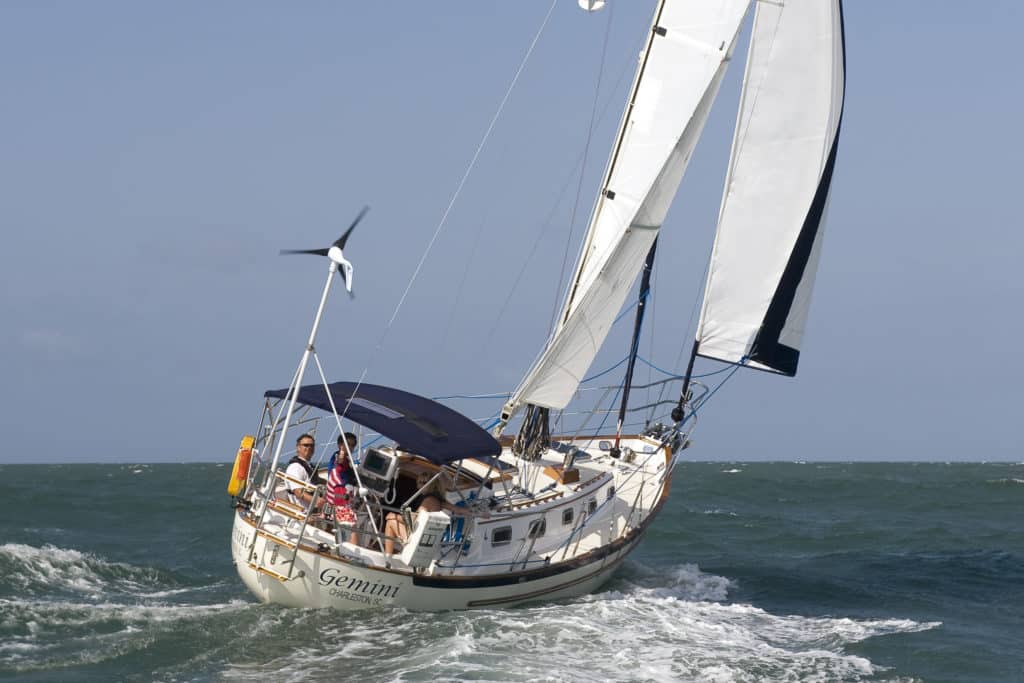
A handsome, nimble and capable double-ender by legendary designer Bill Crealock, the Pacific Seacraft 34 is well proven, with scores of ocean crossings in its wake.
After the boat was first launched as the Crealock 34 in 1979, Pacific Seacraft introduced a fifth model years later, a scaled-down version of the popular PS 37. Though expensive at the time, the 34 was another success story for one of America’s premier builders, and hundreds of boats were built in the company’s yard in Santa Ana, California. There is always a good selection of used boats available for less than $100,000. Another nice perk for used-boat buyers is that the 34 is back in production at the reincarnated Pacific Seacraft yard in Washington, North Carolina, providing an outlet for parts and advice. The company is now owned and operated by marine archaeologist Stephen Brodie and his father, Reid.
The 34 blends traditional values above the waterline with what was then a more modern underbody, with a long fin keel and skeg-hung rudder. A bit hefty at 13,500 pounds of displacement, the design otherwise is a study in moderation, and drawn with a keen eye toward providing a soft ride in a seaway and staying on good terms with Neptune in a blow.
The hull is solid fiberglass, and early decks were plywood-cored before Pacific switched to end-grain balsa. The hull-to-deck joint incorporates a molded bulwark that offers added security when you’re moving about on deck, and a vertical surface for mounting stanchions.
Most 34s are cutter-rigged for versatility but carry moderate-size genoas instead of high-cut yankees for more horsepower off the wind. Down below, the layout is traditional, but the 6-foot-4-inch headroom is a pleasant surprise. The Pacific Seacraft 34 is perfect for a cruising couple.
John Kretschmer is a delivery captain, adventurer and writer, whose own boat Quetzal , a 1987 Kaufman 47, has seen a refit or two over the years. His latest book is Sailing a Serious Ocean: Sailboats, Storms, Stories and Lessons Learned from 30 Years at Sea , also available on his website .
- More: classic plastic , DIY Sailboat Projects , Sailboat Reviews , Sailboats , used boat guide
- More Sailboats

Sailboat Review: Tartan 455

Meet the Bali 5.8

Celebrating a Classic

New to the Fleet: Italia Yachts 12.98

Bitter End Expands Watersports Program
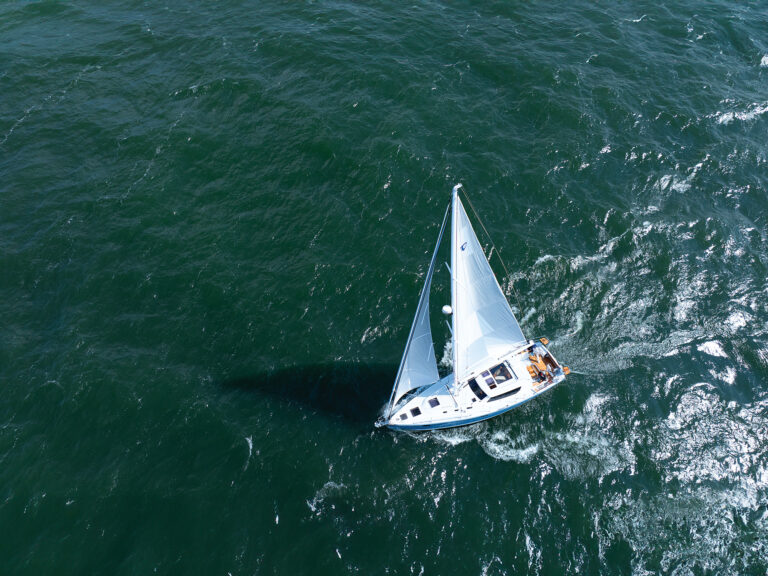
Miracle in a Bowl
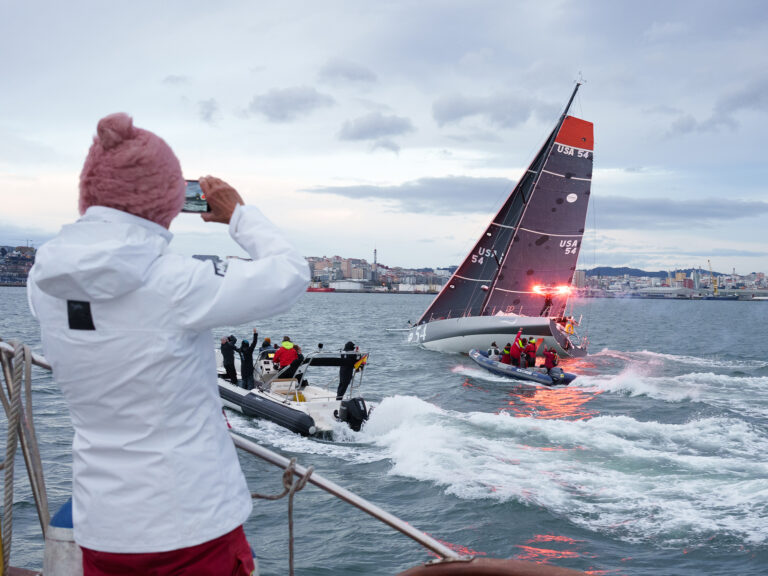
Cole Brauer Completes the Global Solo Challenge
- Digital Edition
- Customer Service
- Privacy Policy
- Email Newsletters
- Cruising World
- Sailing World
- Salt Water Sportsman
- Sport Fishing
- Wakeboarding

IMAGES
VIDEO
COMMENTS
For almost 20 years, we've called this awards program SAIL Best Boats, but this year, we're refining and renaming this program to better and more fairly represent the boats we've selected. Restricting boats to categories and labels—such as Best Cruising Monohull 30-40 feet and Best Performance Monohull 40-50 feet—doesn't bring our readers the full picture.
This is going to be a tough category," said Bill Bolin of the Best Midsize Cruiser 40 to 44 Feet division. "We have three very different but very good boats in this class — the Elan GT5, the Hallberg-Rassy 412 and the Jeanneau Sun Odyssey 440.". To begin, Bolin said of the Jeanneau Sun Odyssey 440, "It's the best Jeanneau I've ...
Slipper 42; Slocum 43; Swan 43 (S&S); Sweden Yachts 42; Trintella 44; Westerly Oceanlord 41; Whitby 42; With plenty of room for a cruising couple to live aboard comfortably, production cruising boats within this size range are understandably very popular with long distance sailors. However, marina charges worldwide seem to take a bit of a hike ...
Hallberg-Rassy 40C. Photo by Ludovic Fruchaud courtesy of Hallberg-Rassy. This boat's sibling, the aft-cockpit H-R 400, earned a Top 10 win last year, so we were excited to see how the venerable Swedish builder would incorporate a center cockpit into this Germán Frers design. The answer is masterfully.
Arcona 435. The Performance Cruiser winner at the 2019 European Yacht of the Year awards, the Arcona 435 is all about the sailing experience. She has genuine potential as a cruiser-racer, but her ...
Sail control lines are led aft to winches at either wheel. The boat our judges sailed had an easy-to-manage self-tacking jib and an in-mast furling main; an over-lapping genoa is available for owners looking for a little more oomph from the rig. The C38 was designed by Cossutti Yacht Design, a firm known for slippery hulls.
Dufour 45e BOTY winner. "In terms of sailing performance, this was one of the top boats that we tested.". Tim Murphy Billy Black. When it came time to pick a winner in the 40-footer category, the BOTY judges had to decide between three relatively similar performance-oriented boats; two were actually built by the same company.
The new Dufour 41 comes quickly in the wake of the Dufour 37, one of SAIL 's Top 10 Best Boats of 2023. Both draw their DNA from their bigger sister the 470 launched two years ago, with the same sheer line and chine that enables the boat to carry maximum volume forward on a narrower profile under the waterline.
Lagoon 380. The long-time best-seller from the world leader in catamarans, with more than 1,000 produced over almost 20 years from 1999. With its characteristic vertical windows, the 380 and its ...
Practical Sailor new boat review: Hunter 45DS. Sailboats Over 40ft November 17, 2009. With the requisite fanfare, Hunter Marine unveiled its latest large auxiliary model, the Hunter 45DS (initials stand for "deck saloon") in late 2007.
The best bluewater sailboats under 40 feet. 1. The Westsail 32. Westsail 32. Photo credit: sailboat data.com. The Westsail 32 is one of the most iconic bluewater cruisers. Built by the Westsail Corporation in the 1970s, this plucky, small sailboat has developed a cult following over the decades. Since 2009, 19 have set out to cross the Pacific ...
Activities to Enjoy on Your Next Sailing Yacht or Powerboat Trip . 14.08.2020. news. Oceanis 40.1 and Oceanis Yacht 54: The New Wave of Oceanis Cruising Yachts by BENETEAU. 18.02.2020. All news. Customer Care. Buying a BENETEAU doesn't have to be a daunting task. We have teams of experts to guide you through the entire process - everything ...
Winner best performance yachts 2022 - JPK 39FC. Along with fellow Brittany yard Pogo, JPK has redefined the modern performance cruiser: stiff, stable and efficient to the max. For the keen ...
Toby takes you through X-Yachts' new X4.0, the European Yacht of the Year 2020 performance cruiser winner, showing you why this is the reference point for to...
We compare specifications, dimensions, sail area, and pricing on the most popular 40ft catamarans in 2020. Since 2016, Fountaine Pajot, Lagoon, Leopard, Bali, and Nautitech all rolled out new 40 ft catamaran models in a similar price range that are innovative, spacious, well-built, and comfortable. The latest model to be added to this 40ft array … 40ft Catamaran Models Comparisons Read More »
Arcona 435. X-Yachts X4.9. Figaro Beneteau 3. Hylas 48. X-Yachts Xp55. Lagoon 50. These sailboats provide comfort, performance, and dependability, all important features for your journey. Read on to learn more about the best sailing around the world boats, including their dimensions and key features.
Catalina 275 Sport. Catalina 275 Sport Billy Black. "This is a complete package; it's a good sailing boat and well-thought-out. It's definitely ready for prime time," says Boat of the Year judge Ed Sherman. Click here to read why the Catalina 275 Sport won Best Pocket Cruiser in 2014.
Toby Hodges takes a close look at this muscular racer-cruiser. A sign that brags 'the fastest cruising 40-footer in the world' is a sure-fire way to attract attention. My first impressions of ...
Solo bluewater sailboats are designed to be sailed by a single person, making them ideal for solo circumnavigation or long-distance cruising. You can get the Contessa 32 and Westsail 32 for as little as $30,000. The maintenance and repair costs of the seven boats range from $5,000 to $50,000 per year. Marina fees and insurance can range from ...
The more popular sailing catamarans in the 40-ft range are Lagoon 400S2, Bali 4.0, Leopard 40, Nautitech Open 40, and Fountaine Pajot Lucia 40. We created a chart of each catamaran with a standard spec, ex-factory to compare the specifications and price of each boat. These catamarans compare very similarly on base price but there are a few ...
Duncan Kent chooses a selection of the best sail and motor boats under 40ft most suitable for adventurous cruising along the coast. The Hurley 27/70 has good close quarter handling and tacking agility. Credit: David Harding Credit: David Harding. One of the delights of coastal cruising is discovering and exploring new anchorages, harbours ...
30. Swan 44. A strong, robust cruising boat built for high-seas, blue water adventures, the Swan 44 was designed by Sparkman & Stephens, and the yacht's well-known Finnish manufacturers, Nautor Swan, produced 76 boats in a production run that lasted from 1972-1975.
Tayana Vancouver 42. Tayana Vancouver 42 Dave Backus. Ta Yang, builder of Tayana sailboats, has been building capable cruising boats forever, it seems. The Robert Harris-designed Tayana Vancouver 42 has been a mainstay of the serious cruising fleet since the day it was launched in 1979, and is still in demand today.